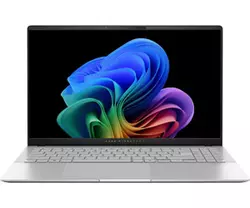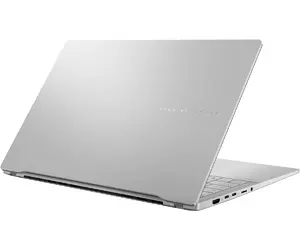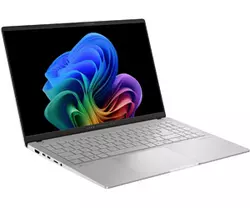This isn't the first time Qualcomm has tried to enter the notebook market. And it seems that this time the attempt turned out to be quite successful. A new notebook ASUS Vivobook S 15 (S5507) with Qualcomm Snapdragon X Elite processor on ARM architecture came to the editorial office of gg for review, and we are going to tell you about it now. The first acquaintance with a Windows notebook on ARM architecture turned out to be extremely interesting. It's worth saying that such laptops not only have the right to live, but also have some extremely important advantages. First of all, it concerns the battery life. ASUS Vivobook S 15 has no problem working more than 10 hours without recharging, which is what you expect from a top business ultrabook, not a 15.6-inch model. The laptop has an excellent 15.6-inch OLED screen with a 120Hz refresh rate, a comfortable full-size backlit keyboard, and plenty of connectors. This is all packed into a pretty good metal case. In terms of performance, the impression so far is not a complete one. On the one hand, in office mode, the laptop works very fast and generally supports the most common programmes, including the Adobe package, Blender, Davinci Resolve. But it is worth remembering that not all applications will work well on the ARM-architecture so far. First of all, this applies to more specialised software. With games, the laptop as a whole copes at the level of modern ultraportable models. But, again, you should not expect to run the entire Steam library.
5 reasons to buy ASUS Vivobook S 15 (S5507):
- Excellent battery life
- Bright OLED-display with a refresh rate of 120 Hz
- Stable performance under maximum loads
- Comfortable operation and a full set of necessary connectors
- Stylish metal case with certification MIL-STD-810H
2 reasons not to buy ASUS Vivobook S 15 (S5507):
- There may be compatibility issues with some applications
- High price
Quick Jump:
- What's in the box?
- What about the look and feel of the ASUS Vivobook S 15 (S5507)?
- How comfortable is the ASUS Vivobook S 15 (S5507)?
- How good is the screen of ASUS Vivobook S 15 (S5507)?
- What about the performance and autonomy of ASUS Vivobook S 15 (S5507)?
- In the dry balance
What's in the package with ASUS Vivobook S 15 (S5507)?
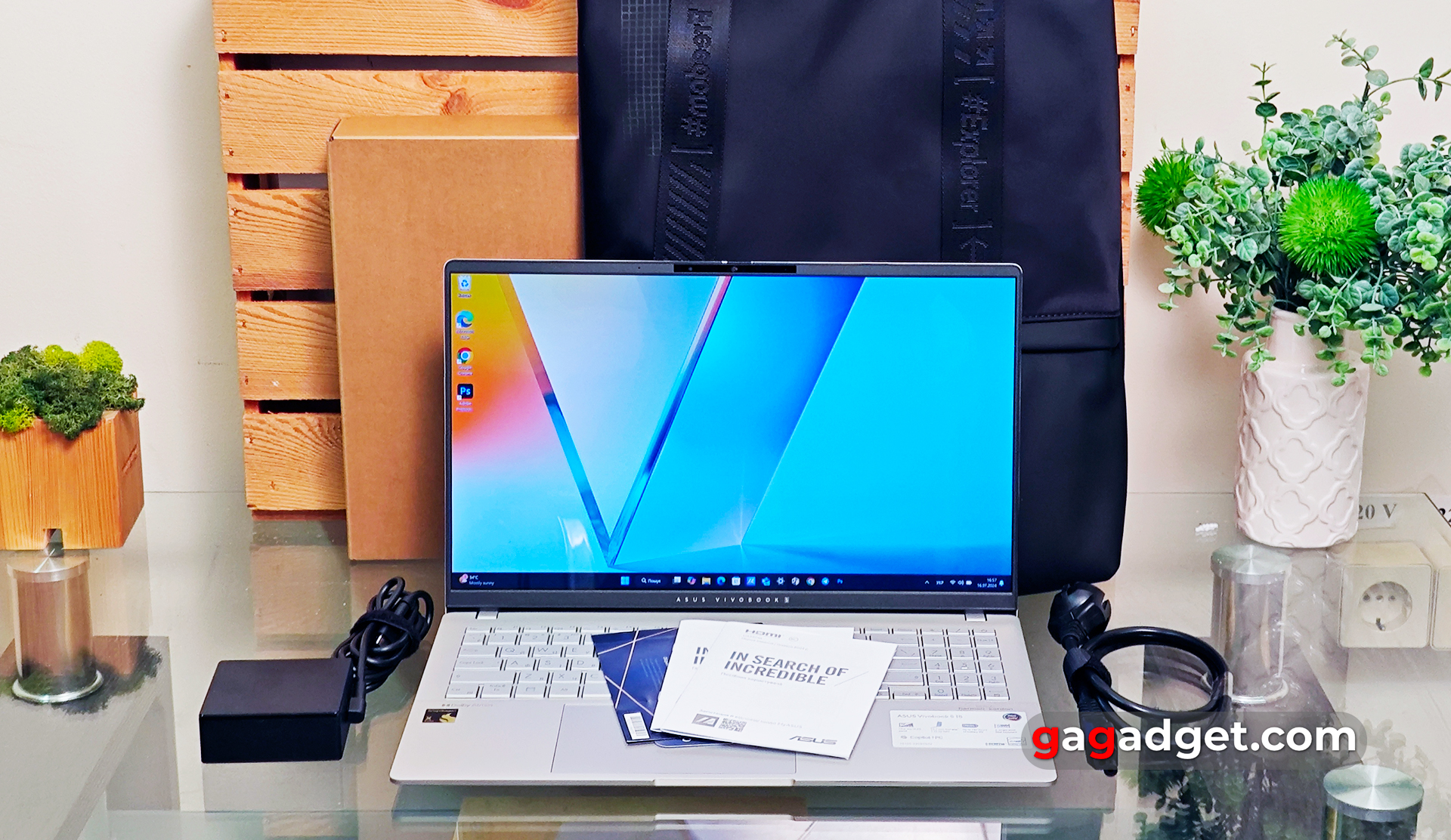
ASUS Vivobook S 15 is packed in a standard mustard-coloured cardboard box with the model name and basic information. Inside there is a notebook, a 90W power supply, a power cable, documentation and a rather unusual ASUS Vivobook 3 in1 bag. It has a water-repellent coating and can be carried as a bag and as a backpack. Inside there are two compartments and a couple of small pockets.
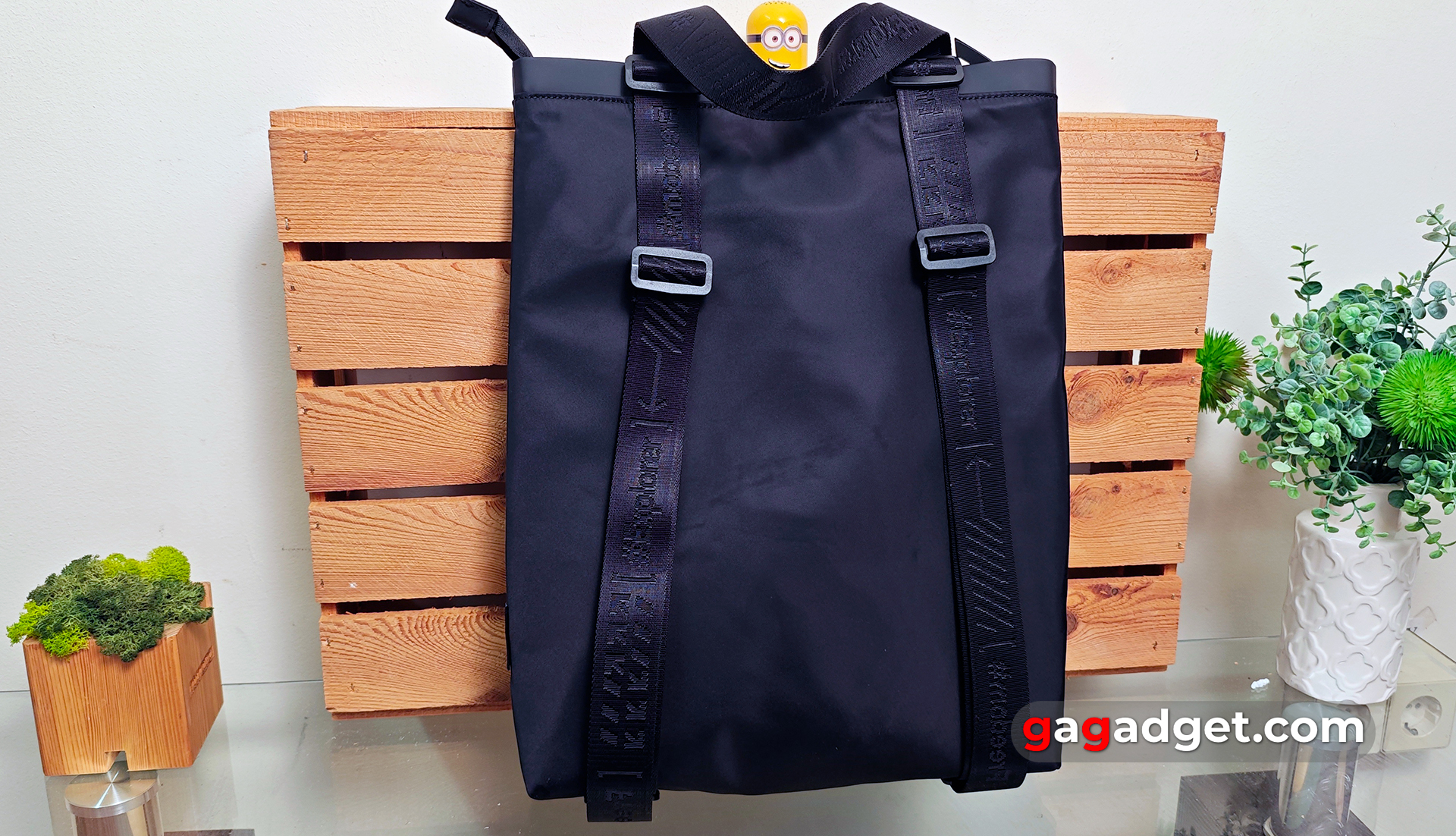
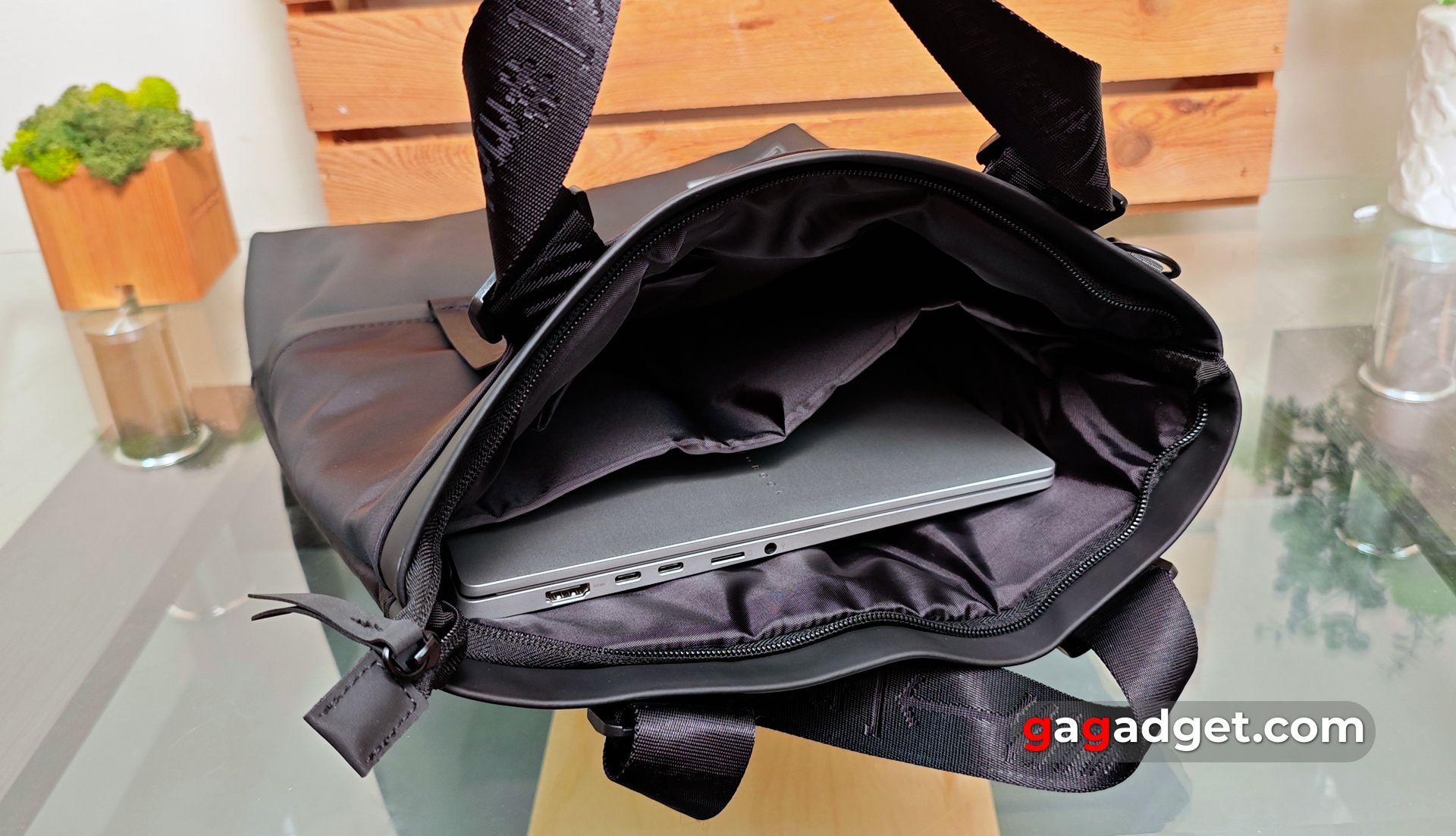

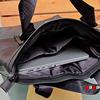
We've seen this a few times already in ASUS notebooks: the inside of the box is perforated. It can be cut off and folded into a stand, which comes in handy both for use and for storing the laptop in an upright position:
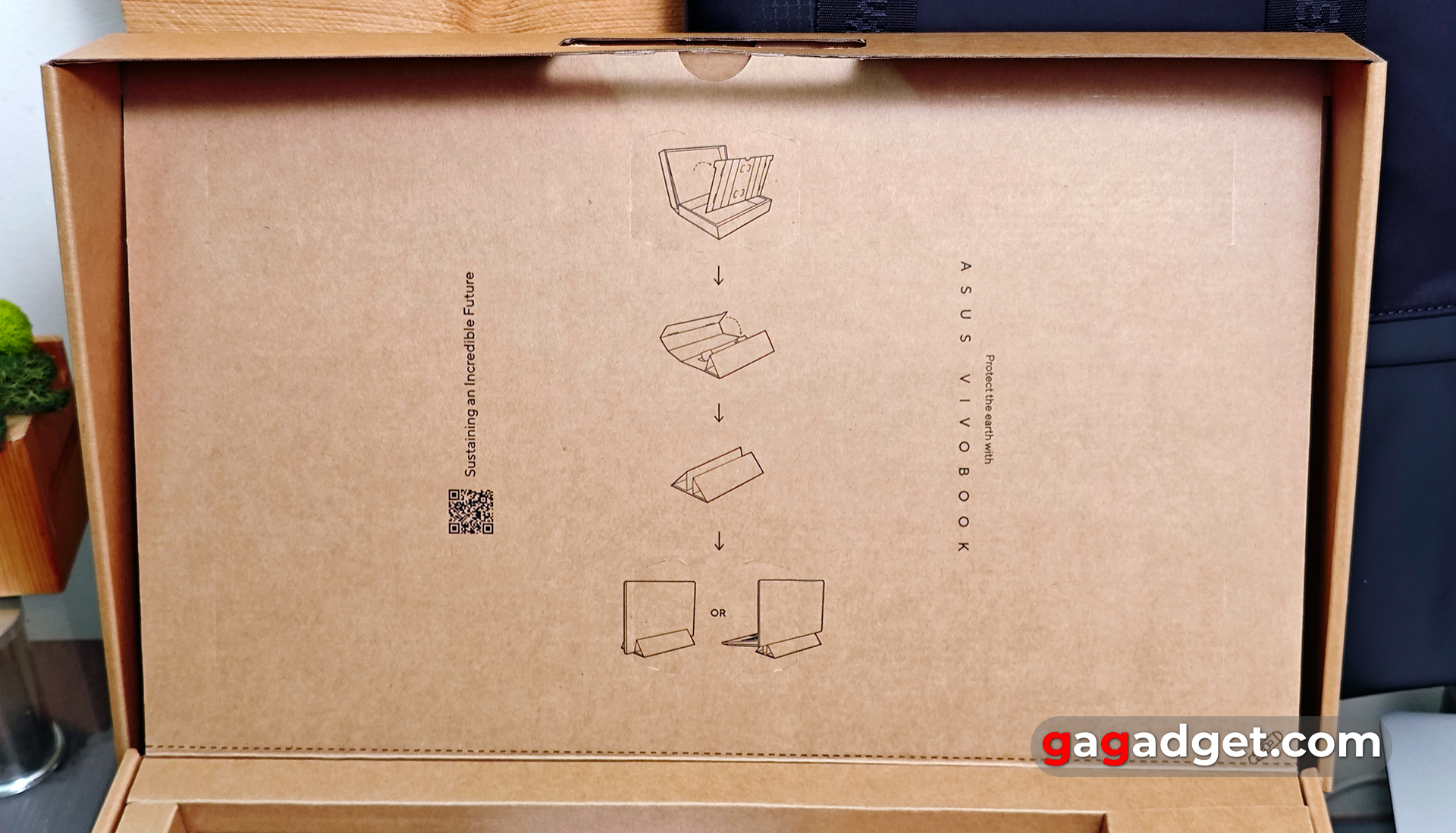
What about the look and design of the ASUS Vivobook S 15 (S5507)?
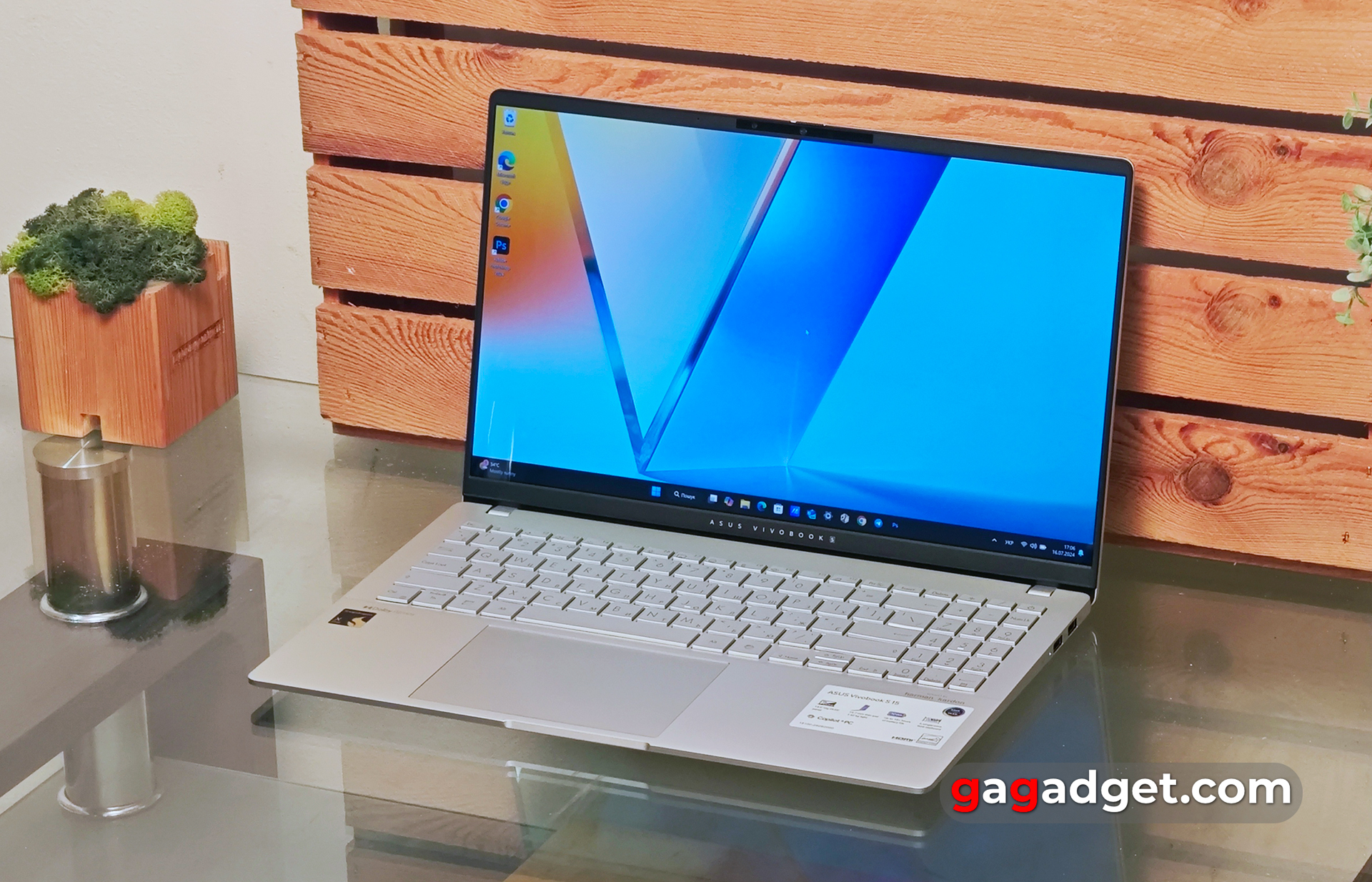
Like all manufacturers, ASUS has different lines of devices in different price categories. Zenbook and ROG - top-of-the-line ultrabooks and gaming laptops respectively. Vivobook - positioned as a slightly more affordable lineup. The design ASUS Vivobook S 15 (S5507) is indeed more neutral and casual compared to the Zenbook. But the laptop looks and feels very nice: the body is made entirely of light grey aluminium alloy. Only the frame around the screen is plastic. From the decorations inside - only the model name under the screen. Outside there is a small engraving with the name of the line on the lid. All surfaces of the notebook have a practical matte coating, on which fingerprints are almost invisible.
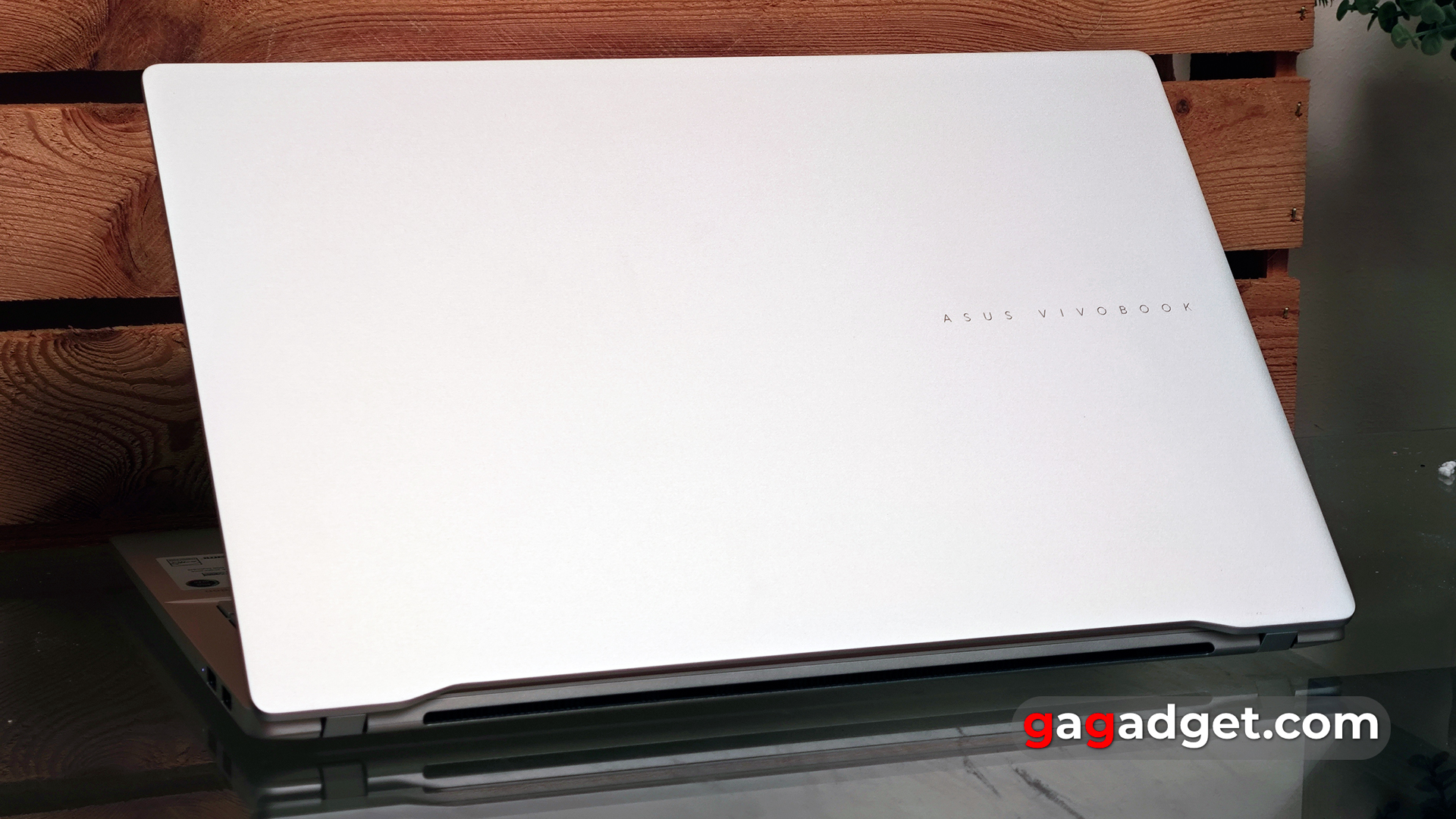
ASUS Vivobook S 15 is equipped with a very good set of connectors. On the left, there's HDMI 2.1 TMDS, 2xUSB 4.0 Gen 3 Type-C with support for DisplayPort and Power Delivery, a MicroSD card reader and a combo 3.5mm audio jack.

On the opposite side are 2x USB 3.2 Gen 1 Type-A and LED indicators.

At the back of the notebook is a wide hot air outlet area and two hinges. At the front there is only a standard cutout for more convenient lifting of the lid.



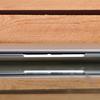
Spaces on the sides of the screen are very thin, at the top - a little wider, about 1 cm. Above the display is a webcam with a resolution of FullHD with a physical curtain, LED indicator, two microphones, as well as infrared camera for biometric identification of the owner.
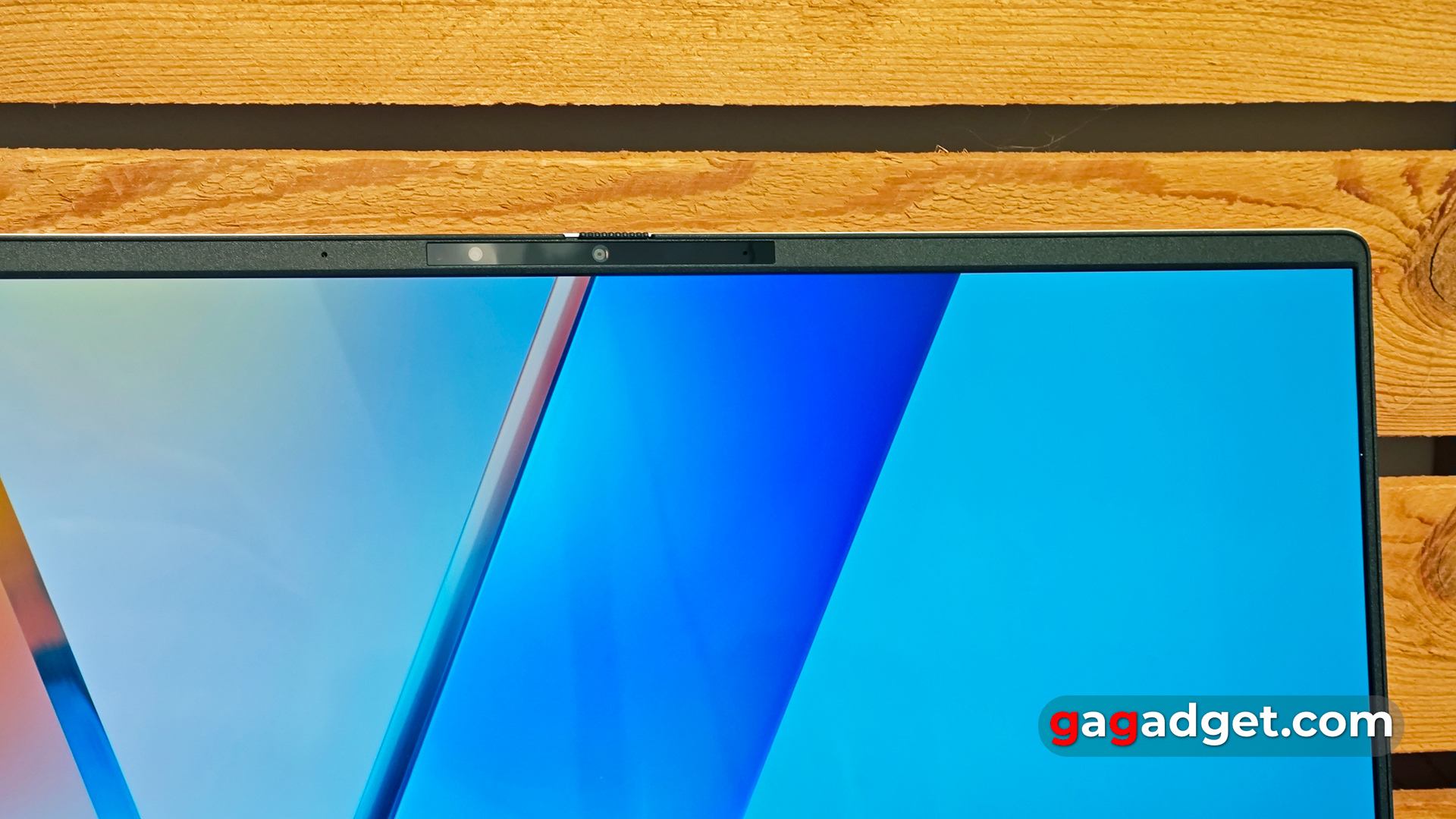
The bottom cover of ASUS Vivobook S 15 has massive rubber feet that prevent the laptop from sliding on the table, a large number of holes for sucking in cold air and stereo speakers. They are placed horizontally, which usually does not affect the sound quality very well.
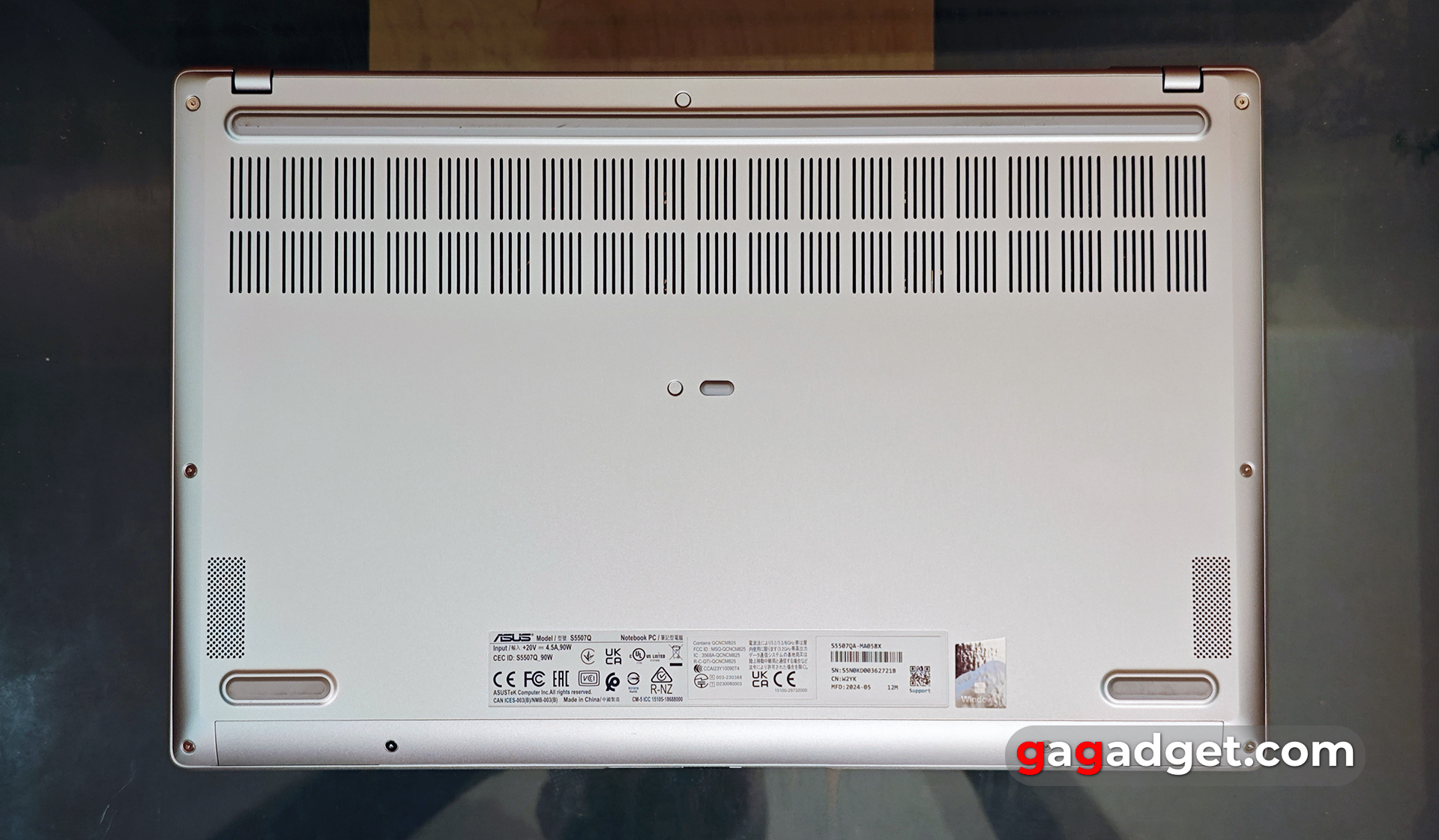
Dimensions of ASUS Vivobook S 15 are: 352.6x226.9x15.9 mm, and weight - 1.42 kg, this is very good performance, as for a 15.6-inch model not top-of-the-line. The notebook will fit into any backpack without any problems and will not burden in daily use. The quality of the case itself is good, the metal panels almost do not sag. But it feels that the metal itself is a bit cheaper than in top-end ASUS Zenbook. The notebook meets the military standard MIL-STD 810H.
How comfortable is it to use ASUS Vivobook S 15 (S5507)?
ASUS Vivobook S 15 can be opened with one hand without any problems. The hinges allow you to open the notebook by 180° and perfectly fix the display in the desired position.
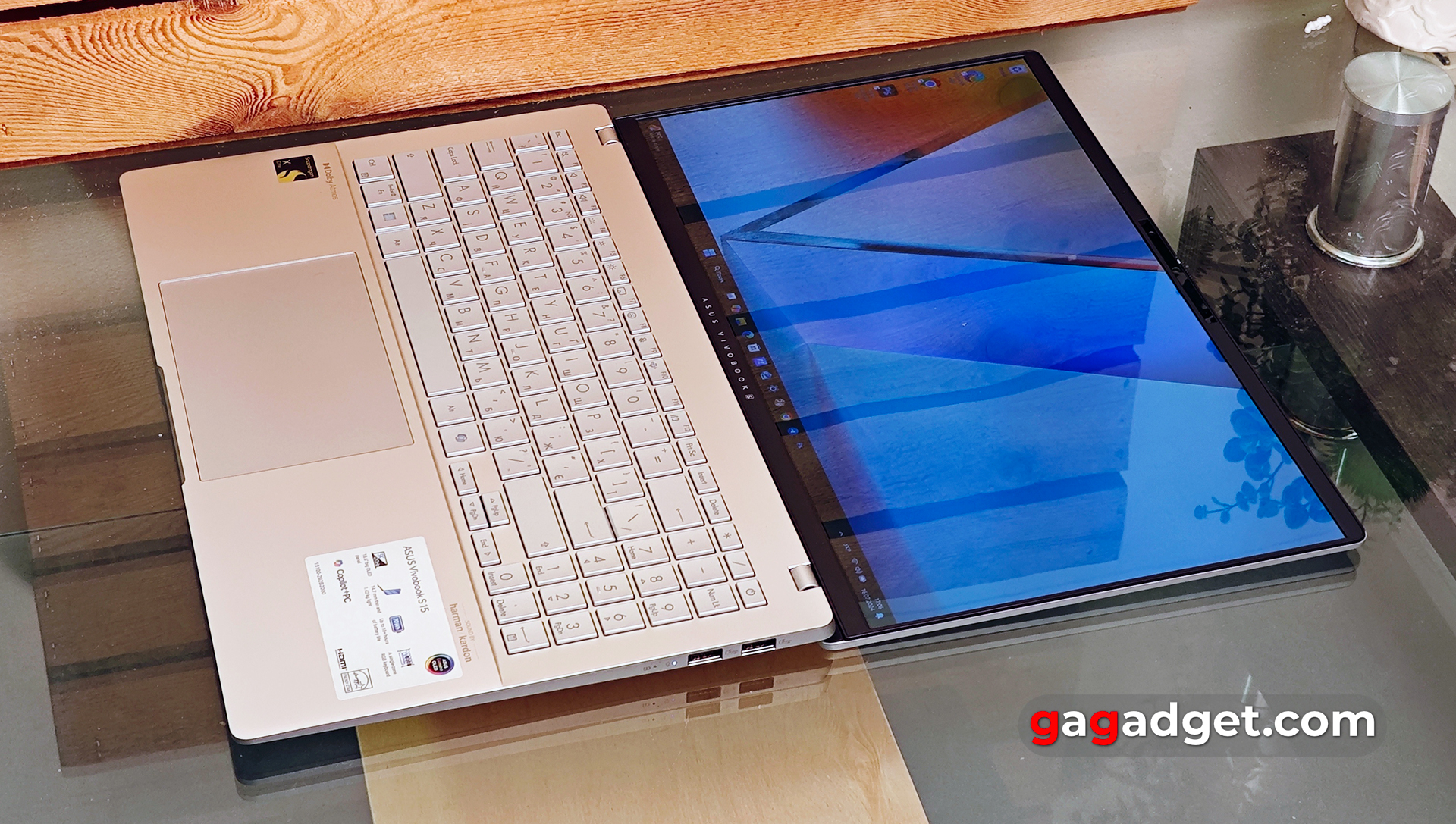
The notebook uses a standard keyboard layout with an additional number pad. It can be useful for those who work a lot in Excel, or use it to enter special characters. The number block is not separated from the main block. Both Shift and Enter are long. The top row of function buttons and arrows are reduced in height. The function row ends with the power button. Next to the navigation block there is a button for quick launch of the AI assistant Copilot. In general, the layout is quite convenient, there were no problems while using it.
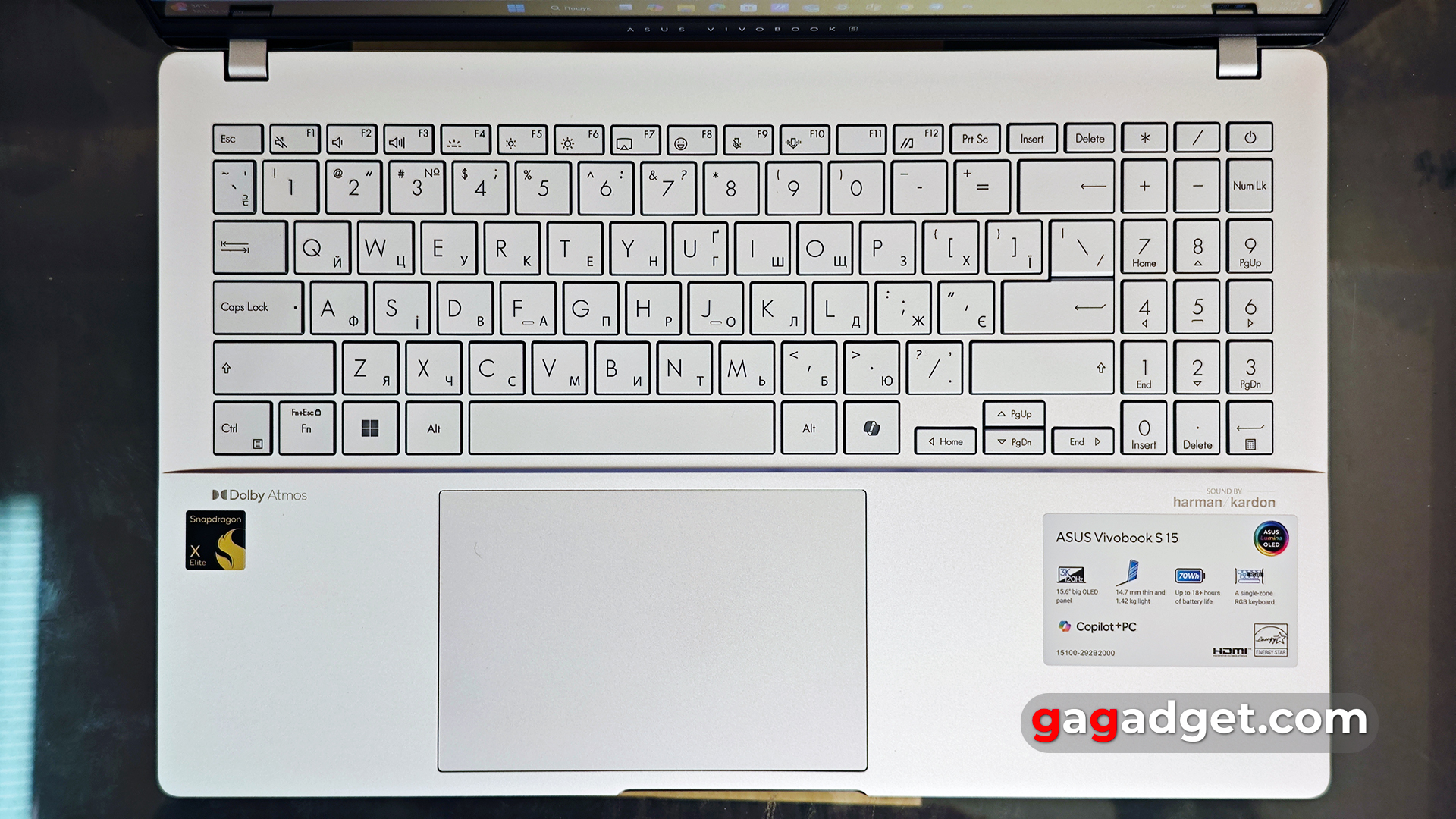
The buttons work completely silently, have a soft, but quite informative stroke. The full stroke of the keys is 1.7 mm. There is a single-zone RGB backlight, that is, you can choose the colour only for the whole keyboard. But in general, RGB in a non-gaming model looks a bit strange.
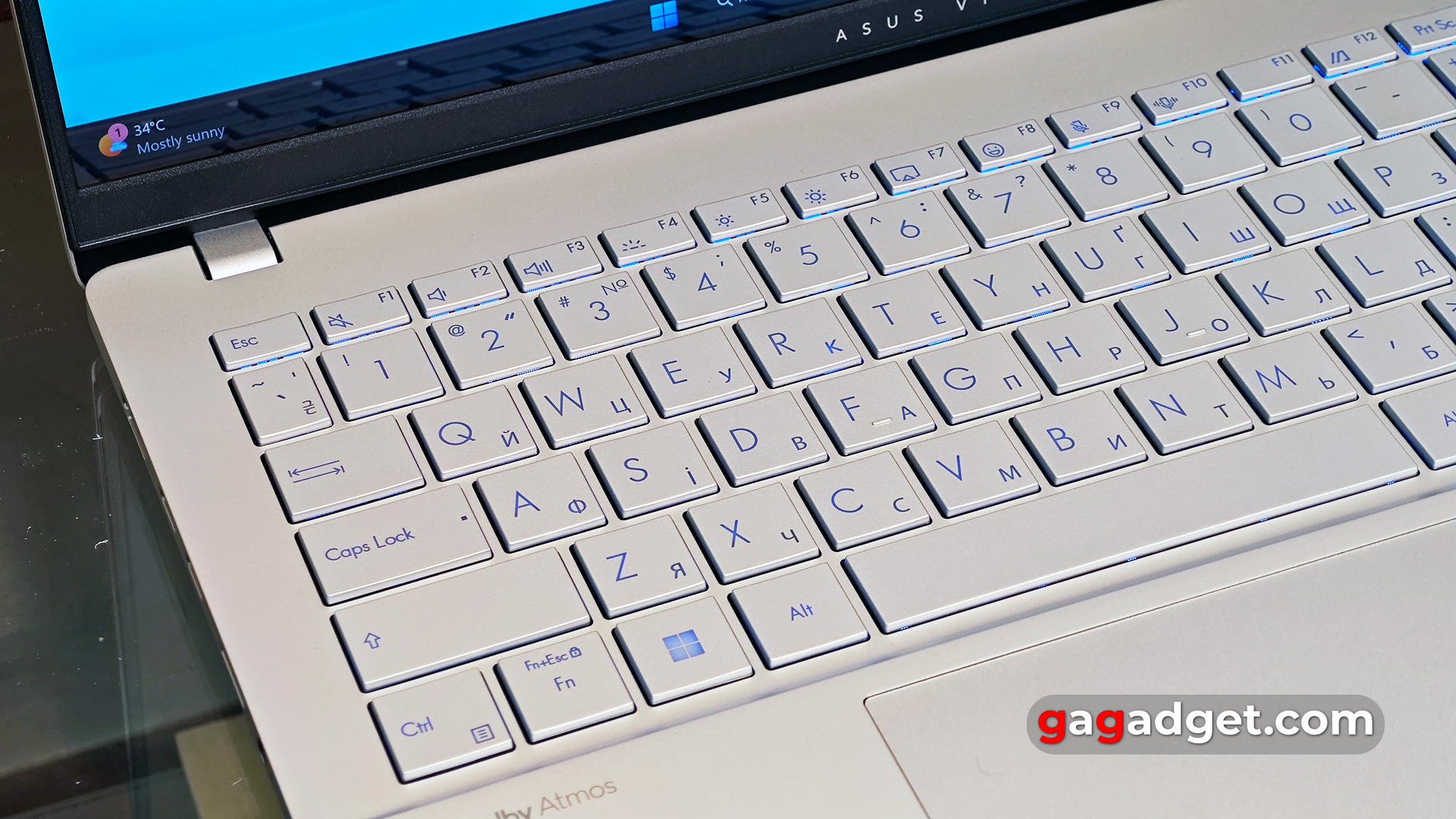
RGB-backlight settings can be found in MyAsus application. For some reason in the Exclusive section. The backlight setting in Windows Dynamic Lighting is also supported
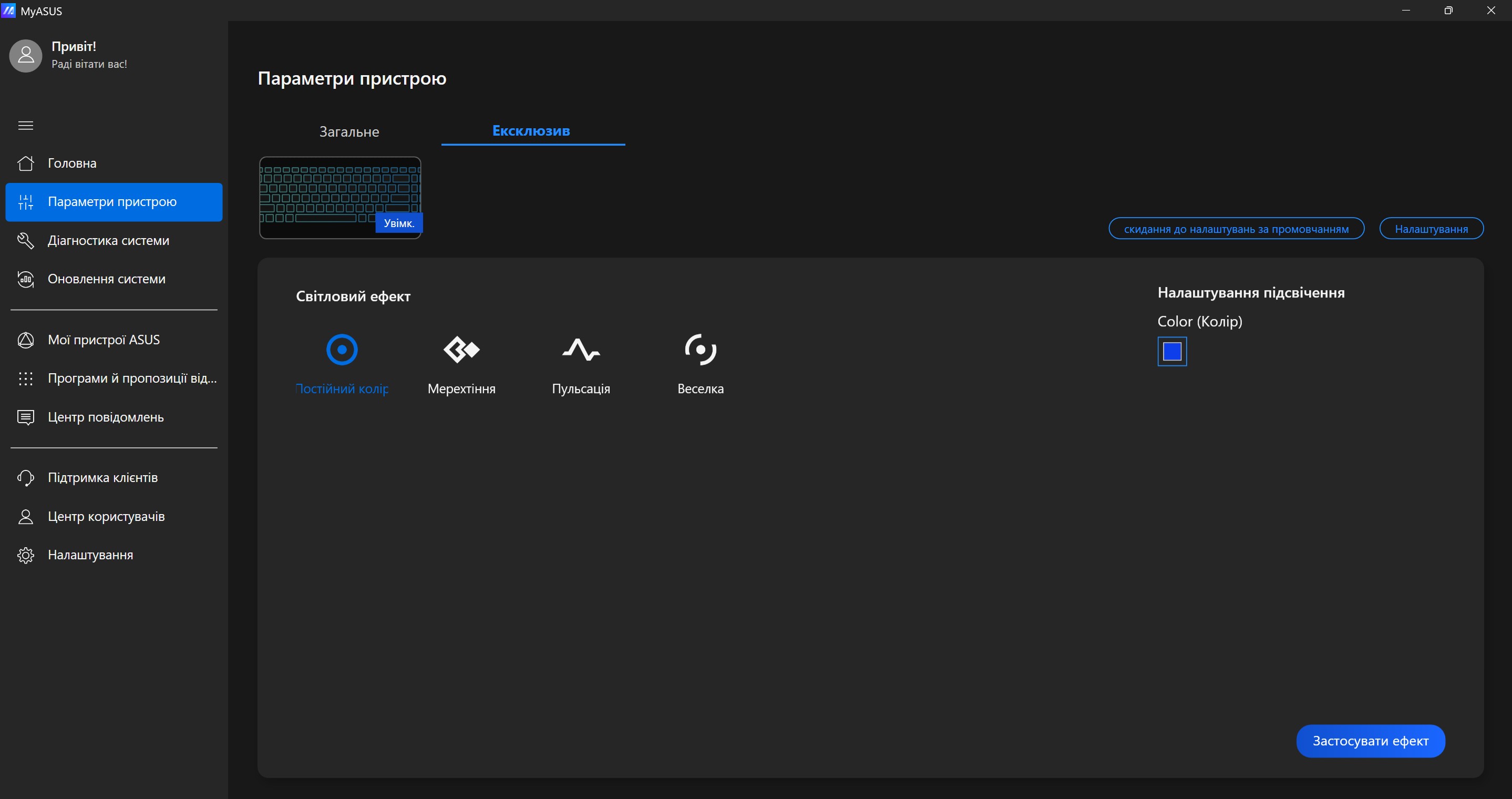
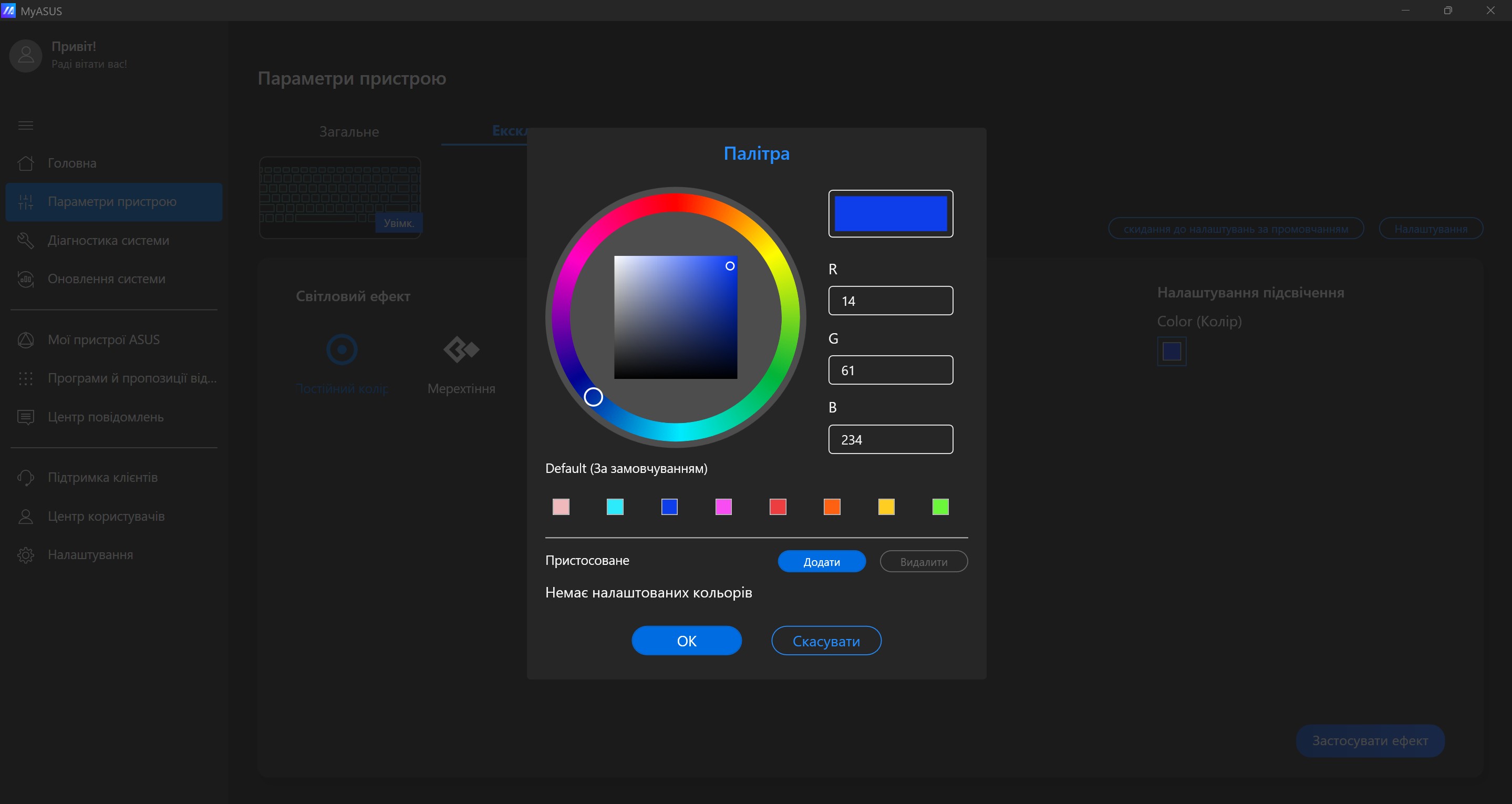


The touchpad of ASUS Vivobook S 15 has large dimensions, good sensitivity and accuracy of cursor positioning, although the coating is not ideal: the finger slides a little worse than I would like. The position is a bit unfamiliar: the touchpad is slightly offset to the left. During the laptop testing the touchpad was quite enough for everyday tasks and basic editing in Photoshop. There was no desire to connect a mouse.

How good is the screen in ASUS Vivobook S 15 (S5507)?
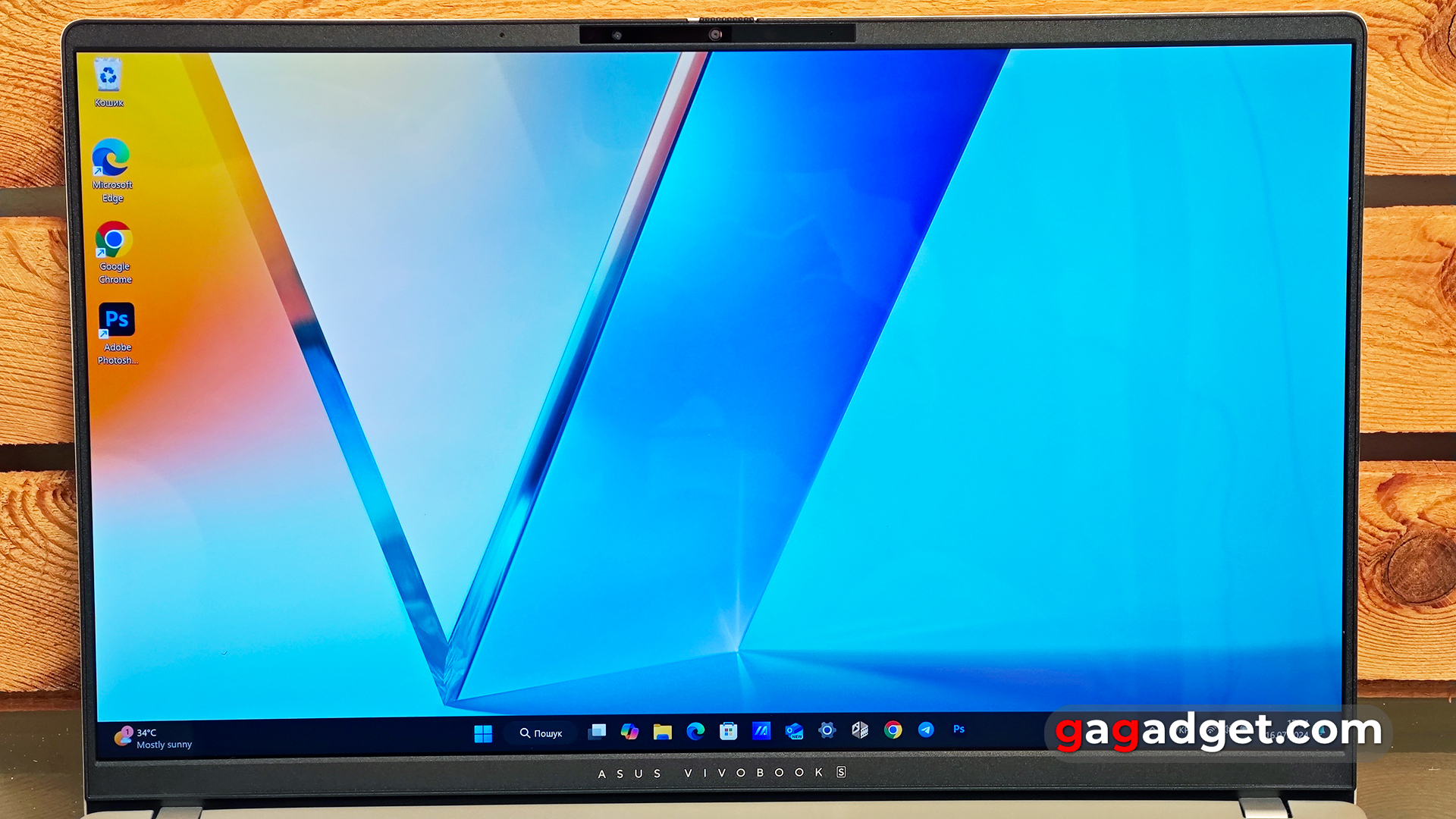
ASUS Vivobook S 15 (S5507) has a 15.6-inch OLED-display with 3K (2880 x 1620) resolution and standard 16:9 aspect ratio. The rather popular 16:10 recently looks more feasible in a laptop like this. But it looks like ASUS has decided to use 16:10 screens only in top-end lineups for now. The pixel response time is 0.2ms and the refresh rate is 120Hz. ASUS promises colour coverage of 100% DCI-P3 space, with the screen capable of displaying 1.07 billion colours. There's VESA Display HDR True Black 600 certification, filtering up to 70% of harmful blue light, TÜV Rheinland Certification, SGS Certification. The maximum brightness when playing HDR content is 600 cd/m². The MyAsus app has many display settings: refresh rate, Splendid colour display modes with different colour gamut options, colour temperature settings, blue filtering and features designed to extend the life of the OLED panel. Pixel Shift, Screen Saver (activated after a certain period of inactivity), taskbar hiding, taskbar transparency, dimming of inactive windows, DC Dimming low brightness flicker elimination, etc.

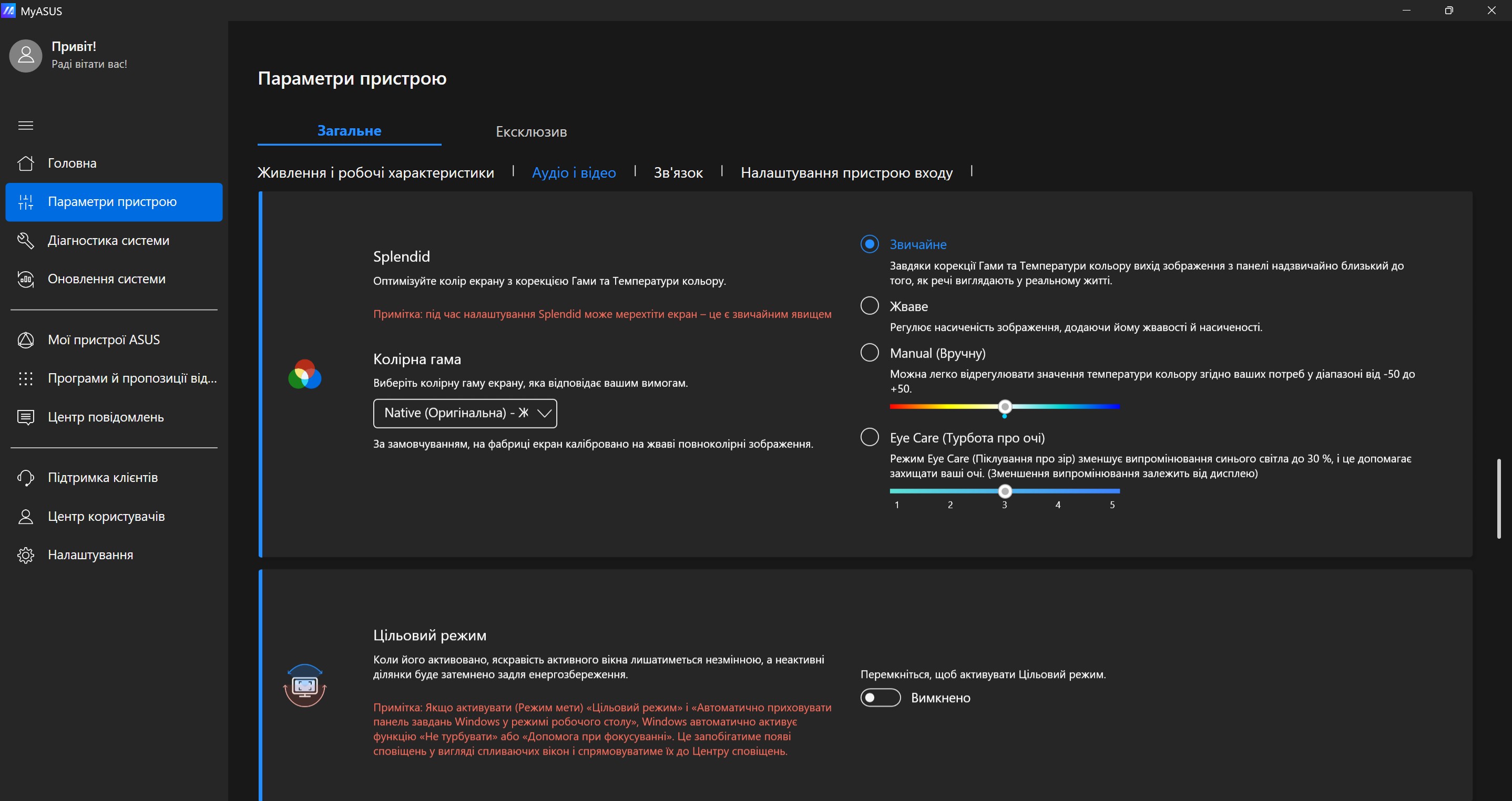
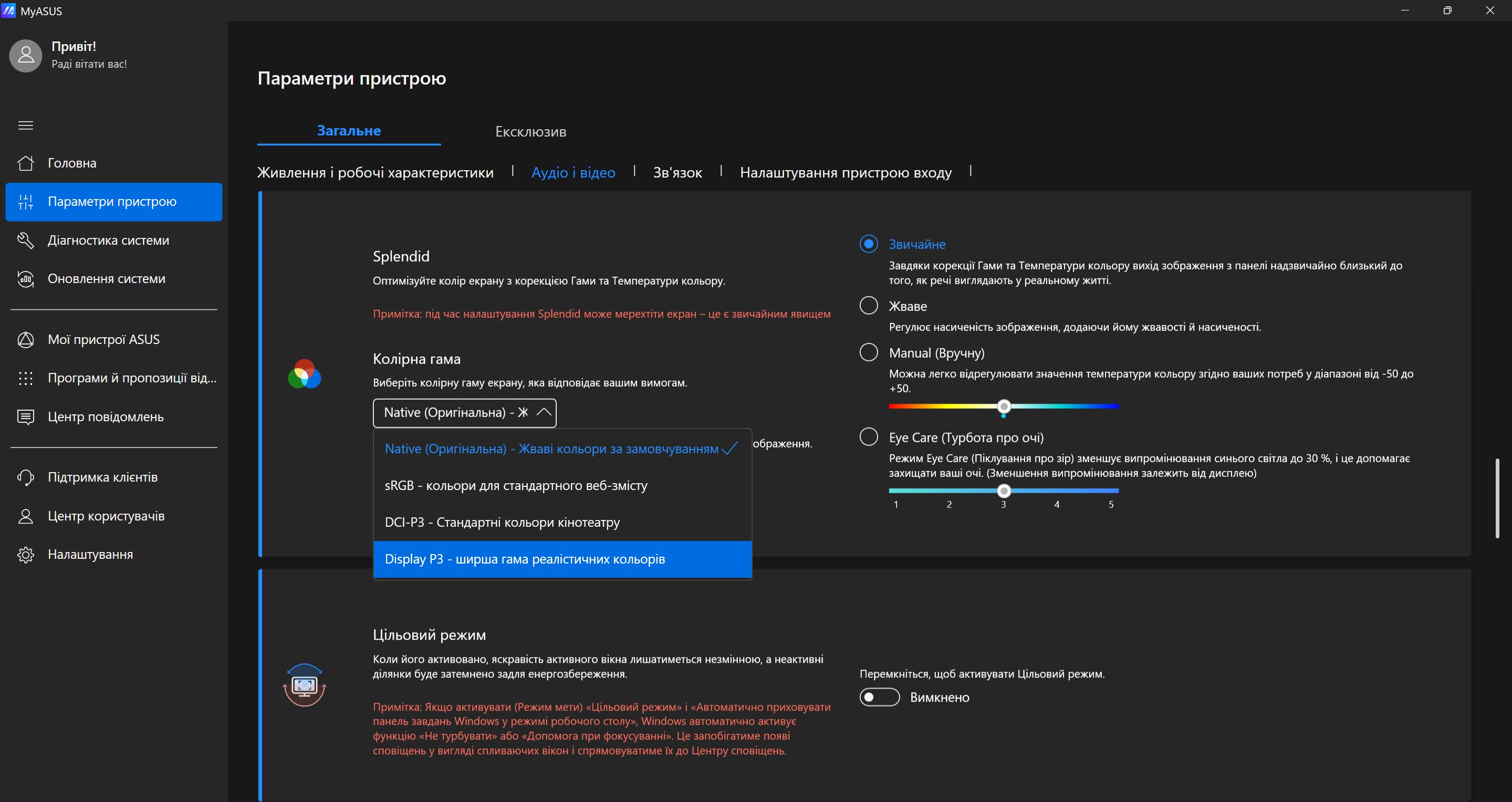



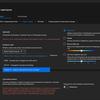

The screen is of excellent quality: very bright, with saturated colours, maximum viewing angles and true black. For users who find the extended colour range too saturated, there is an option to use sRGB. Hardware measurements showed that the maximum brightness is 572.465 cd/m², which is well within the claimed figures. The colour gamut is significantly wider than sRGB. The colour temperature is a bit overestimated, so the picture is accentuated on cool shades. But the measurements were made at standard settings. There is an option to manually adjust colour temperature, as well as automatic adaptation of colours to ambient light.
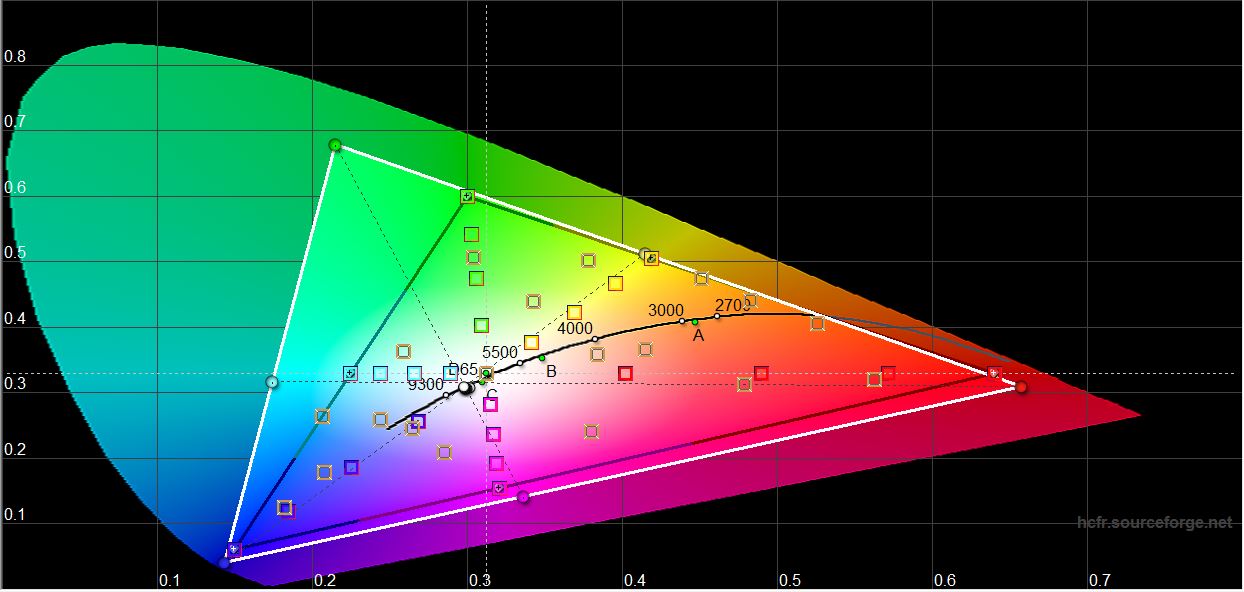
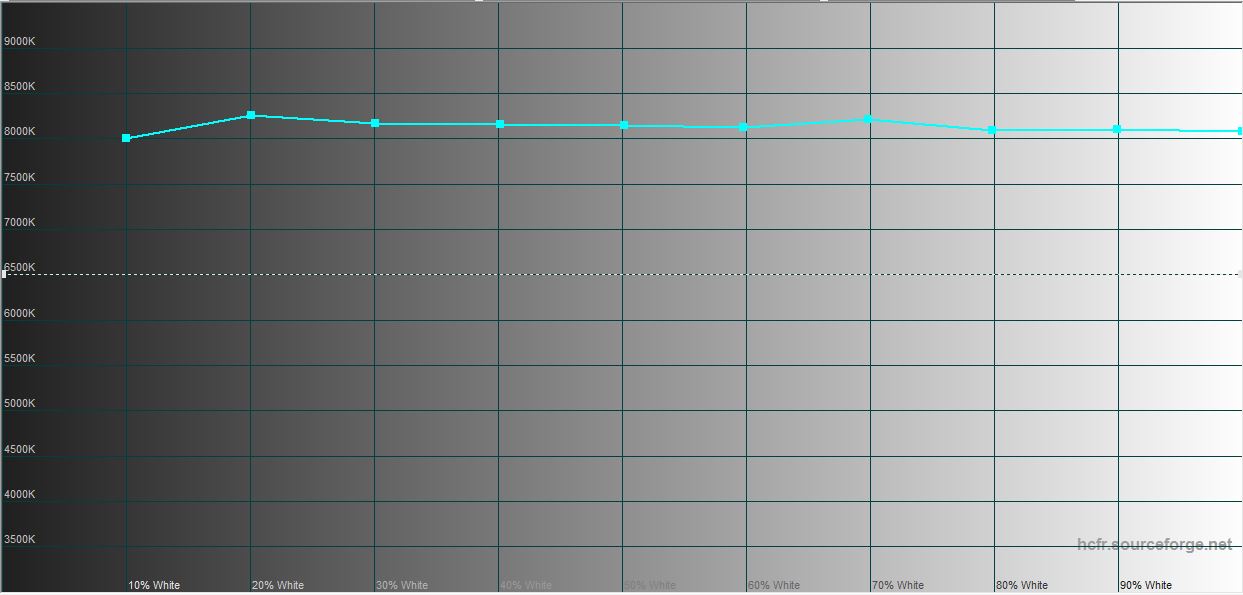
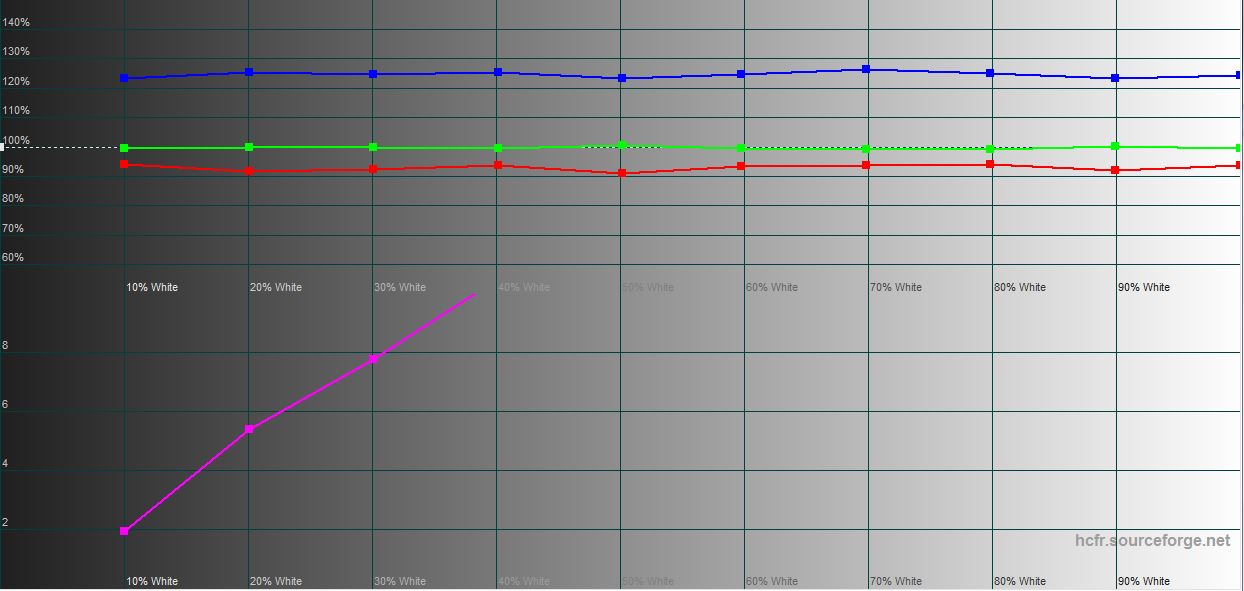
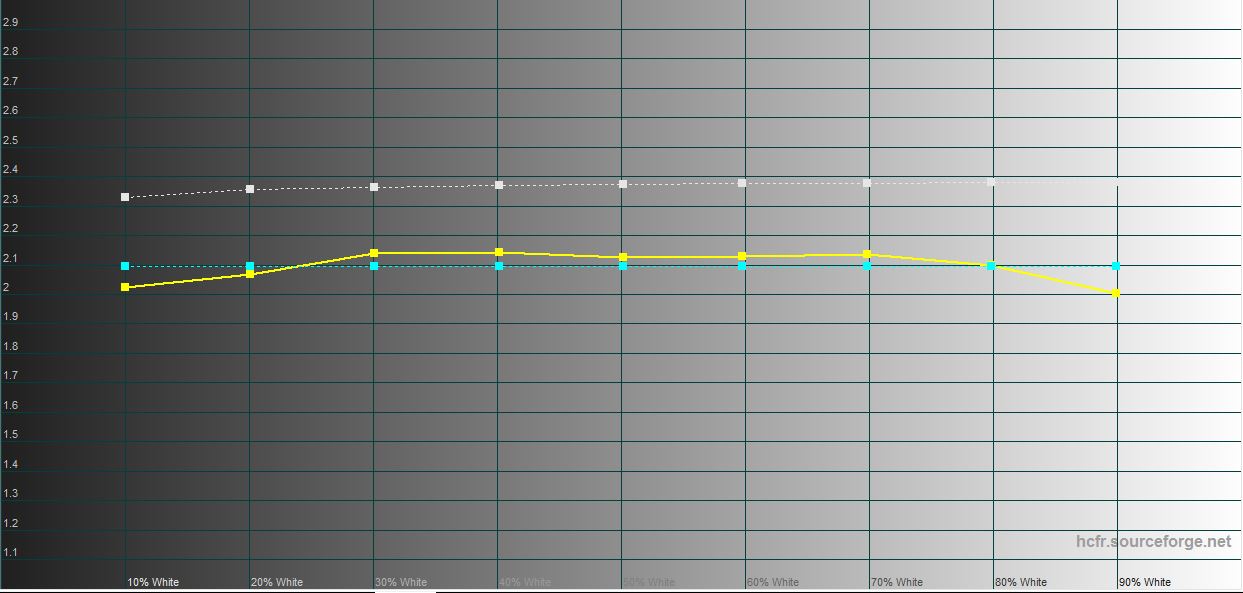
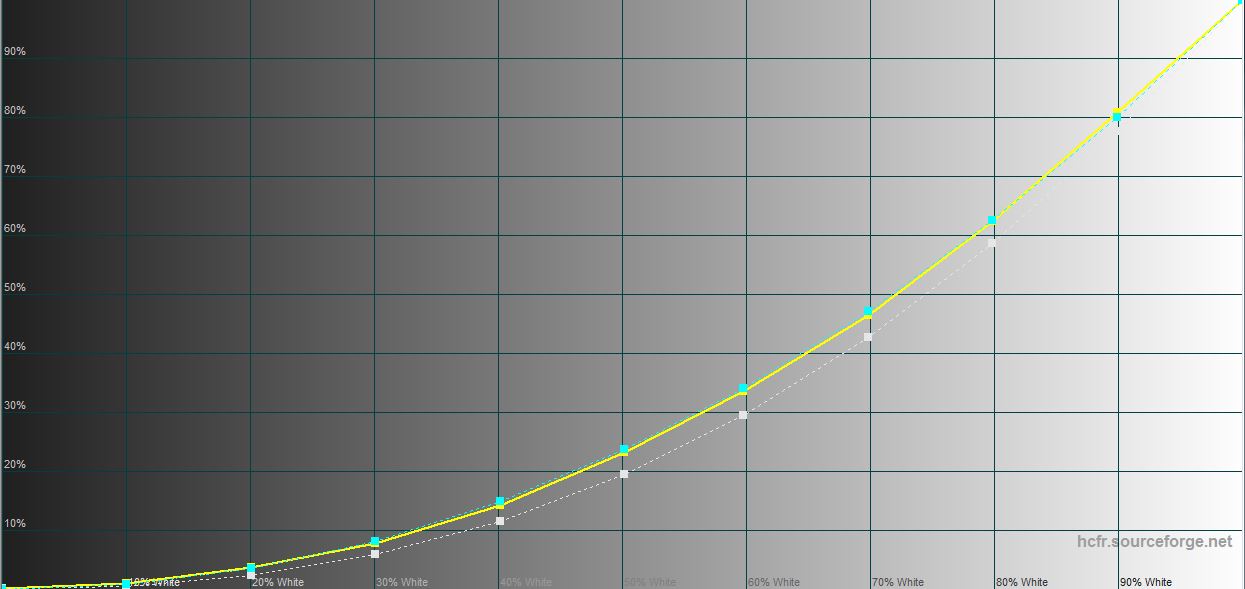

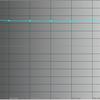



What about performance and battery life of ASUS Vivobook S 15 (S5507)?
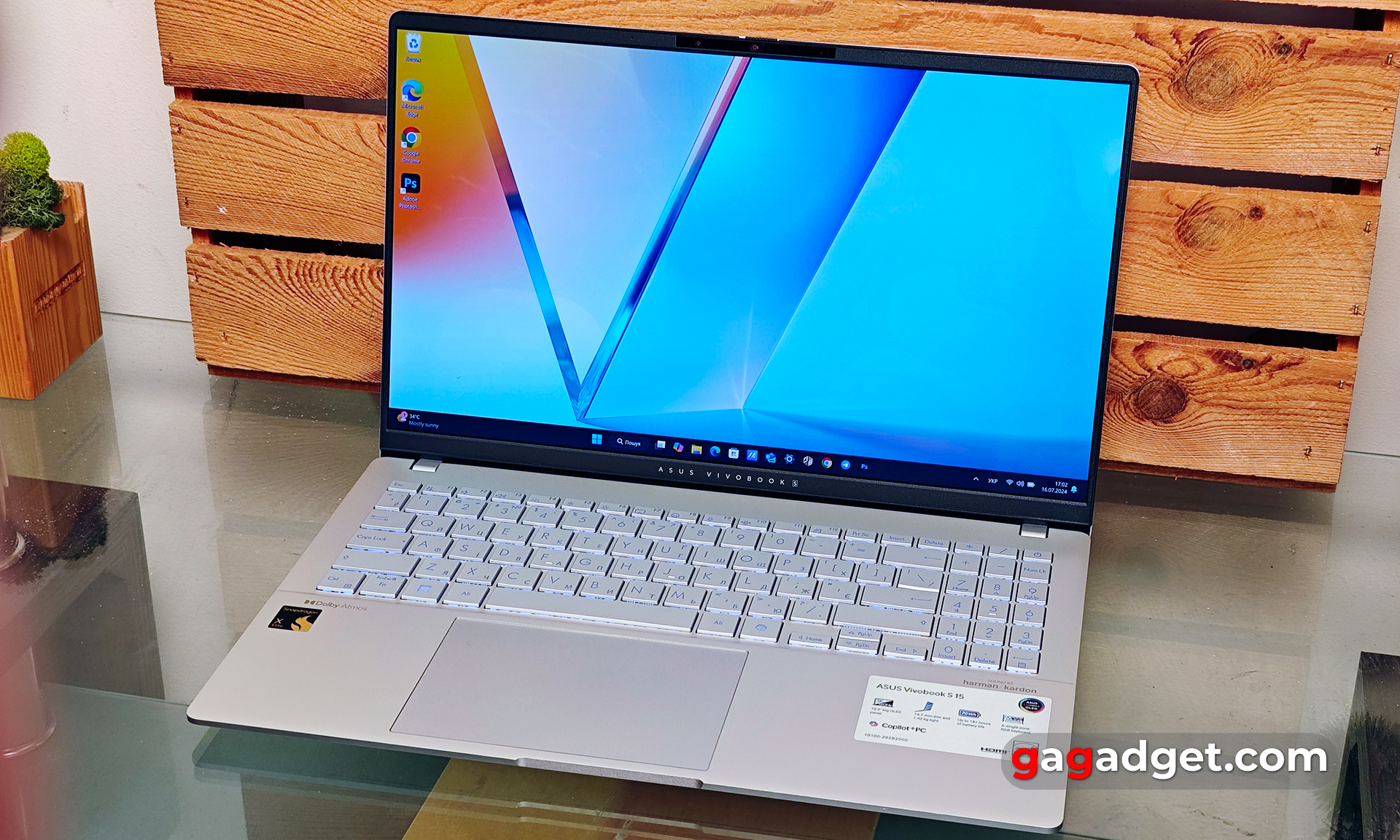
ASUS Vivobook S 15 is one of the first notebooks available with the new Snapdragon X Eliteprocessors, which use the ARMarchitecture rather than x86, unlike Intel or AMD. Snapdragon promises power, energy efficiency and an advanced neural processor to handle machine learning and generative AI. Of course, how useful this is will depend on the software and OS capabilities. With the updates, Microsoft is introducing not only the Copilot chatbot to Windows, but many other features as well: Recall (which has justifiably raised users' privacy concerns), Live Captions (real-time subtitles), Cocreator (image generation), Windows Studio effects for video calls, Automatic Super Resolution scaling and the like. Plus ASUS' own tools like AI noise cancellation and StoryCube app for organising photos and videos.
The notebook gets a Qualcomm Snapdragon X Elite X1E 78 100processor that includes 12 cores and can handle up to 12 threads. The maximum frequency is 3.4 GHz, cache 42 MB. The Qualcomm Hexagon NPU neural processor has a performance of 45 TOPs, and the integrated Adreno graphics has 3.8 TFLOPS. The maximum TDP of the processor is 45 watts. So far, standard diagnostic tools and benchmarks are not very adept at working with the new processors.
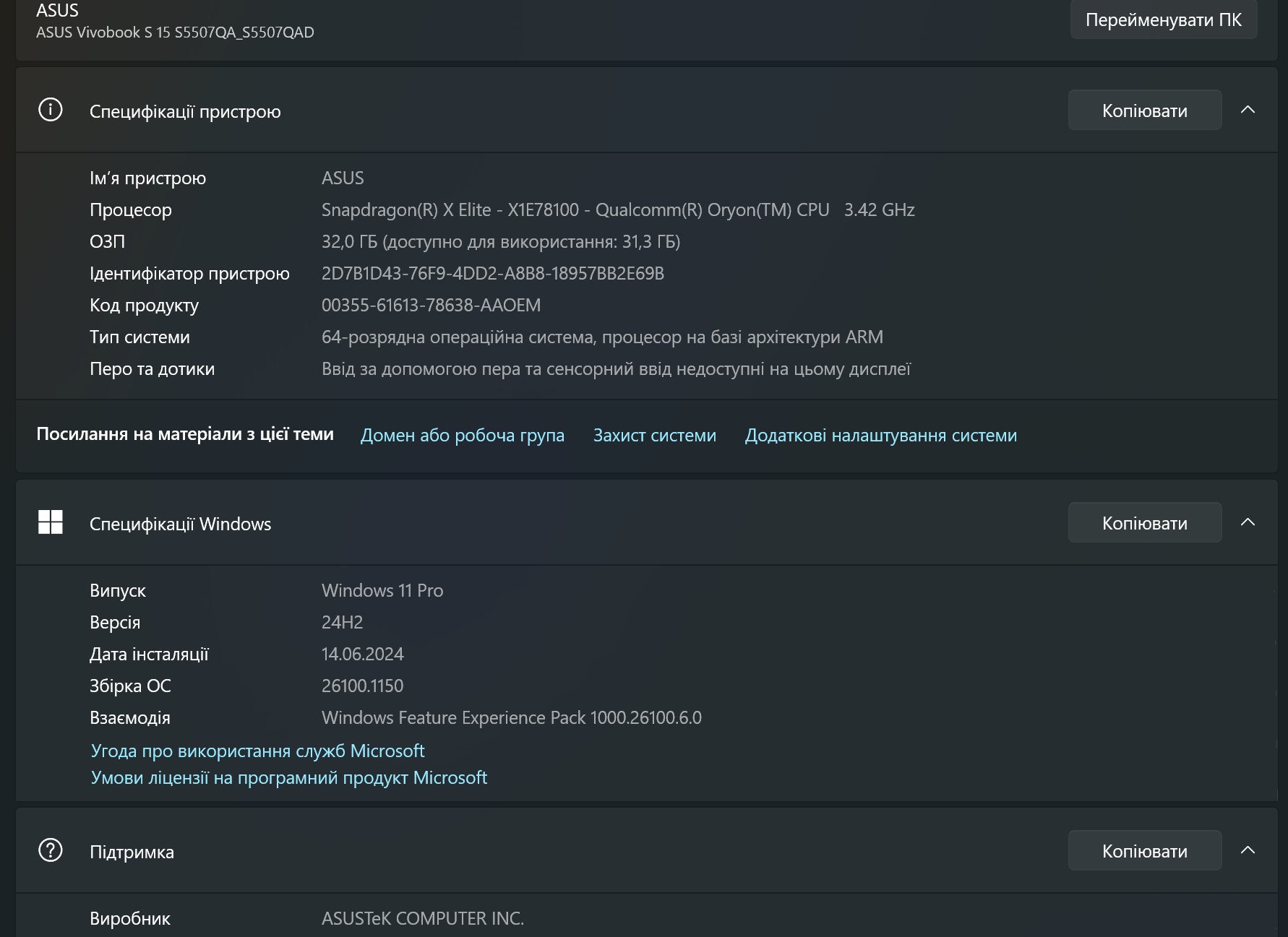
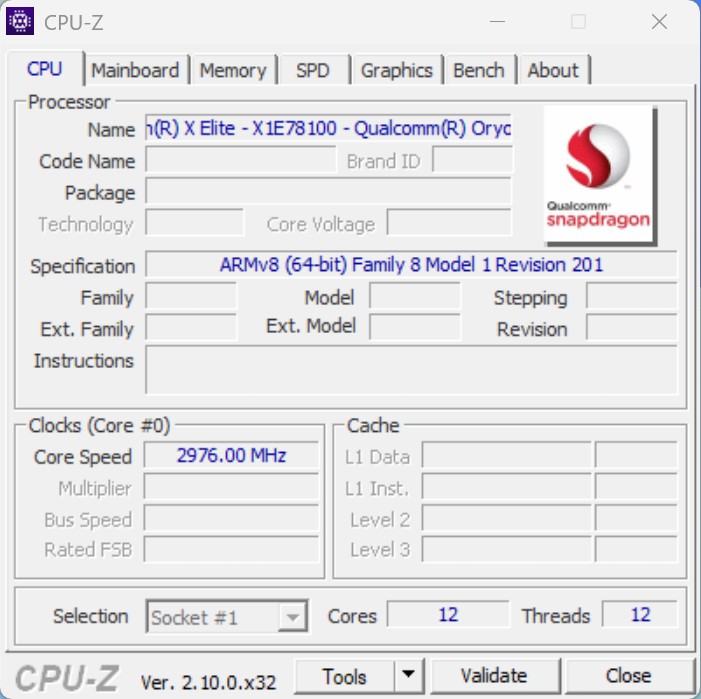
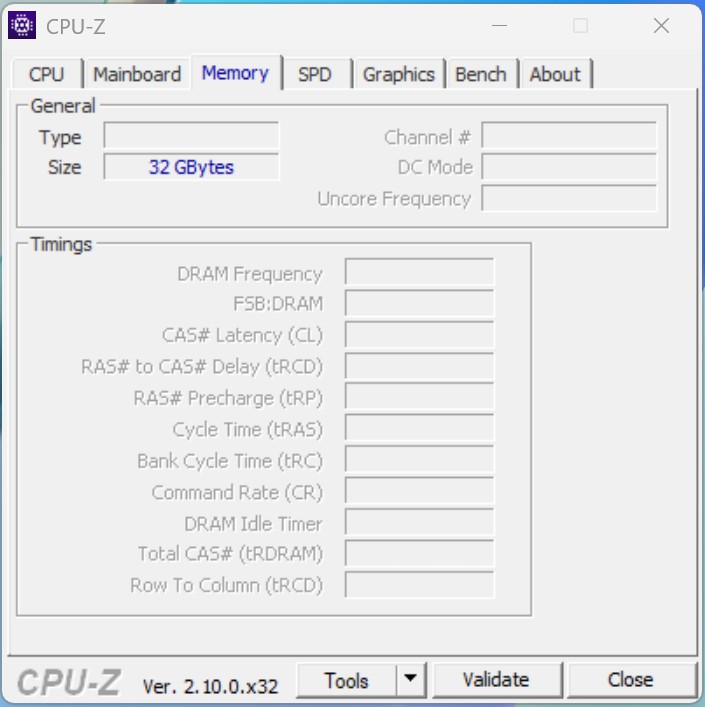
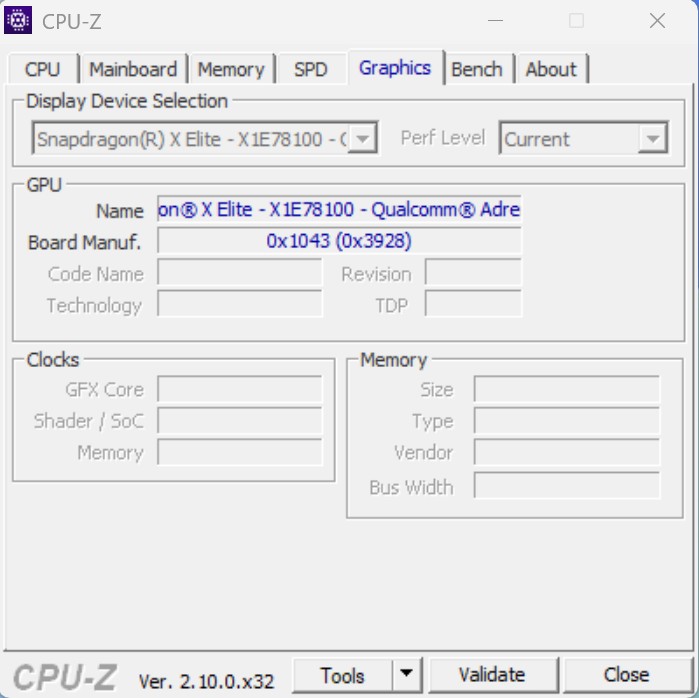
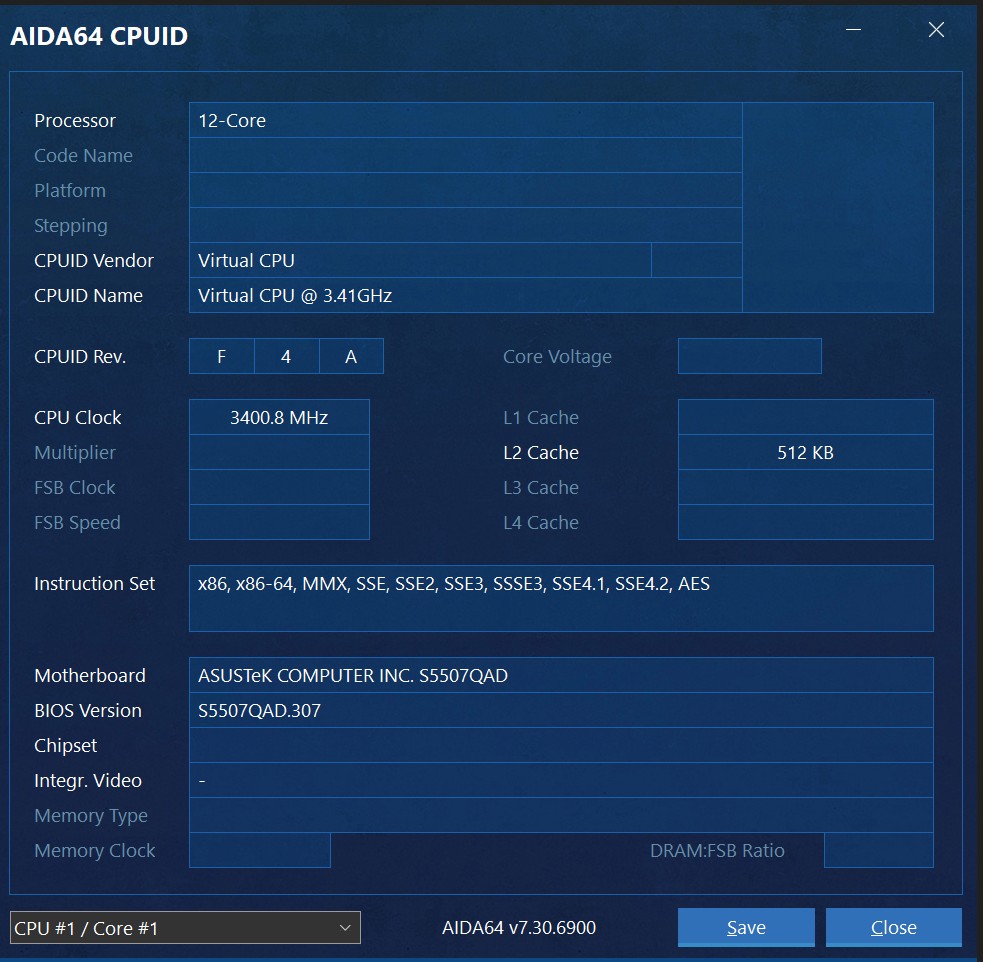

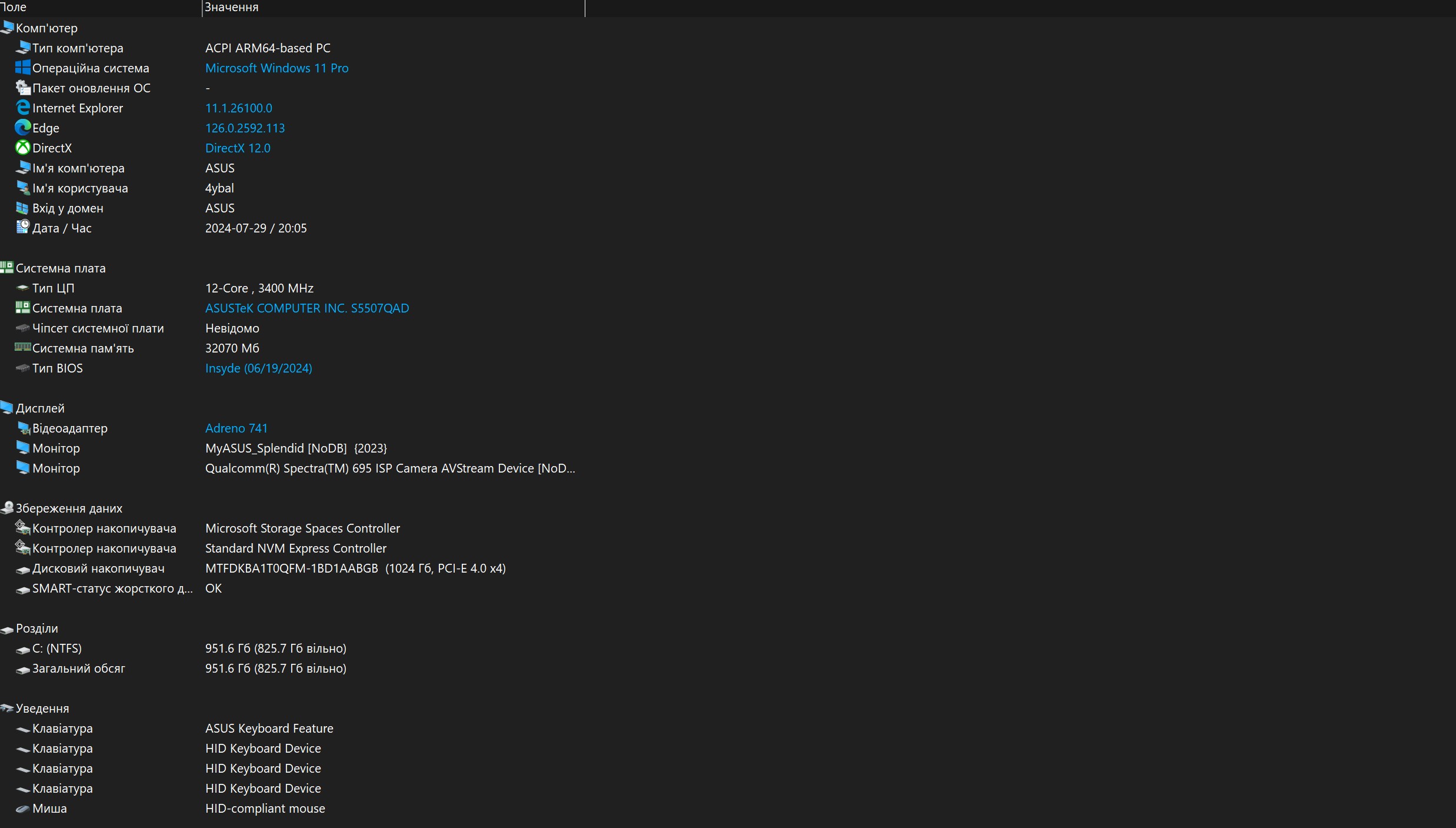


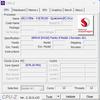
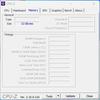
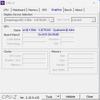

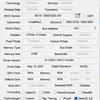


Qualcomm Snapdragon X Elite X1E 78 100 is the youngest model in the Elite line, without support for Dual-Core Boost:
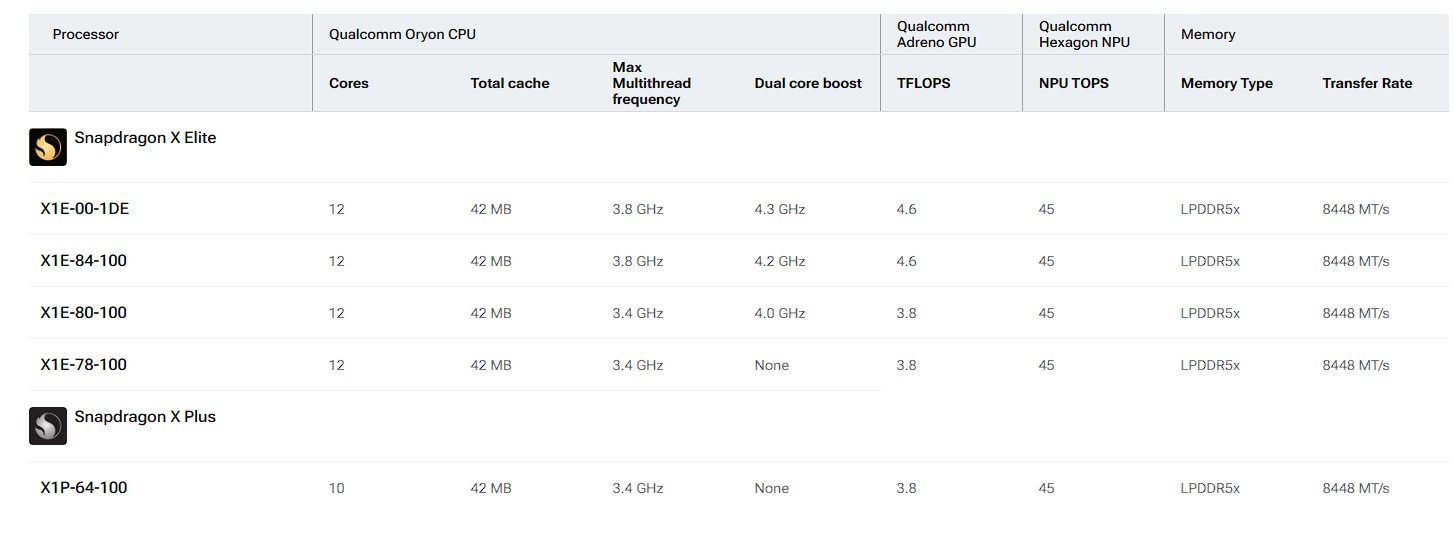
ASUS Vivobook S 15 has 32 GB RAM LPDDR5X, it is soldered on the board. The notebook has support for new high-speed wireless standards: Wi-Fi 7 (802.11be) (tri-band) 2*2 + Bluetooth 5.4.
Synthetic performance tests of ASUS Vivobook S 15 (S5507)
It's still quite difficult to objectively assess the performance of ARM-based notebooks on Windows 11, given the not quite correct performance of some tests. Especially since some of them simply don't run.
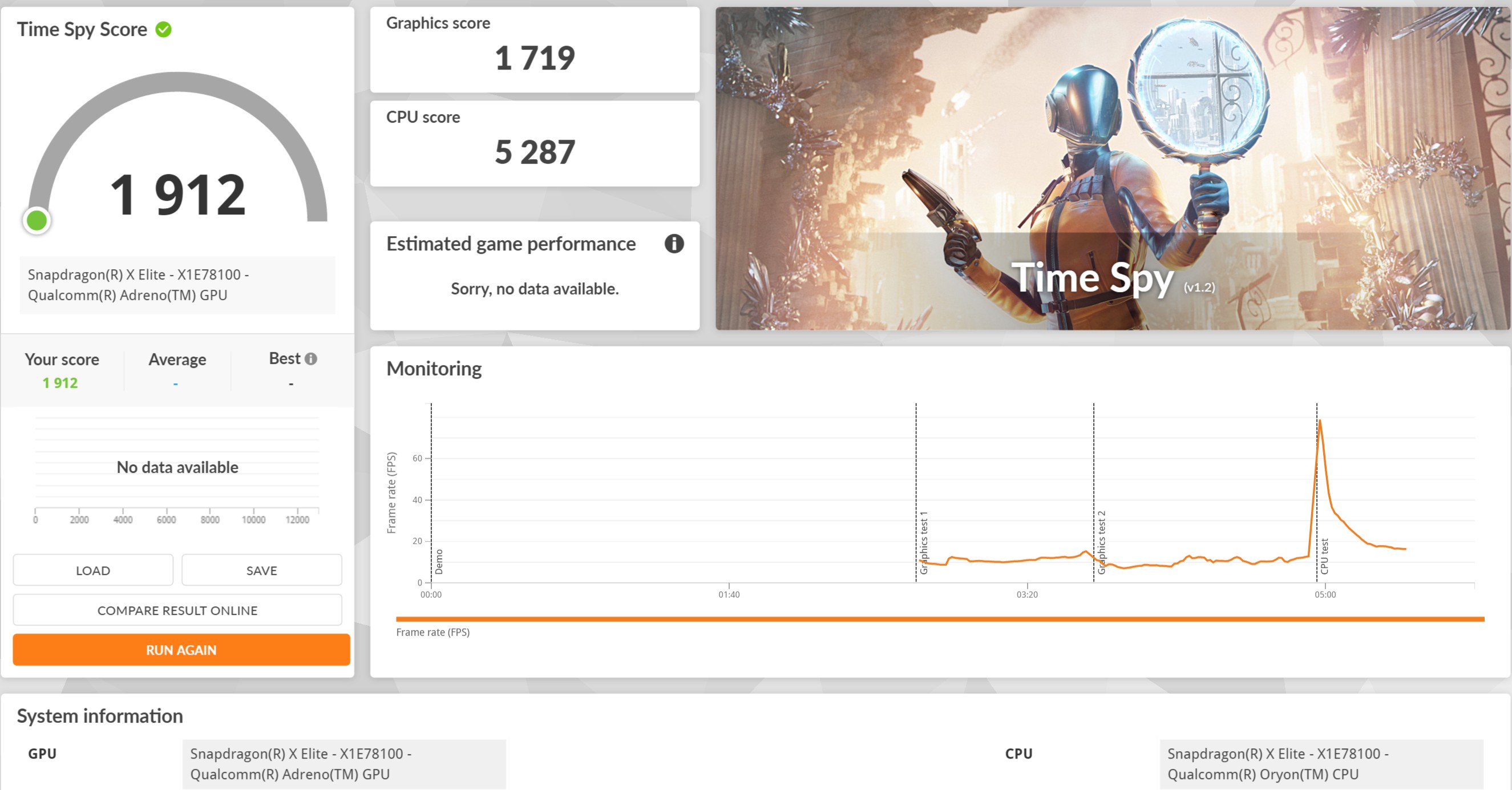
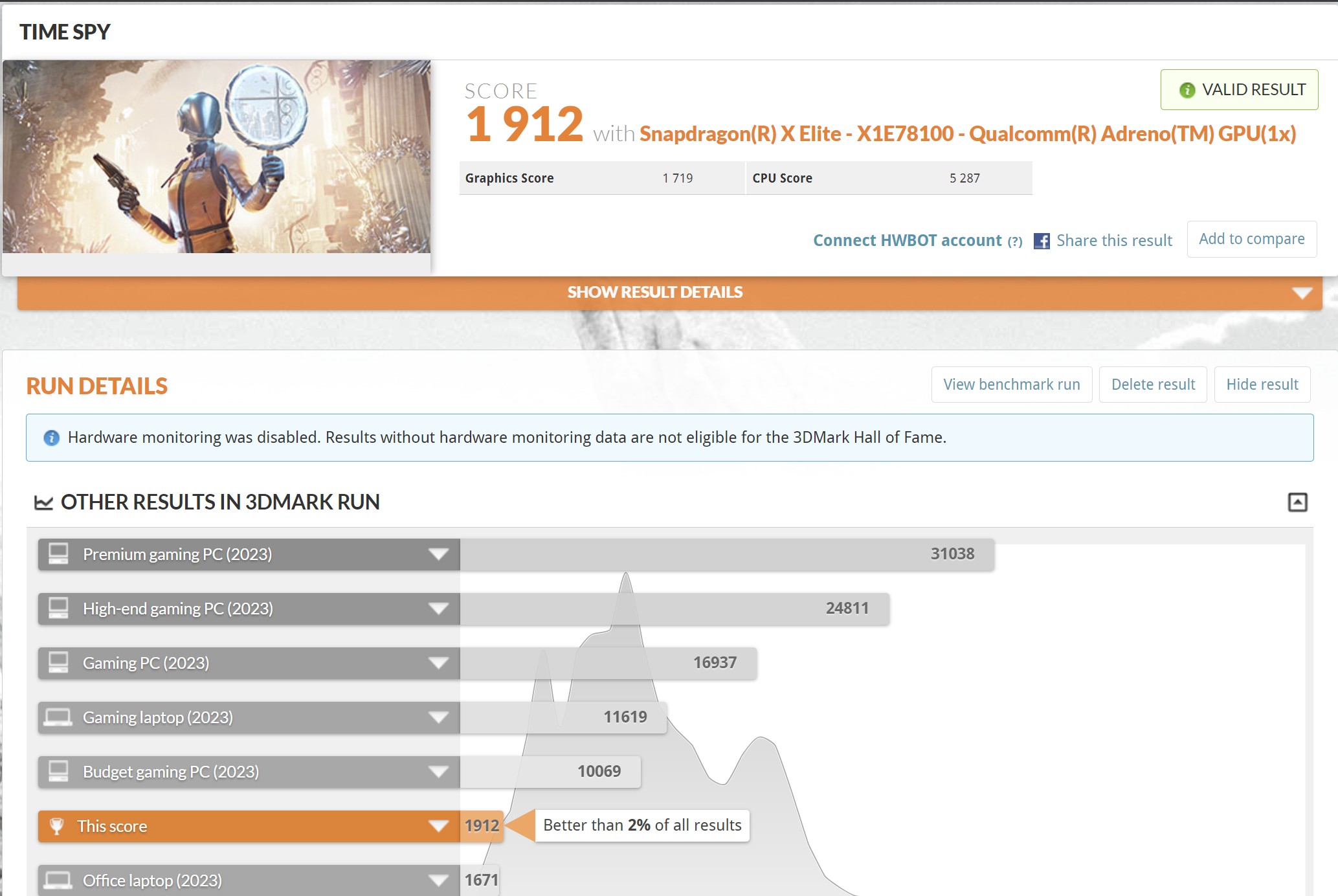
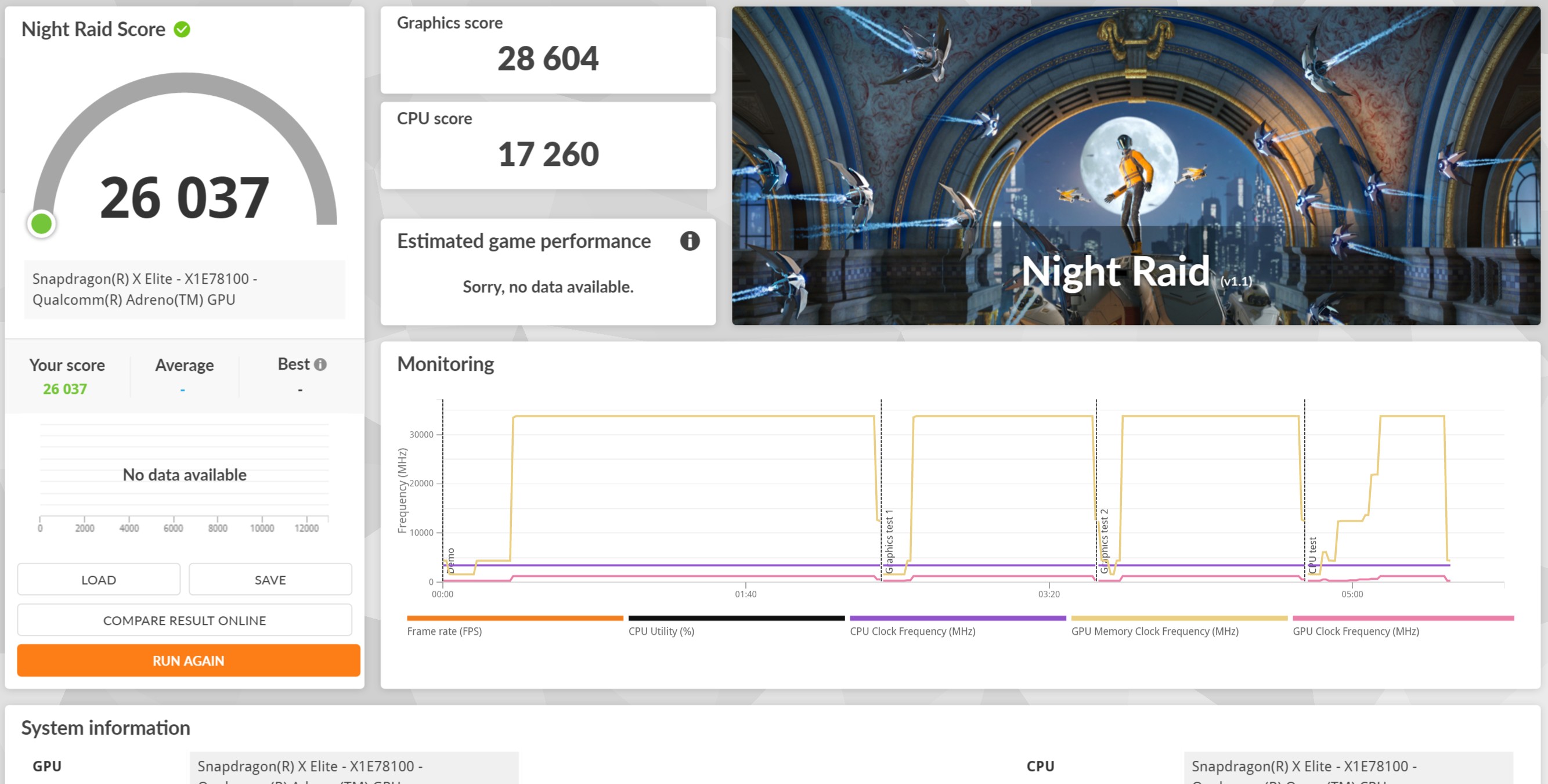
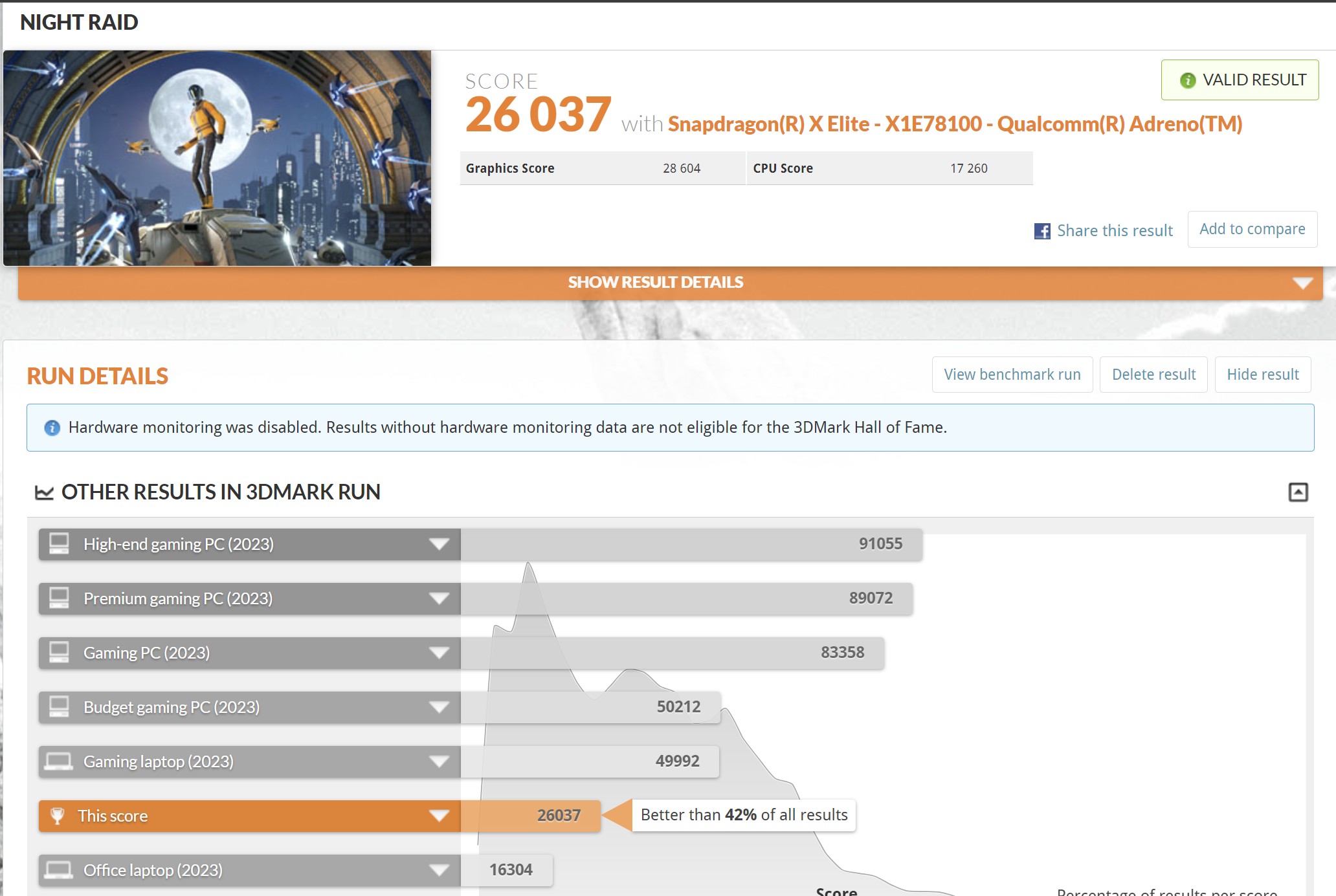
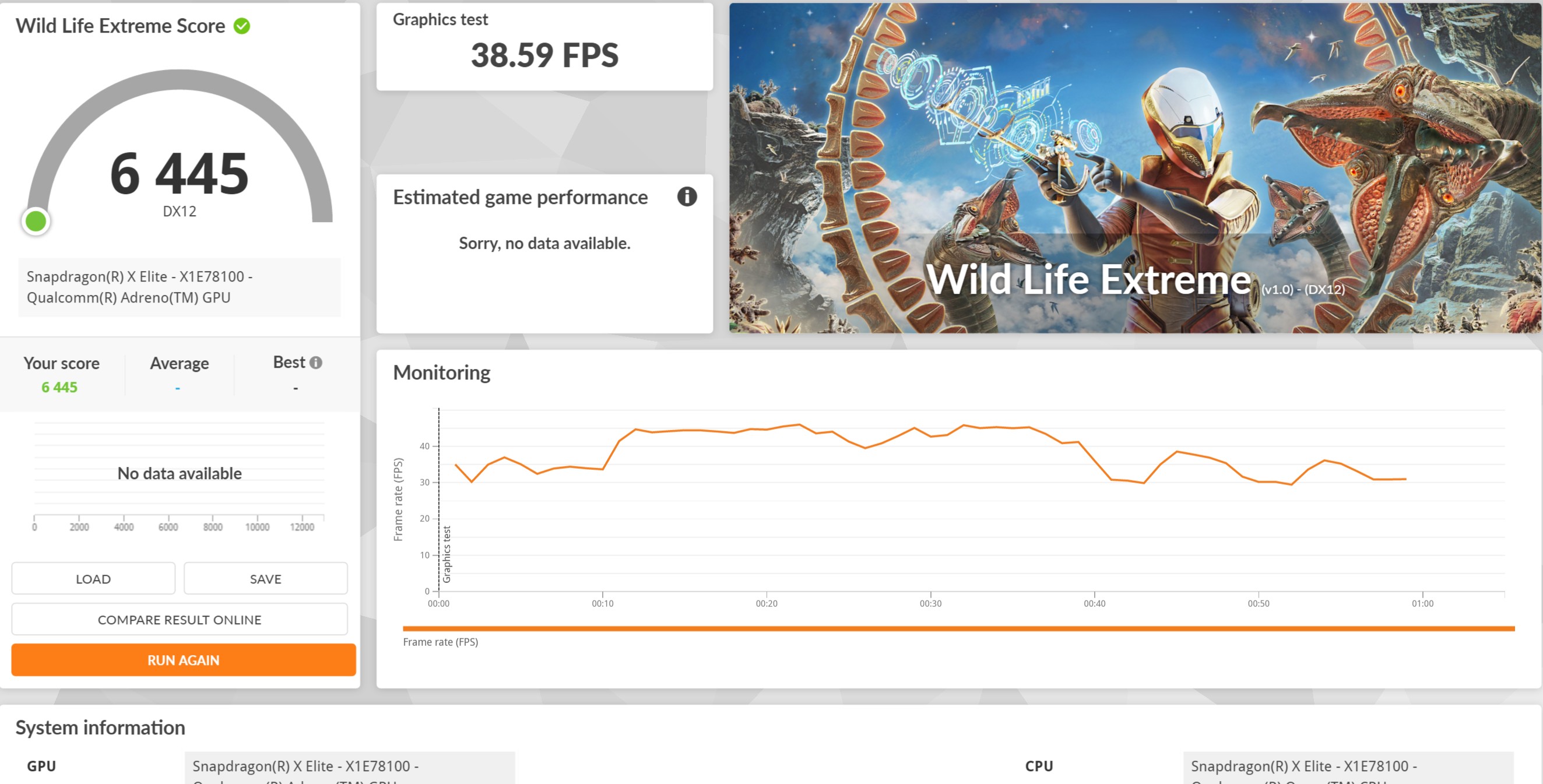

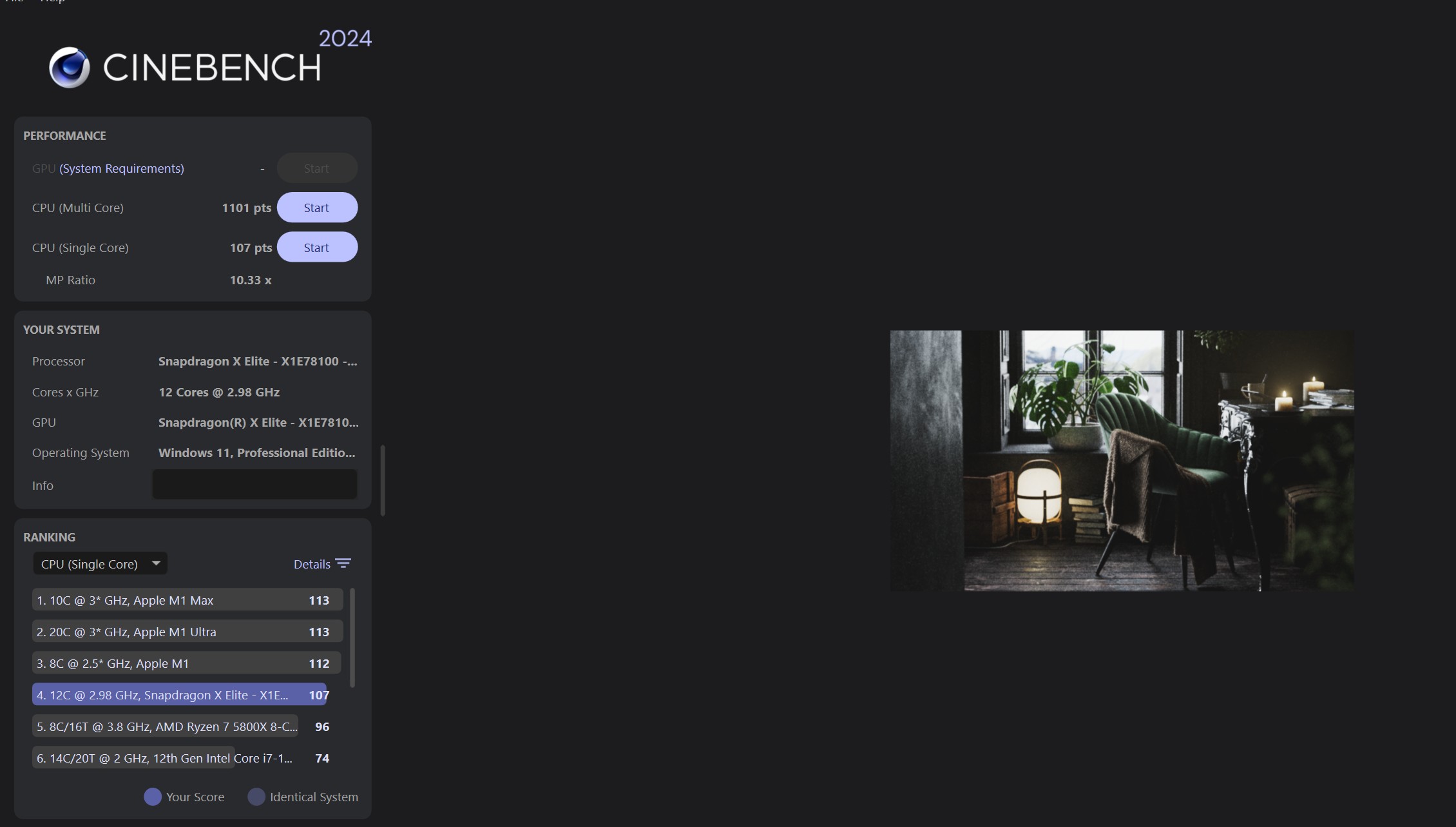
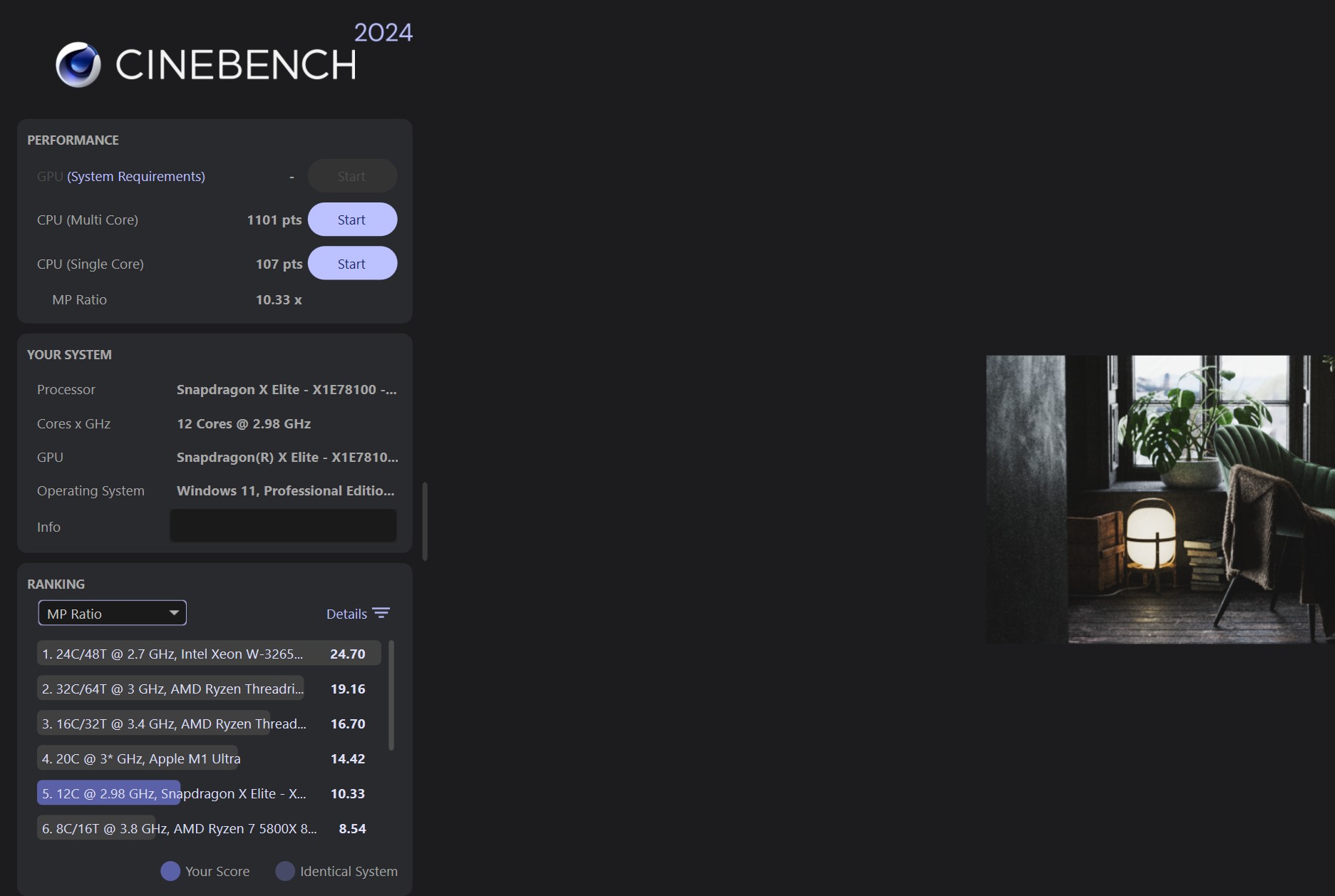
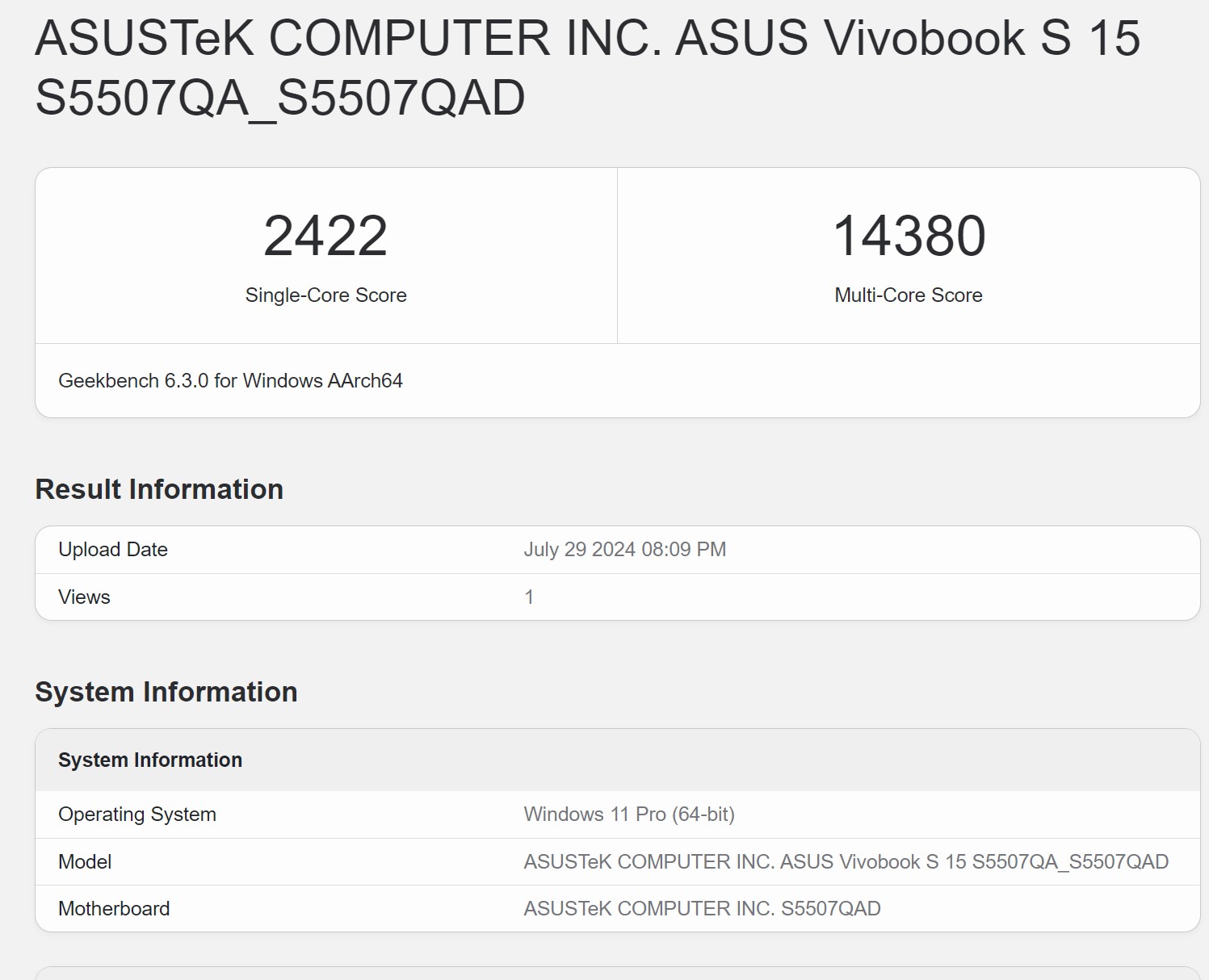
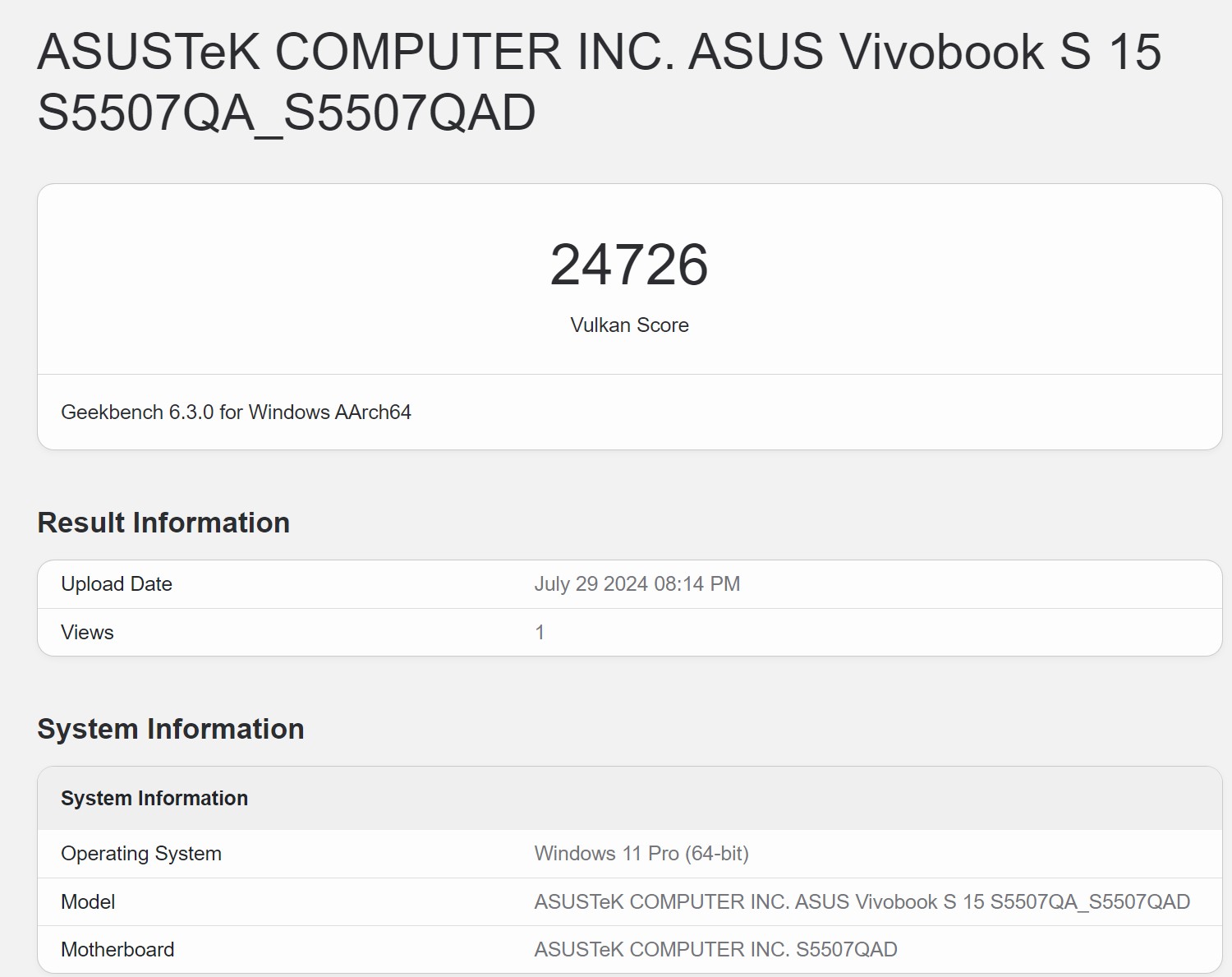
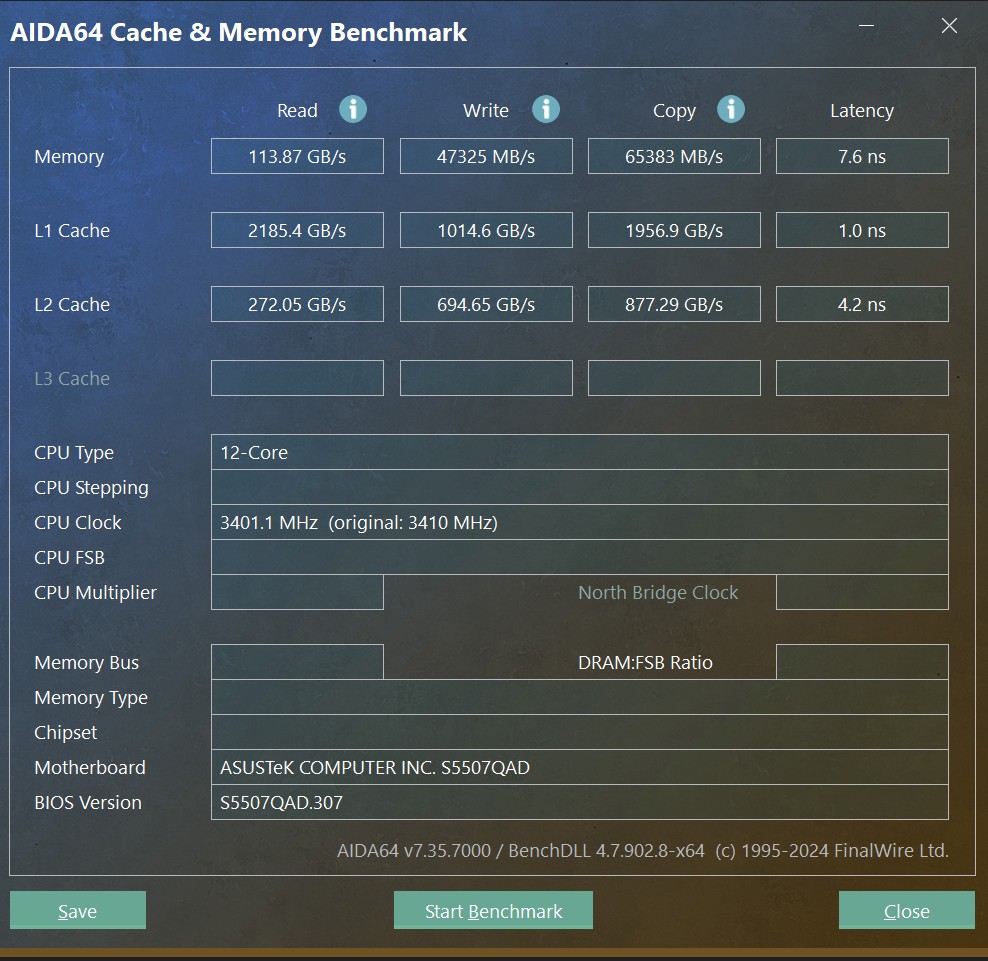


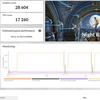

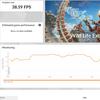




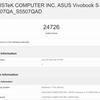

But, according to my own feelings, the processor is really quite productive: applications run very fast, as does the browser with a bunch of tabs. There were no problems with Adobe Photoshop either. The Blender performance test refused to work, but Blender itself works. It's just worth noting that the EEVEE renderer doesn't work, but with Cycles everything is fine:
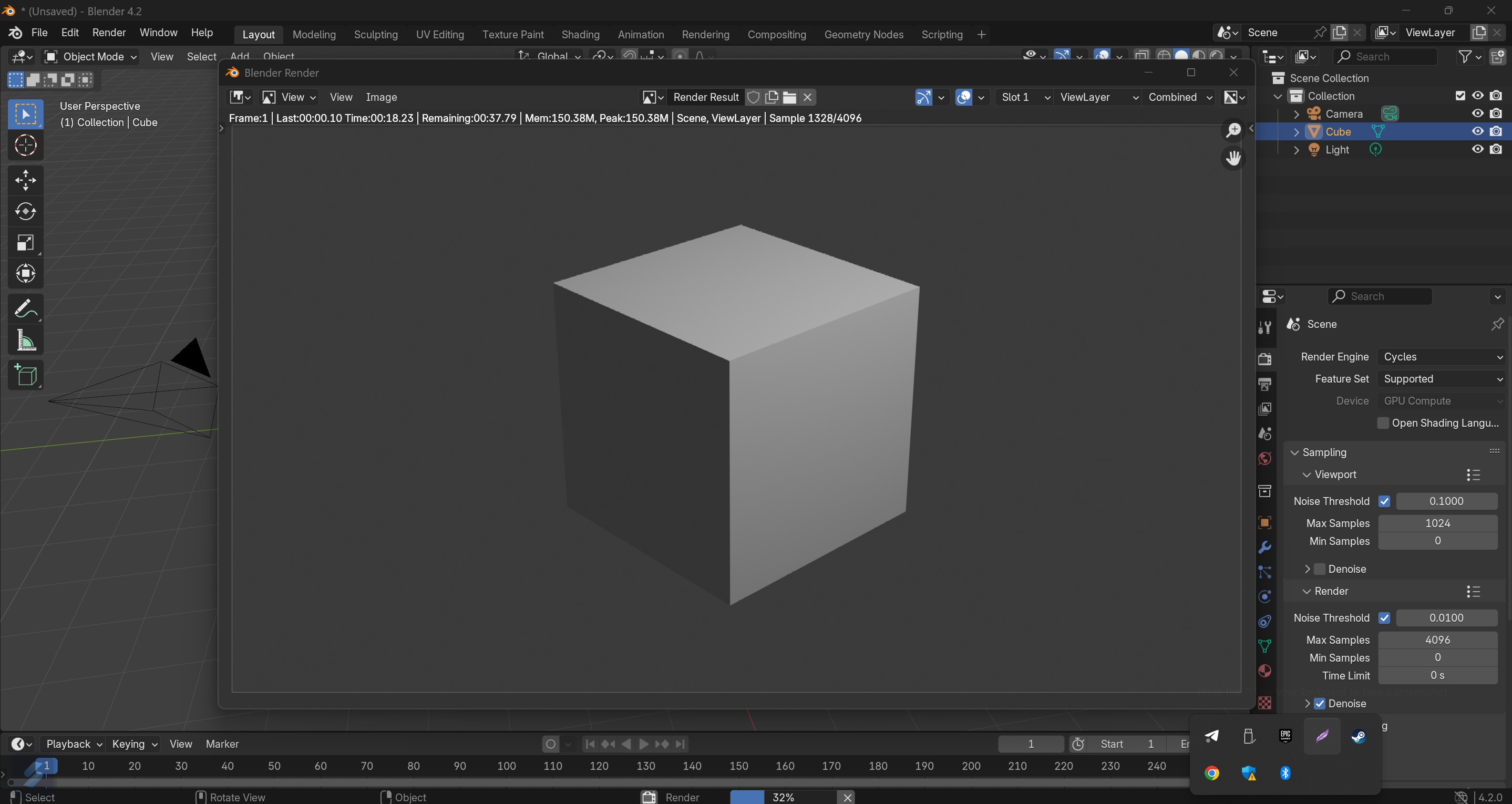
So in general we can say that there are no problems with performance. But there are problems with compatibility and x86 emulation: some applications may not work at all yet.
Cooling and stability of ASUS Vivobook S 15 (S5507)
ASUS IceCool system, including two fans and two heat pipes, is responsible for cooling the notebook. Again, it's hard to estimate the efficiency: the latest stable version of AIDA64 doesn't know how to work correctly with the processor and can't detect the notebook's thermosensors. That's why only the SSD temperature was displayed. On the other hand, even under a long load the average CPU frequency was 3398.4 MHz, which actually corresponds to the maximum declared one. So there are no problems with stability. The case becomes barely warm above the keyboard, and the noise level at maximum speeds is quite typical for modern ultrabooks.
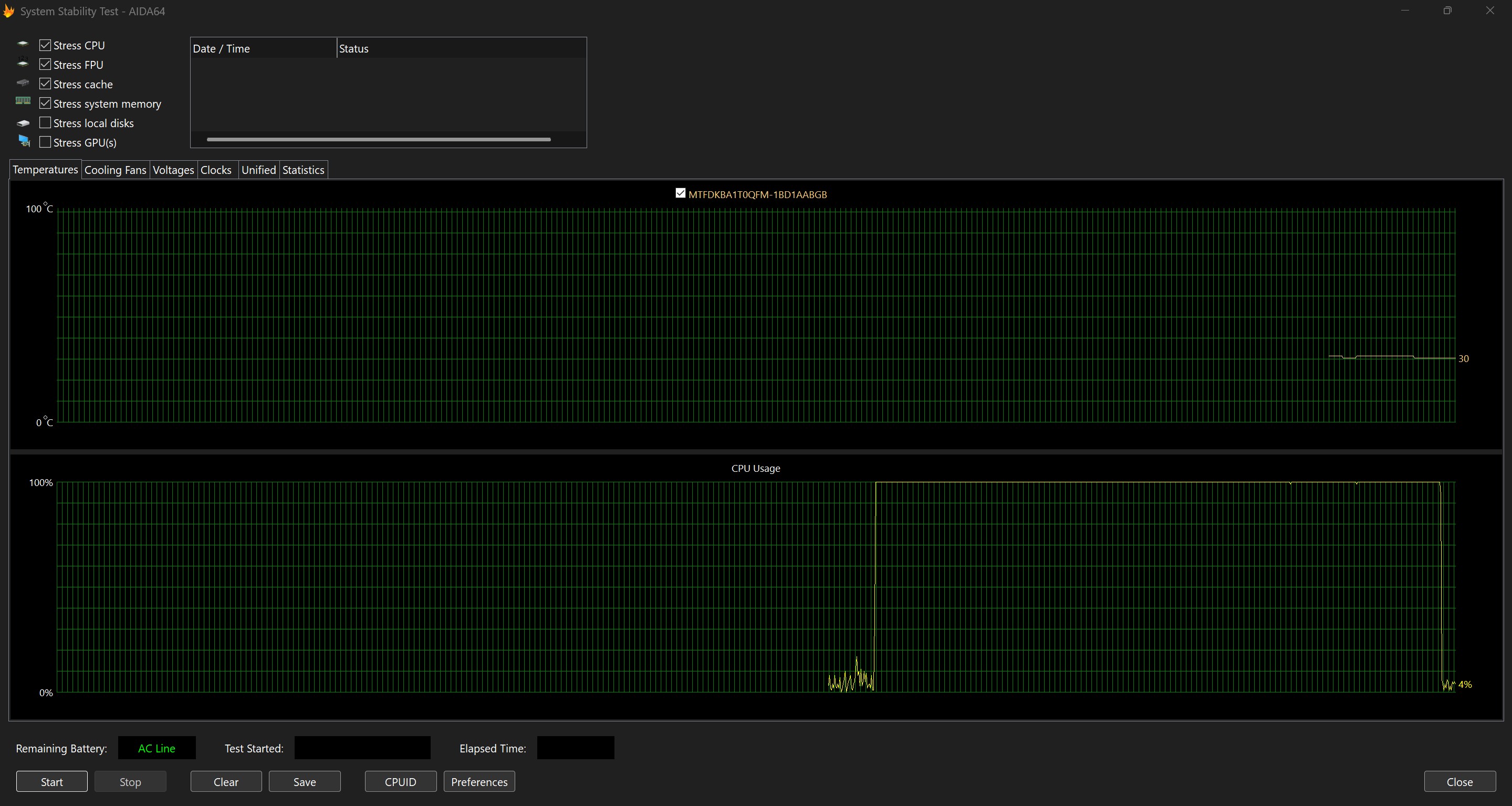



ASUS Vivobook S 15 (S5507)
The drive is M.2 2280 Micron 2400 SSD with PCIe 4.0 x4 interface volume 1 TB.

The drive is quite fast. Read speeds reach 5000 MB/s, and write speeds are around 3600 MB/s.
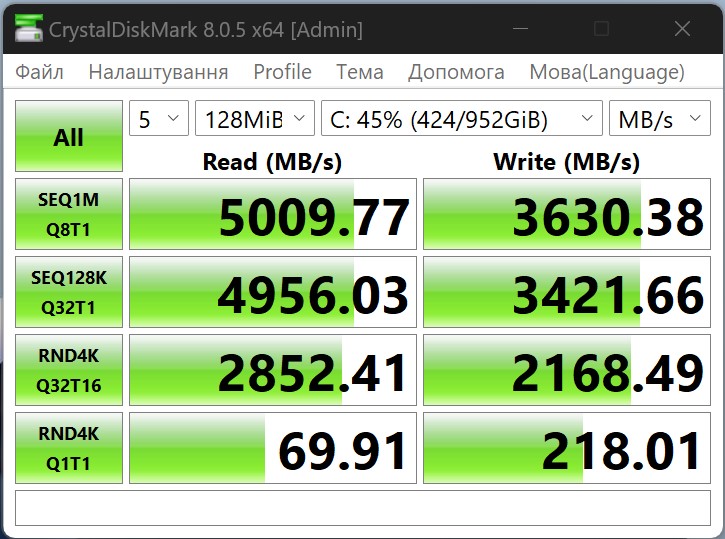
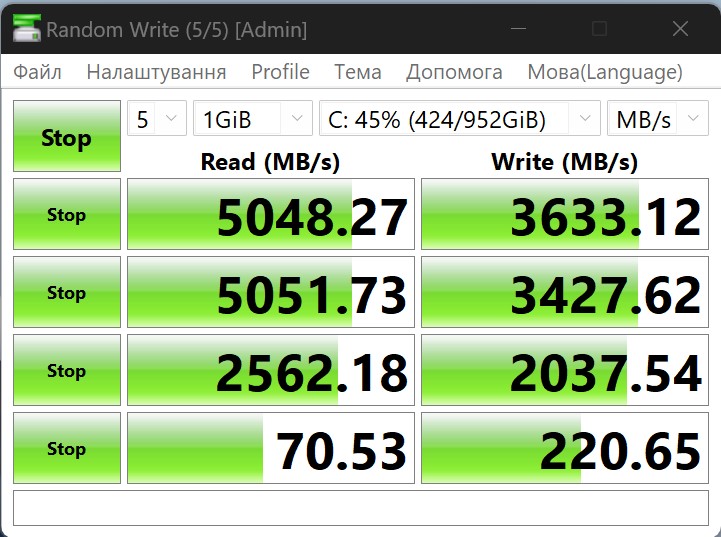

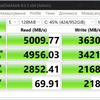


Gaming on the ASUS Vivobook S 15 (S5507)
Gaming is even better than expected. Again, because of emulation and compatibility. But, as it turned out, it is quite realistic to play not the most demanding games. Gears Tactics at medium settings - about 30 FPS. Tomb Raider - about 90 FPS on high settings. Hitman - frame rate jumps from 30 to 50 FPS at low settings.
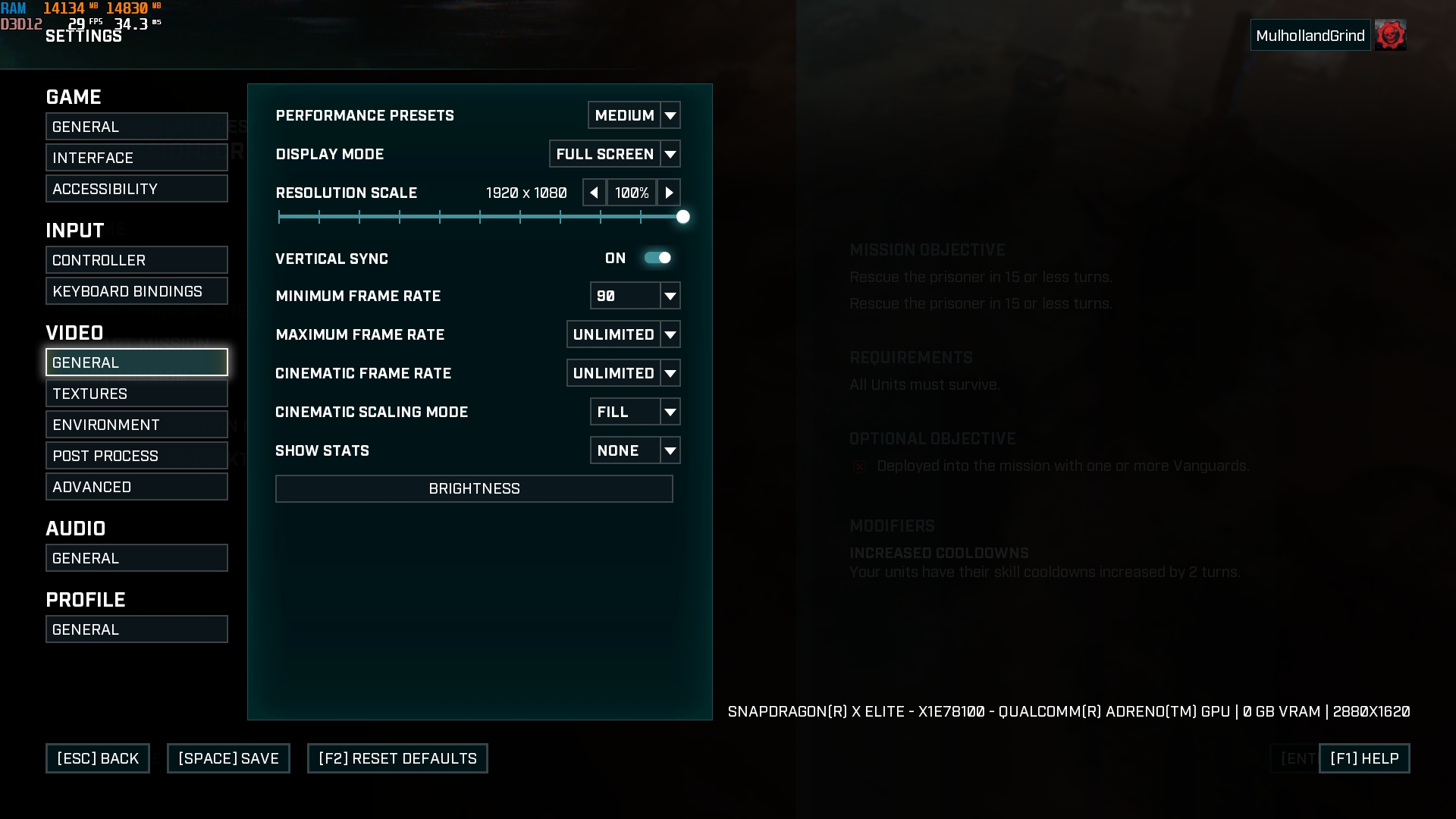









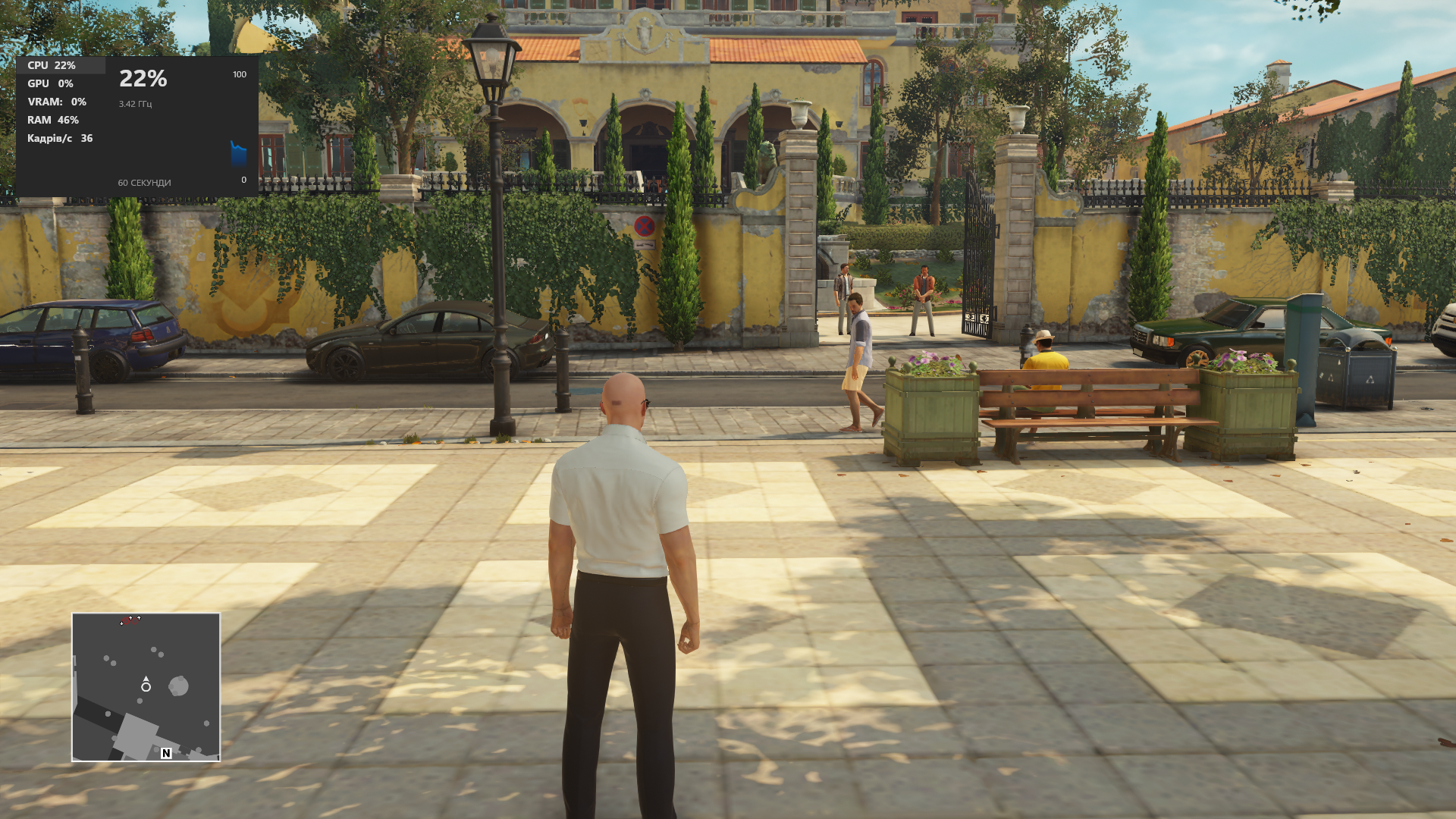


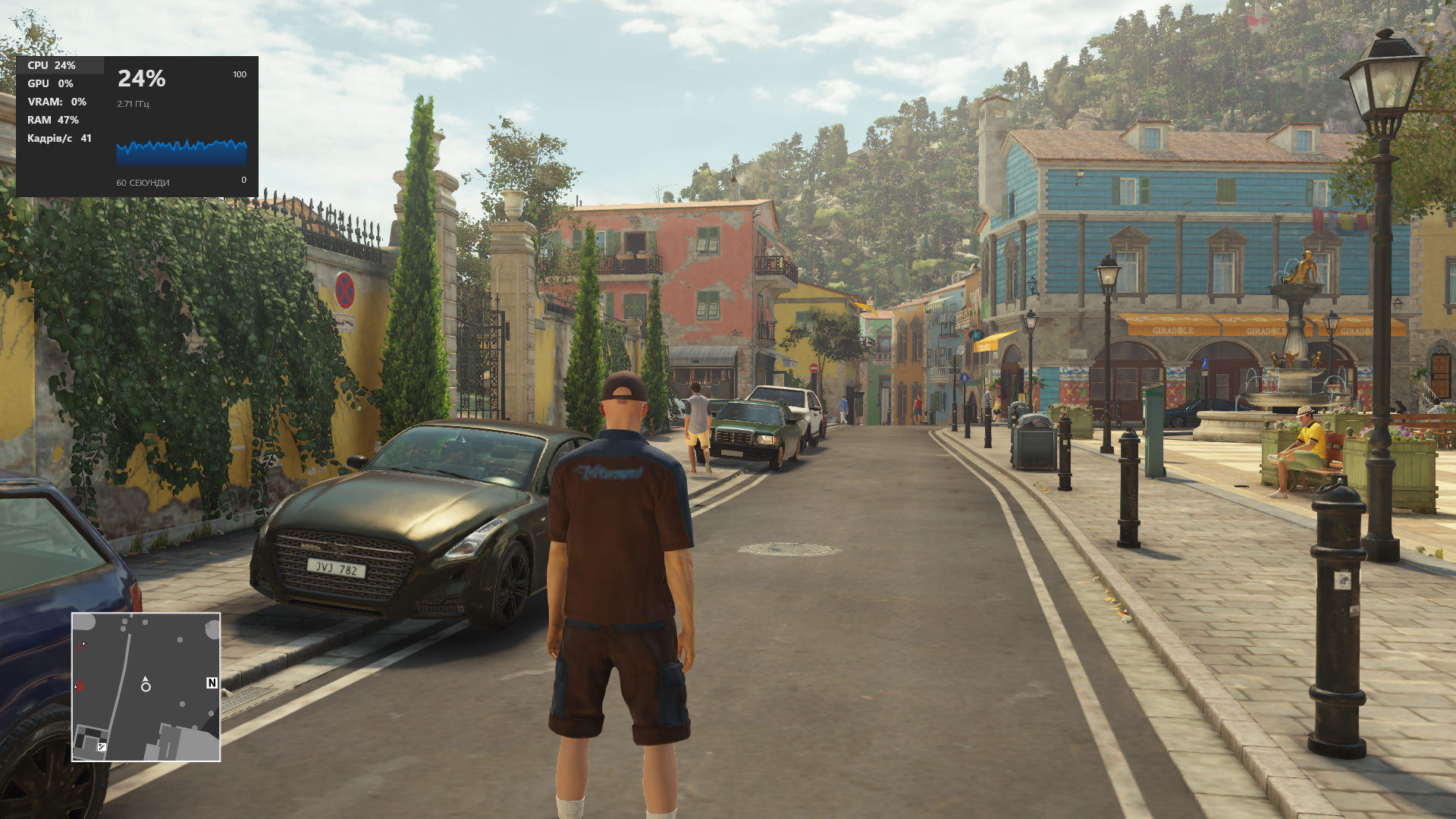














The only thing worth noting: most games won't launch when using MSI Afterburner.
ASUS Vivobook S 15 (S5507) battery life
ASUS Vivobook S 15 has a 70Wh battery. ASUS claims that the laptop can run for up to 18 hours on a single battery charge. The Qualcomm Snapdragon X Elite proves to be really power efficient, with the laptop showing excellent battery life. Under low load, the ASUS Vivobook S 15 can handle just over 10 hours. Namely the standard operating scheme for me: a browser with a bunch of tabs, Photophop for basic photo editing and constant music playback from online services. The brightness and volume was at 50%. If limited to the browser, this figure can be increased by another 1-2 hours. Therefore, during constant shutdowns ASUS Vivobook S 15 can be an extremely good option. The laptop supports fast charging with a 90W 60% power pack in 49 minutes. You can also charge the notebook even from paverbanks thanks to USB-C Easy Charge technology.
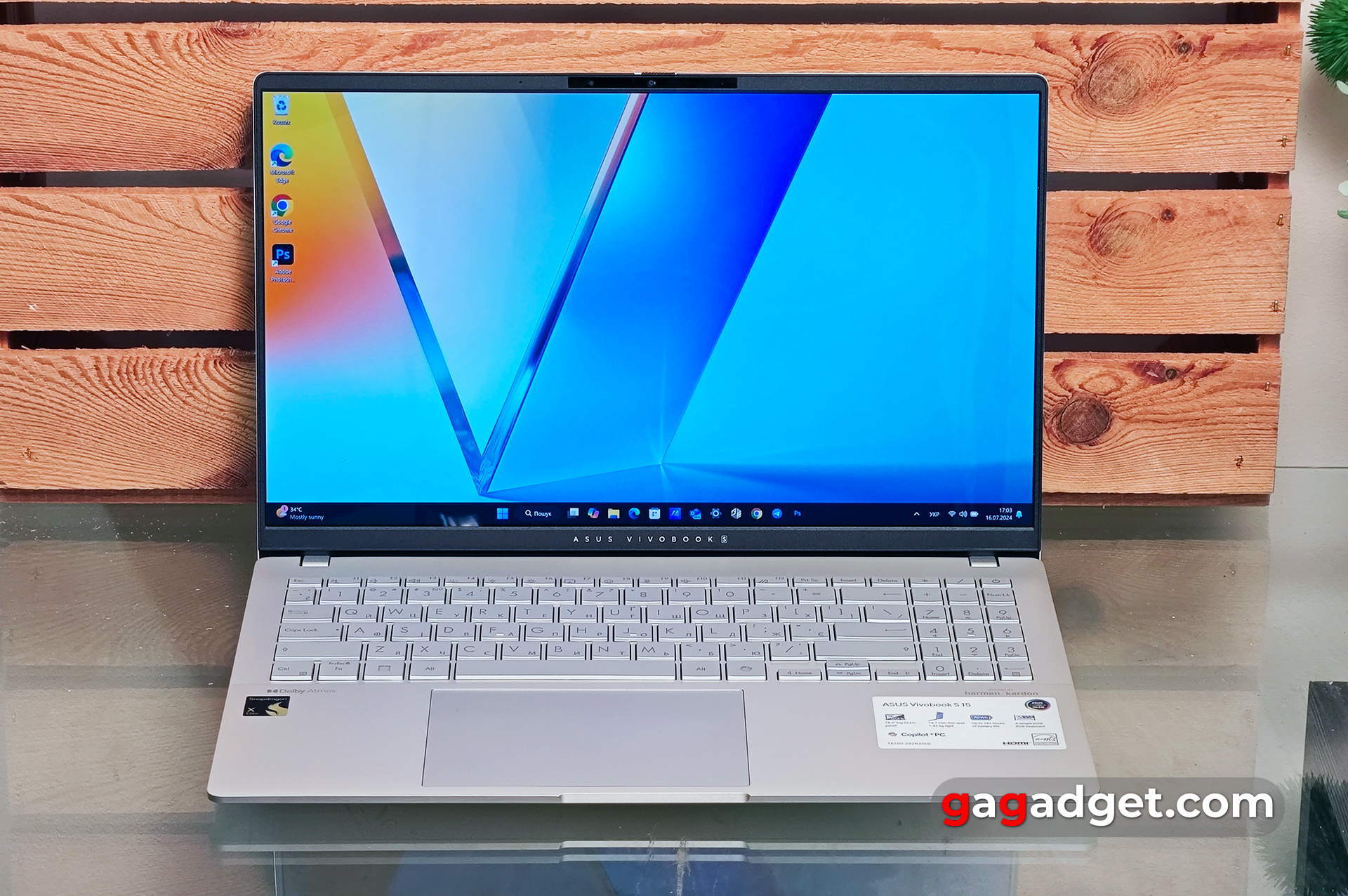
Audio System ASUS Vivobook S 15 (S5507)
The notebook features stereo speakers that support Dolby Atmos virtual surround sound. The sound quality is not bad, although the low frequencies are a bit lacking. The volume reserve is sufficient.

Software ASUS Vivobook S 15 (S5507)
The main application for most of the laptop settings is MyASUS. There are settings for cooling system, performance, battery care (incomplete charging to extend battery life), hardware diagnostics, display settings, microphones, speakers, AI-based noise cancellation, auto brightness, system updates, and the like.
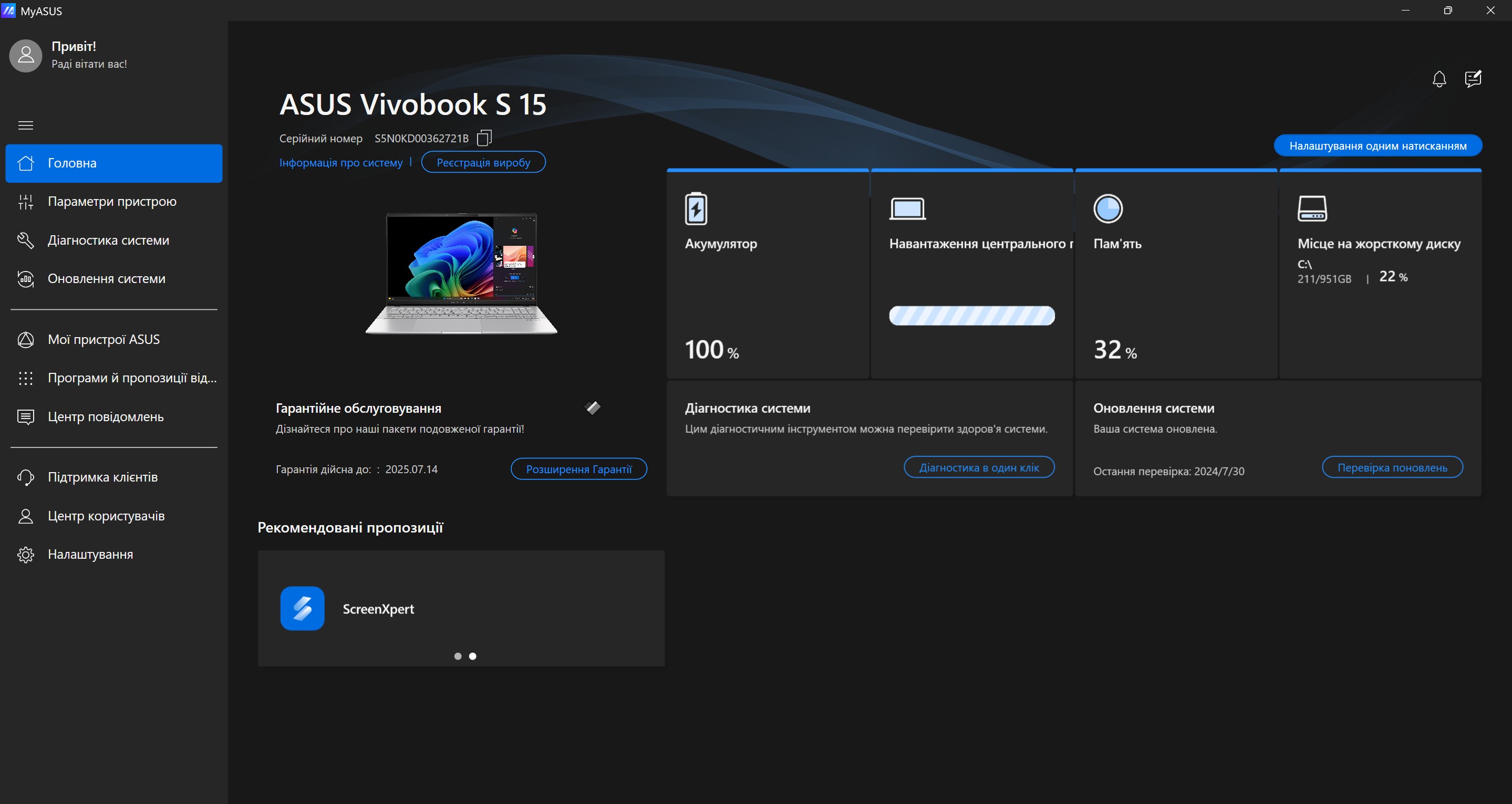
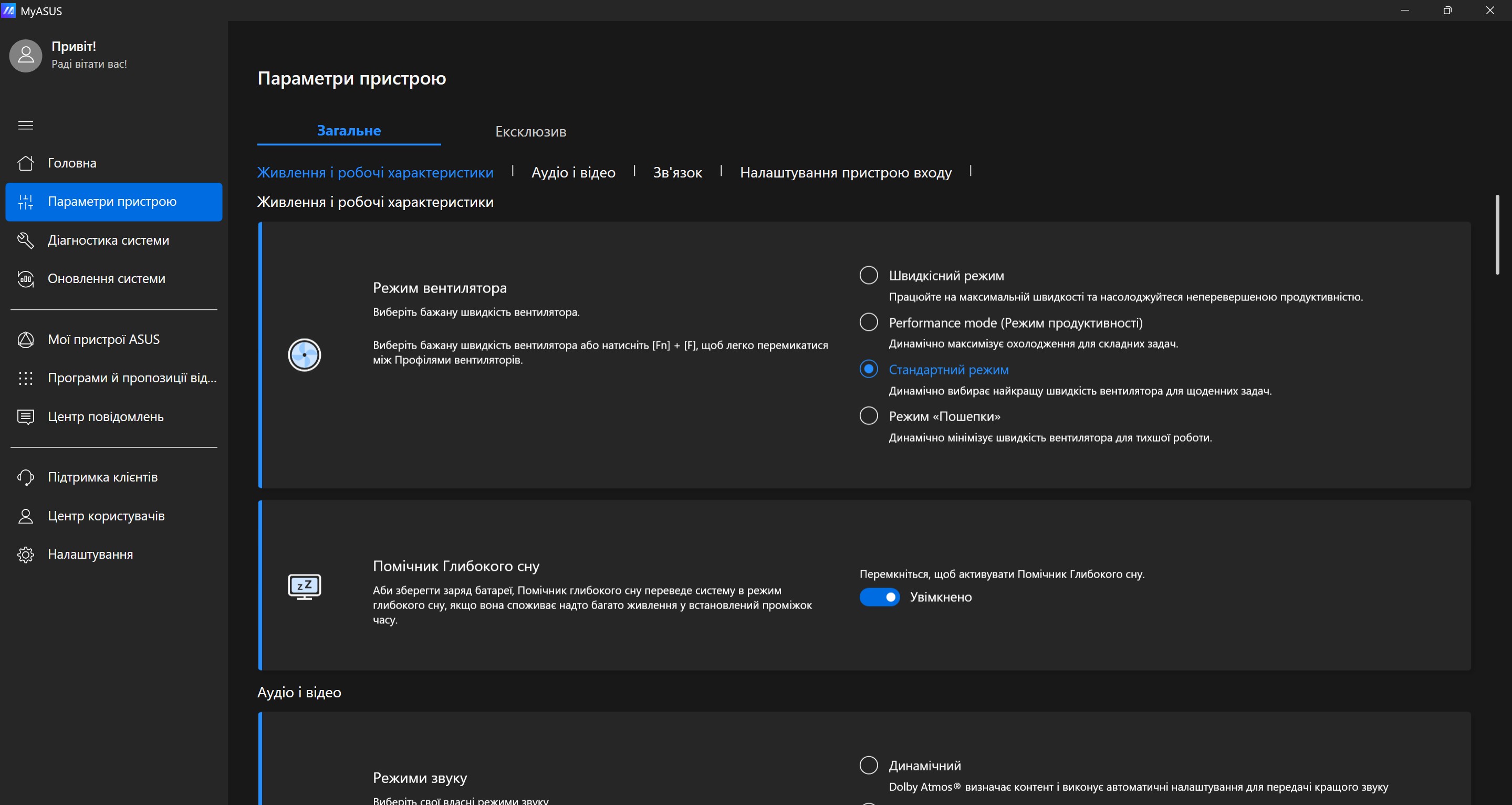
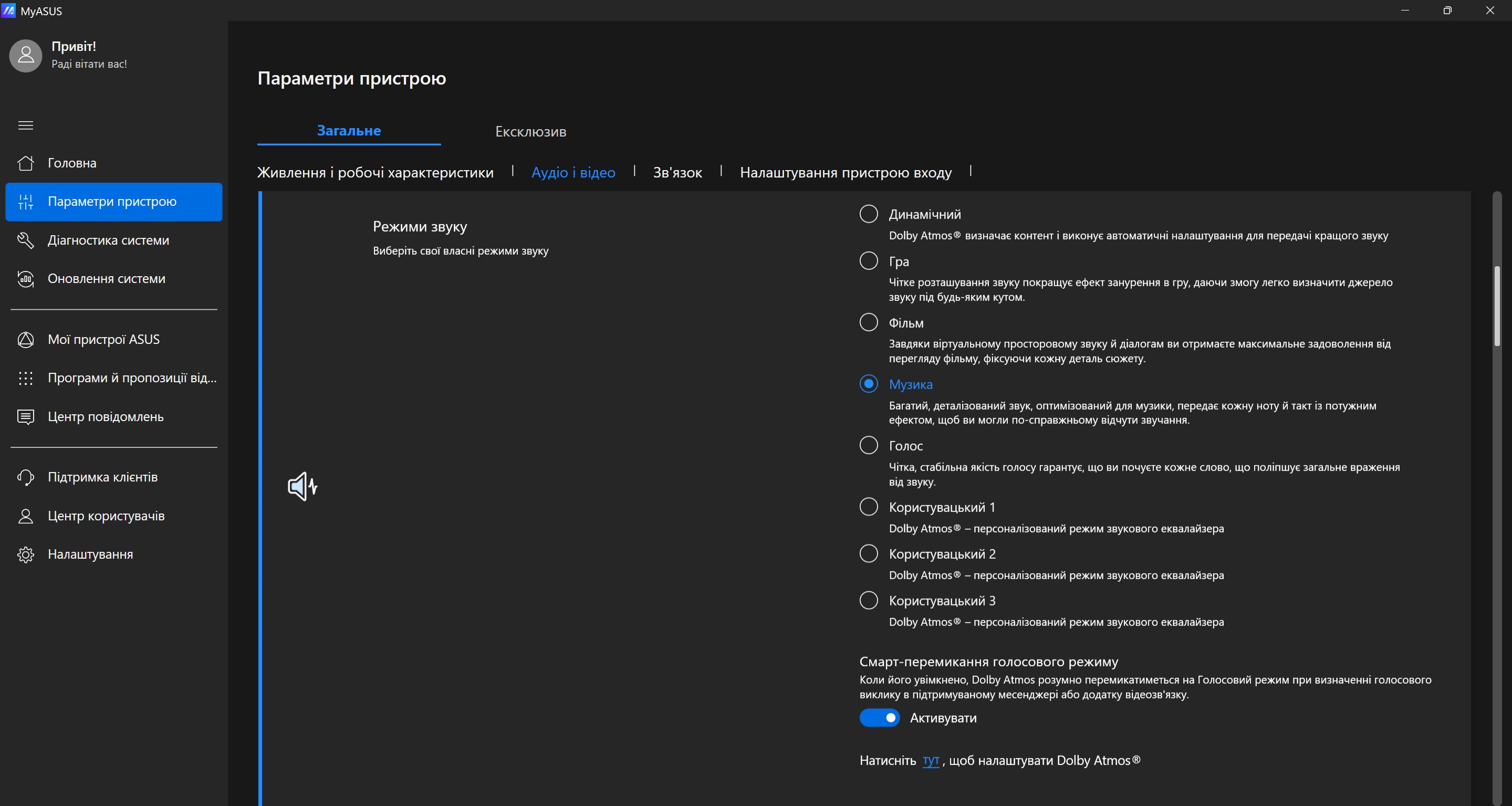
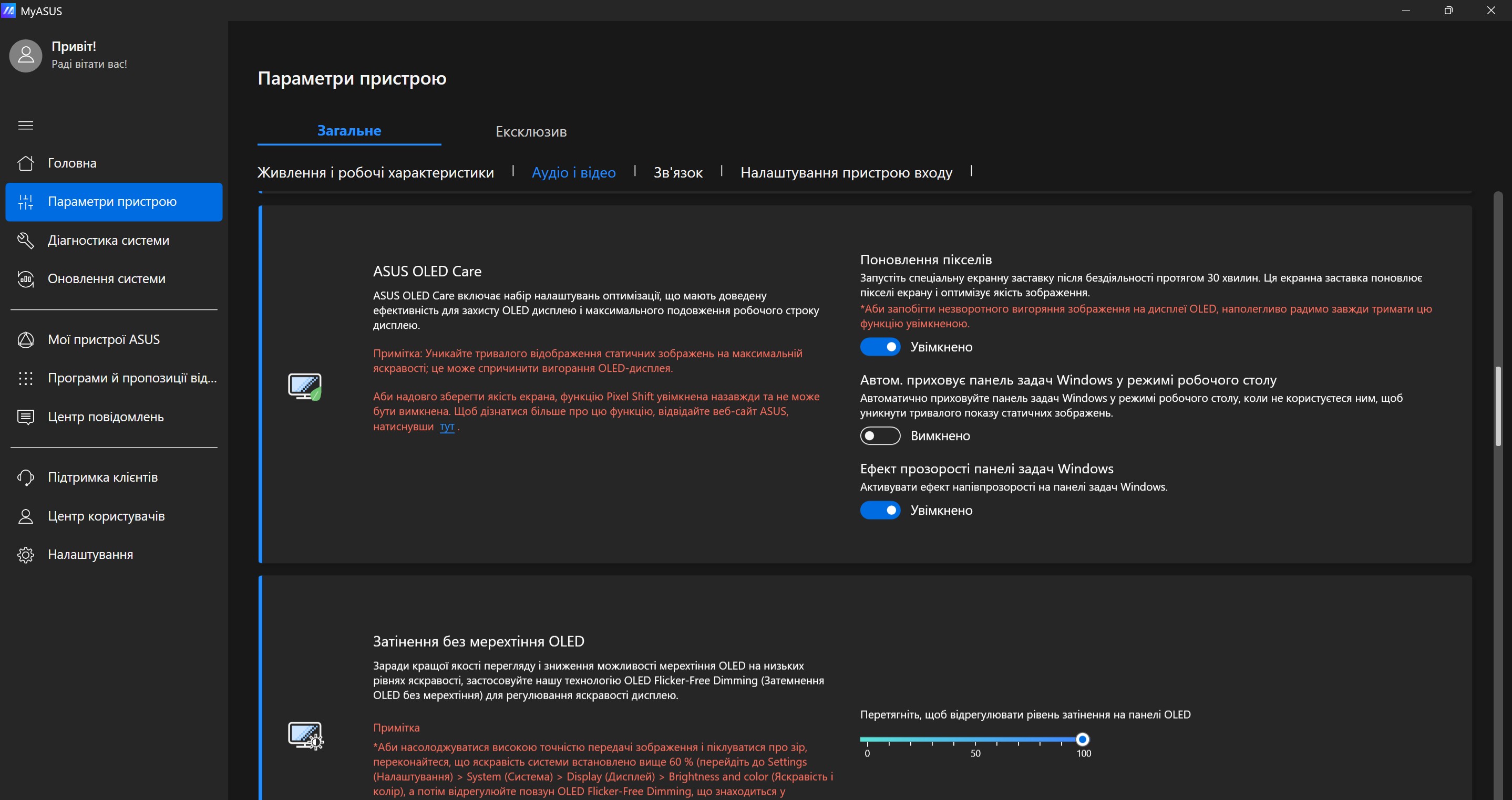
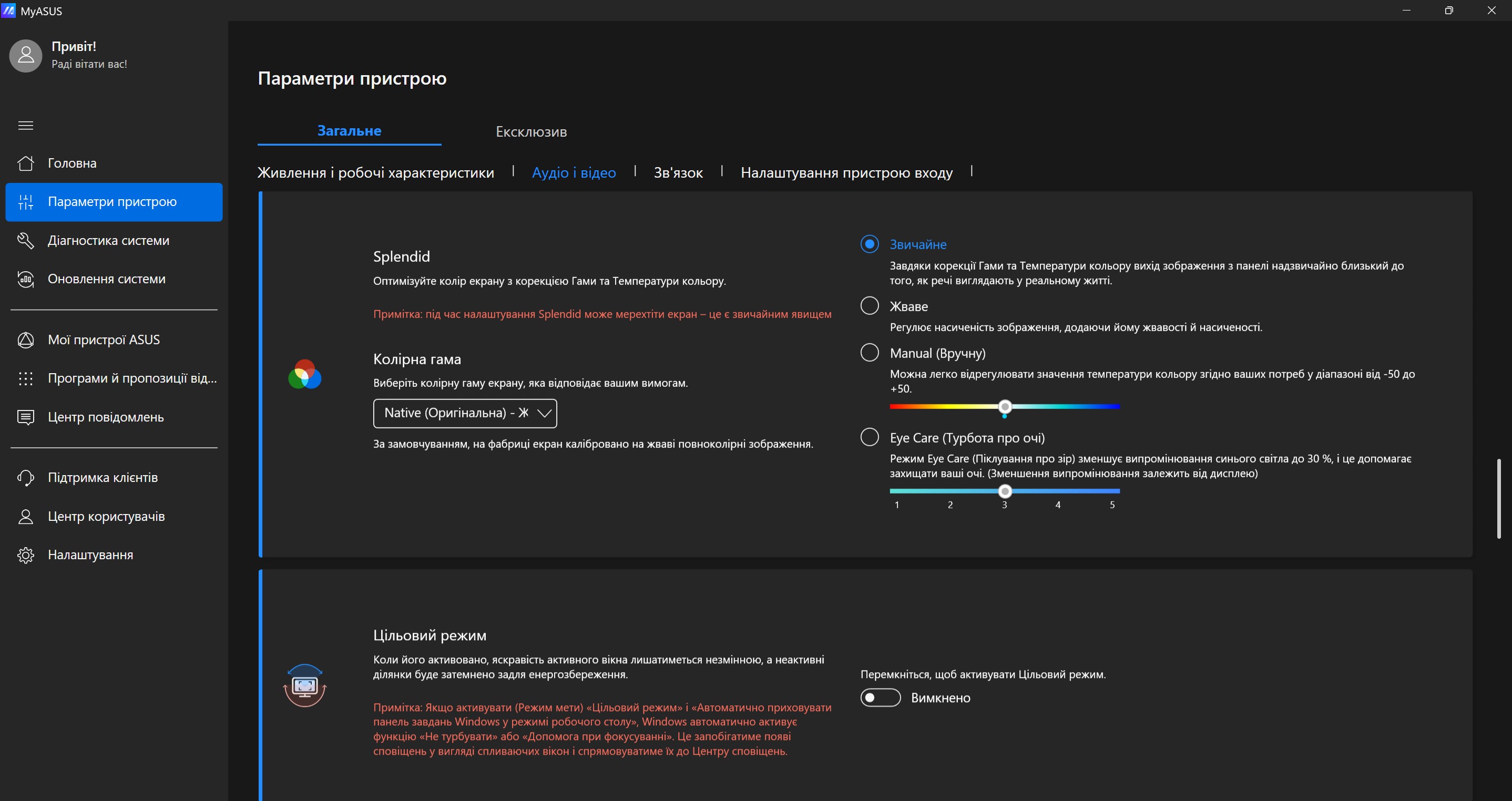
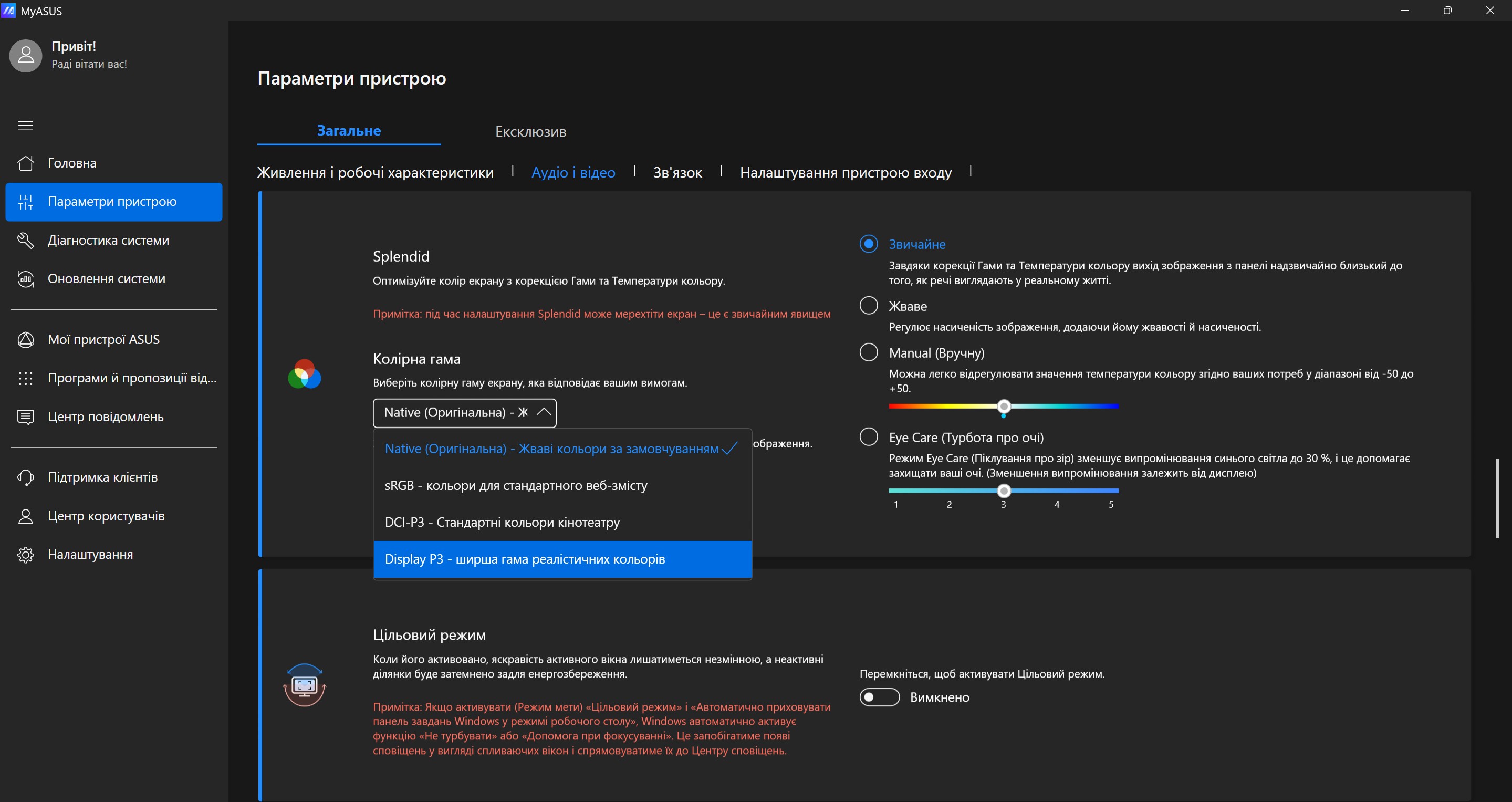


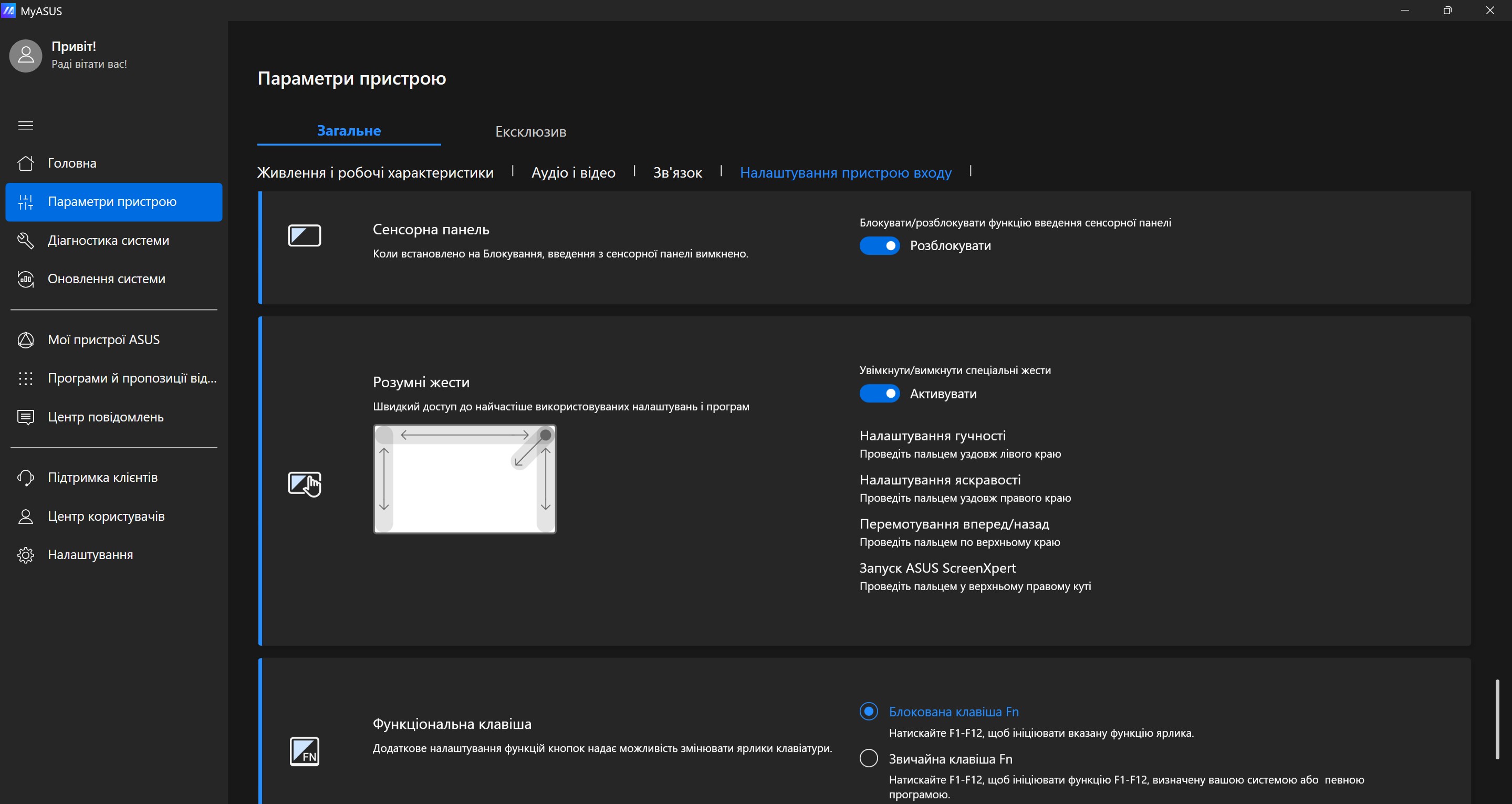
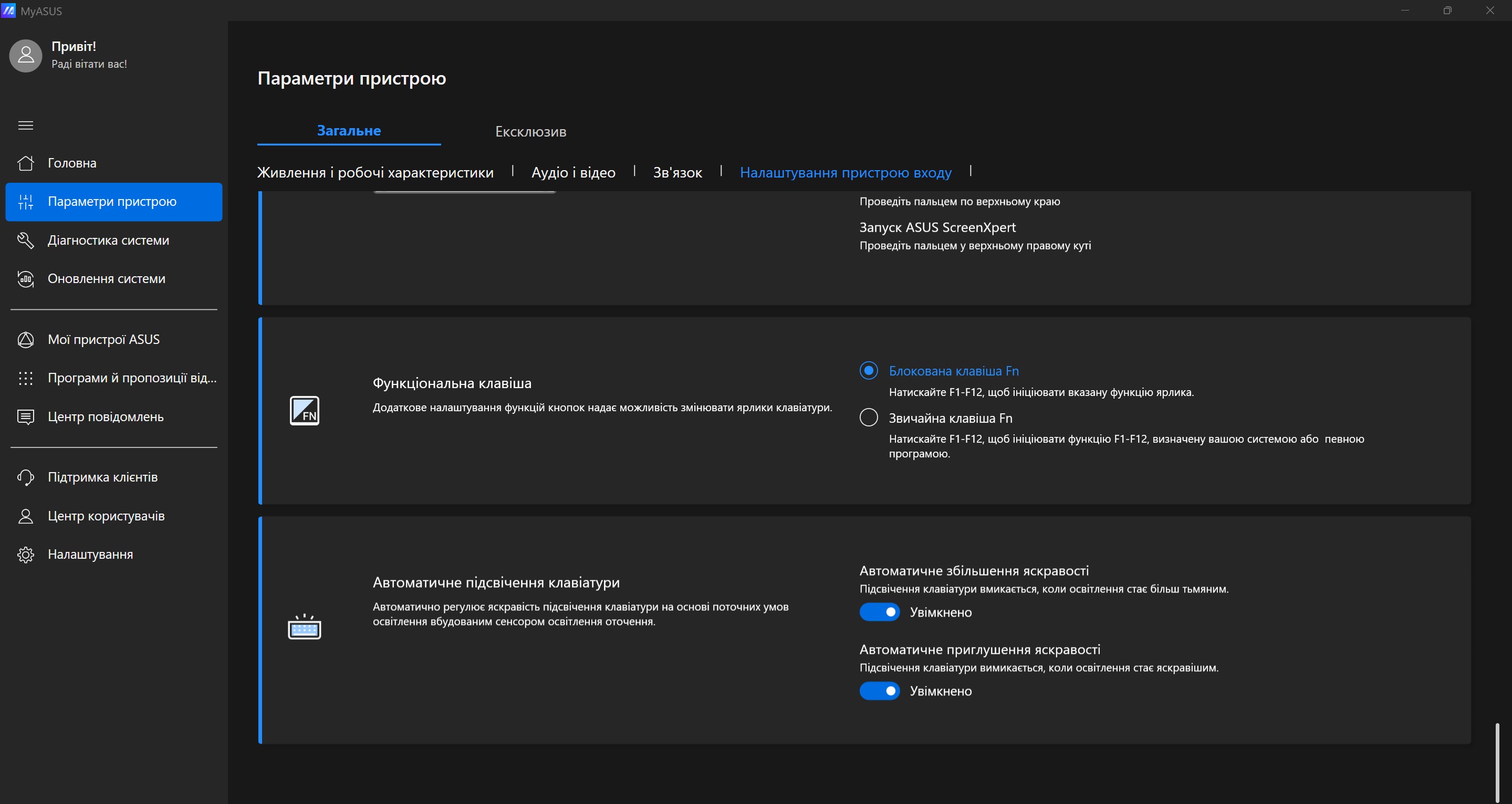
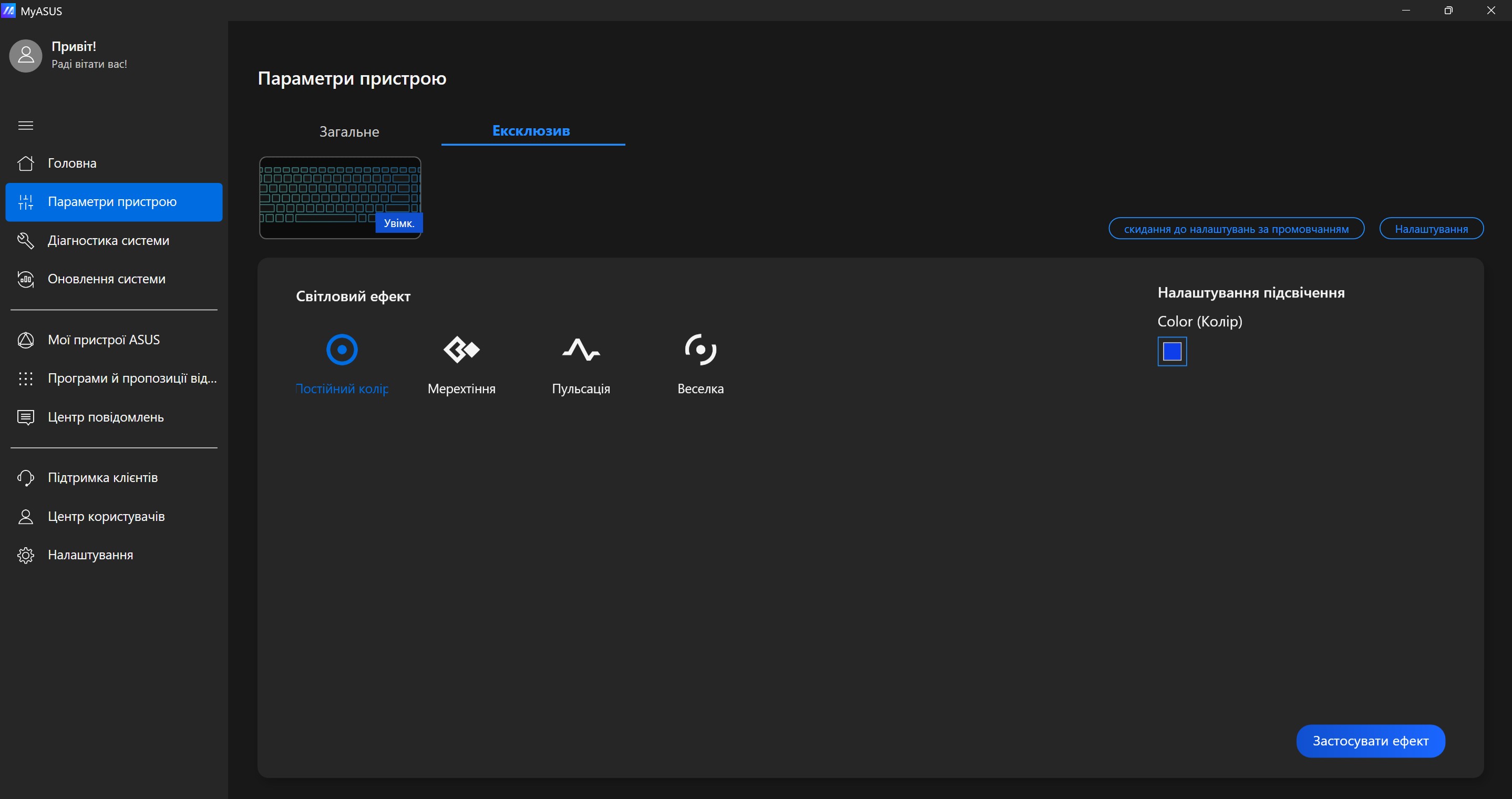
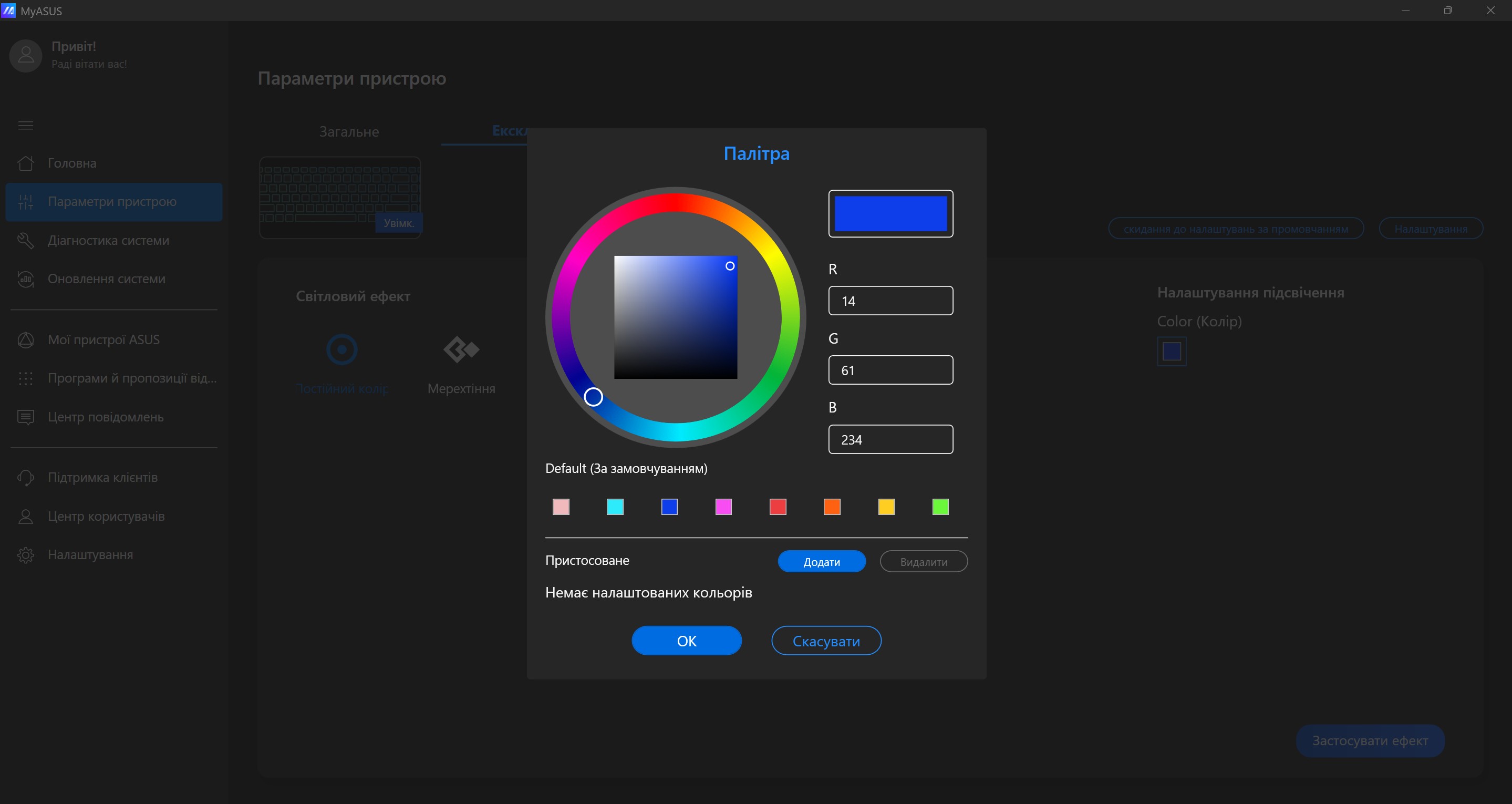
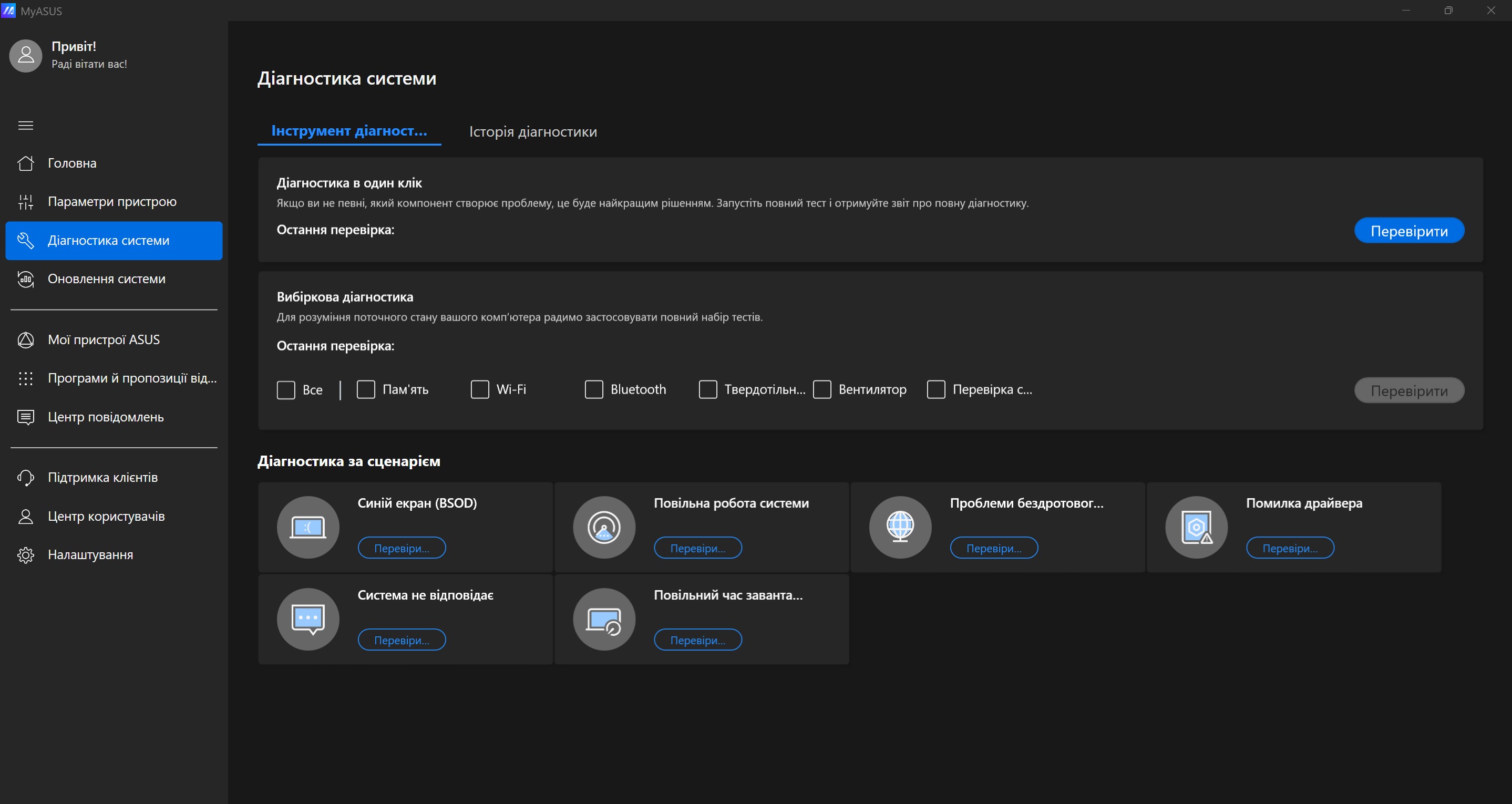
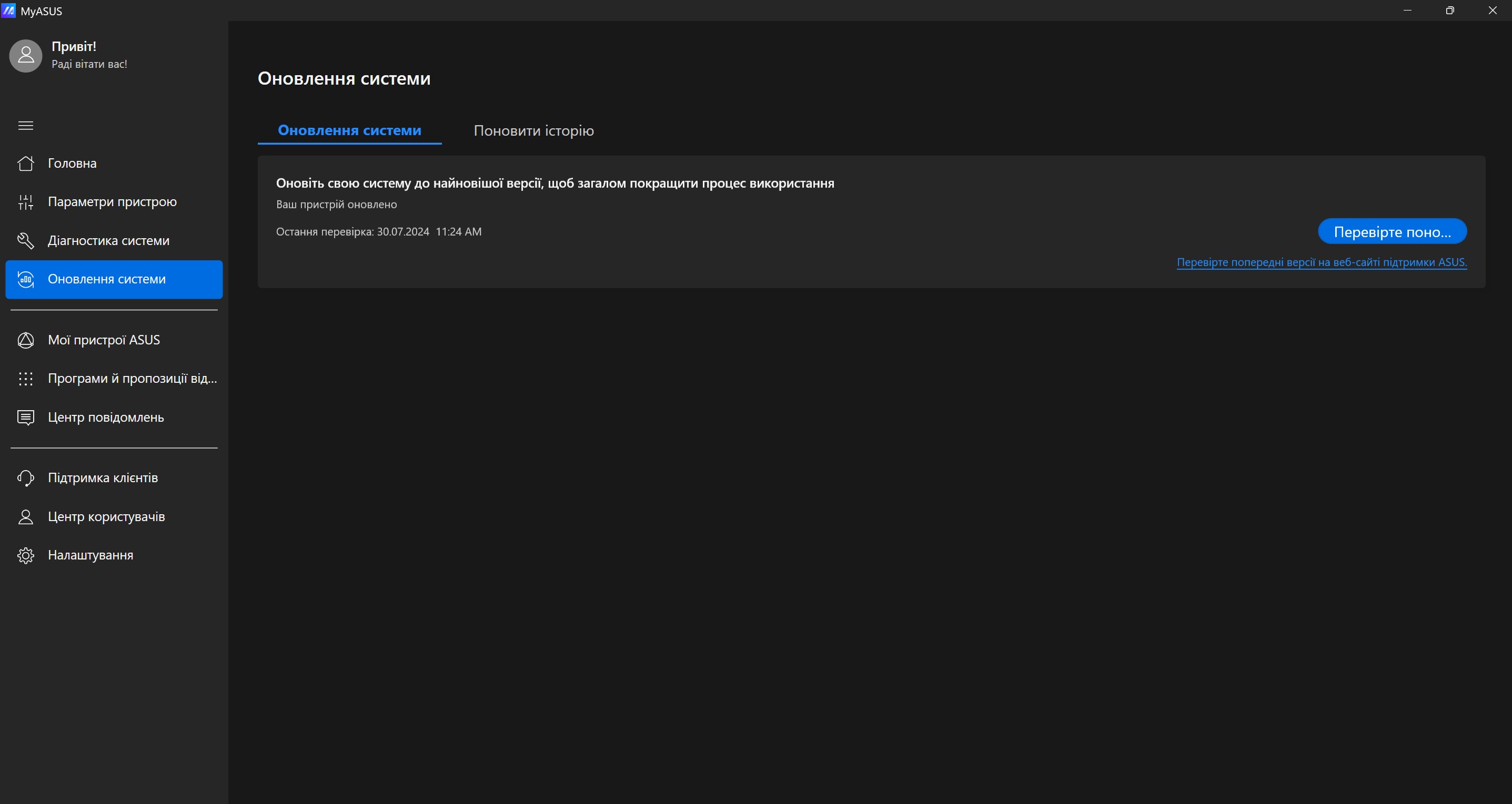




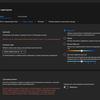
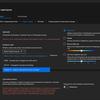


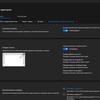





Besides that, there are a few others. The aforementioned StoryCube for organising personal photos and videos with automatic people recognition and appropriate sorting.


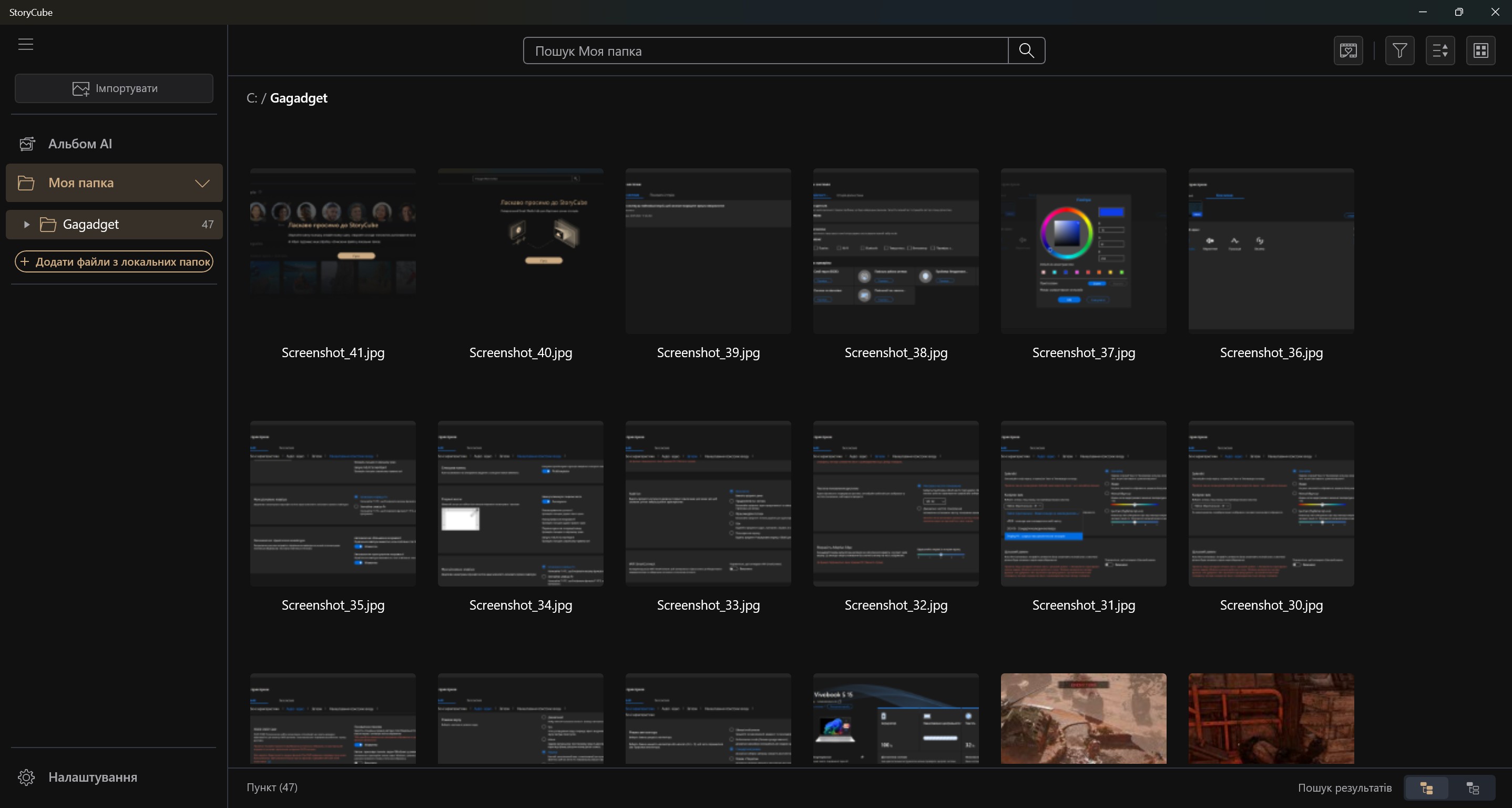



ScreenXpert: quick access to clipboard, screenshot tool and easy workspace customisation with multiple apps on the screen.
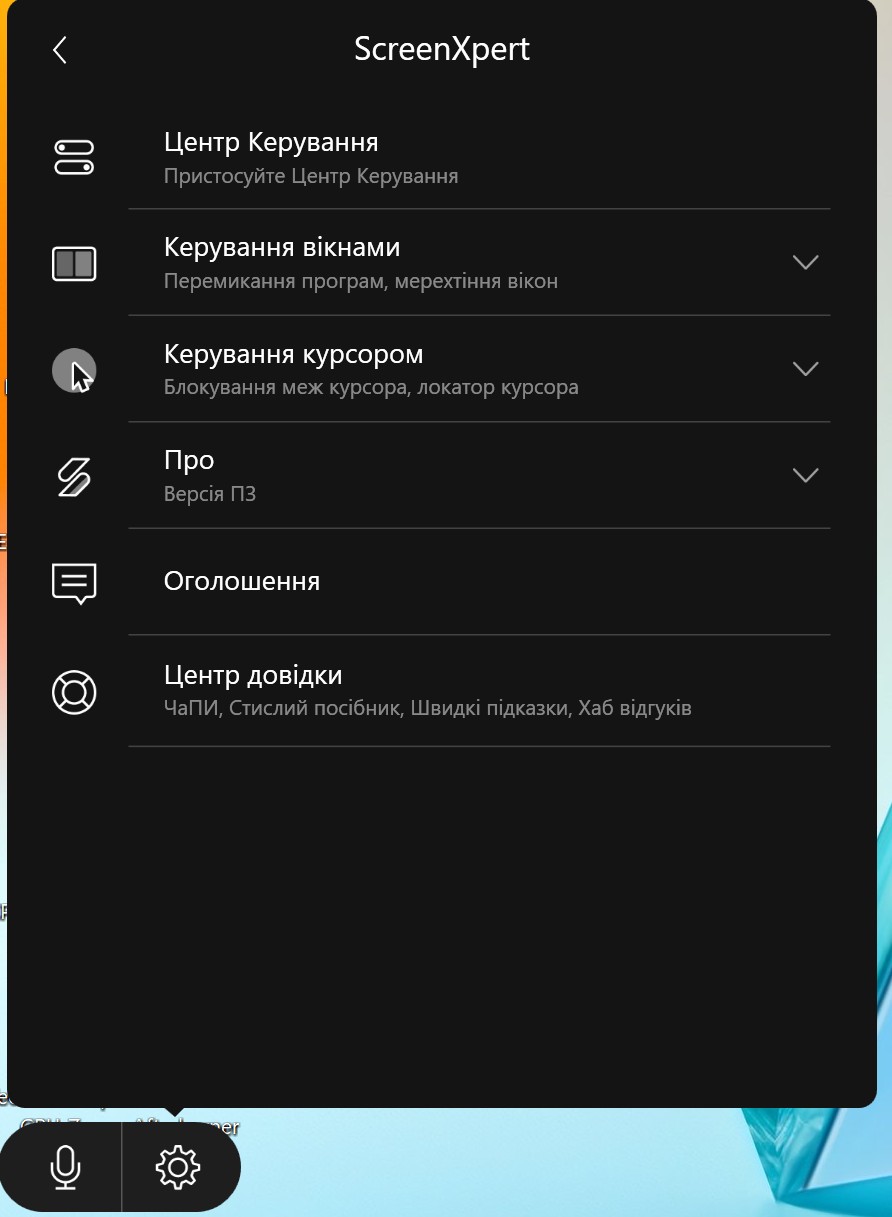
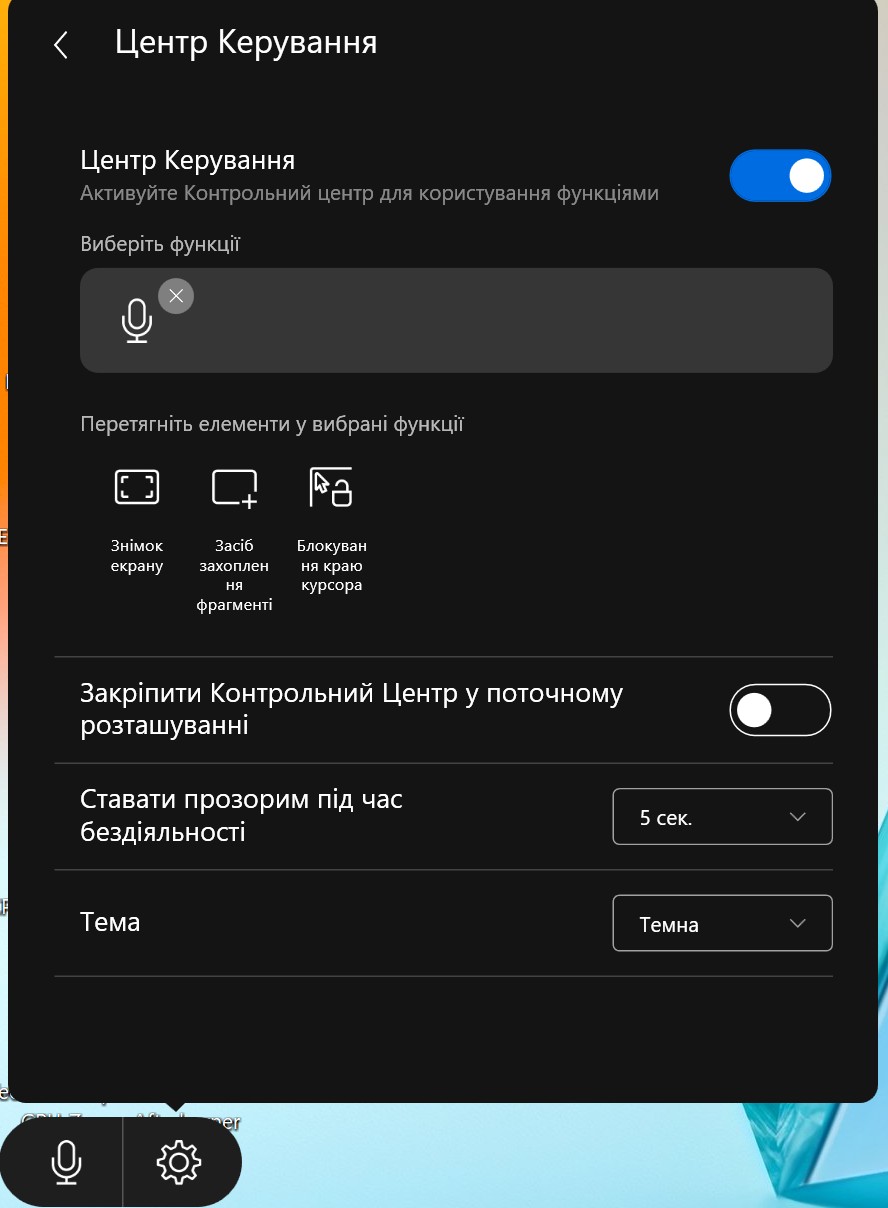
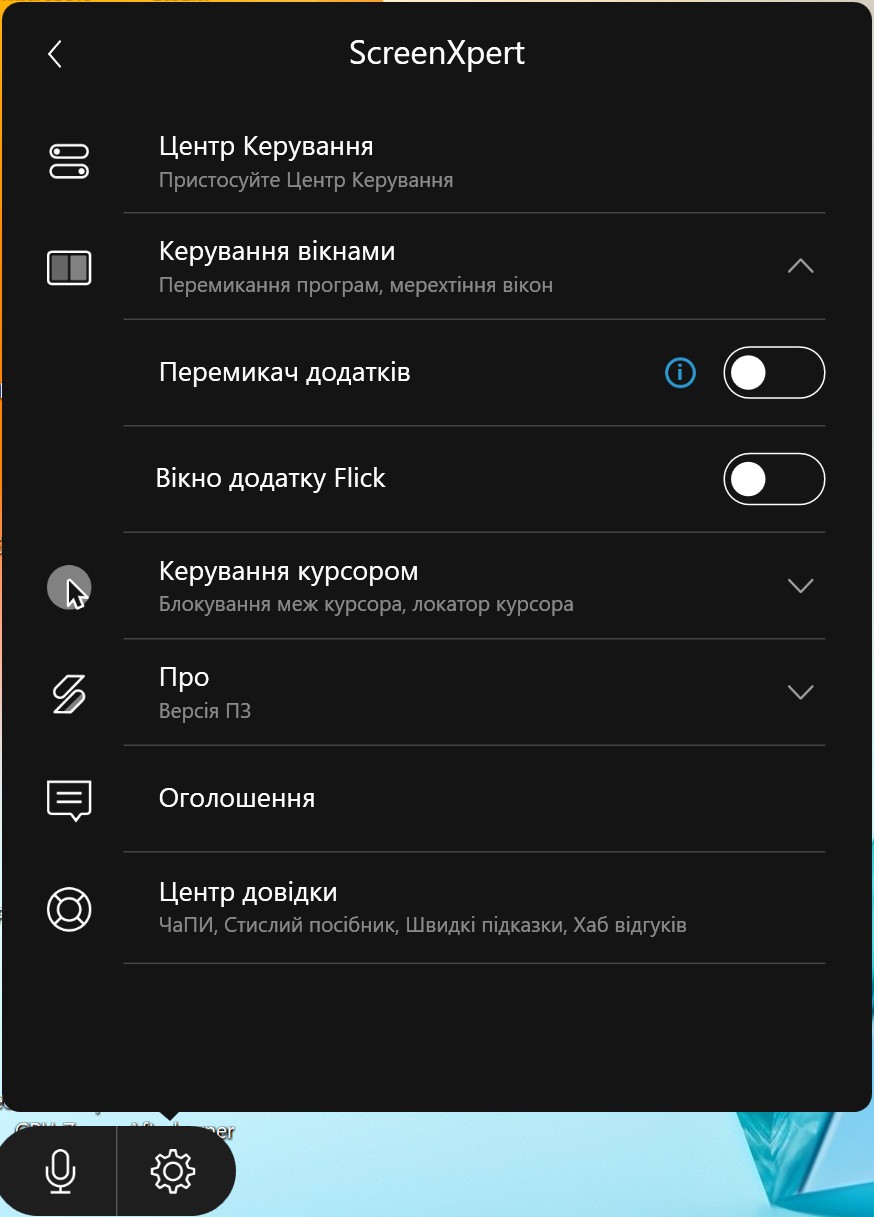
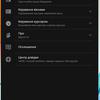
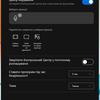

GlideX is a tool for easy laptop-smartphone interaction. Use it as an extra display, camera, extra toolbar and quick data transfer.

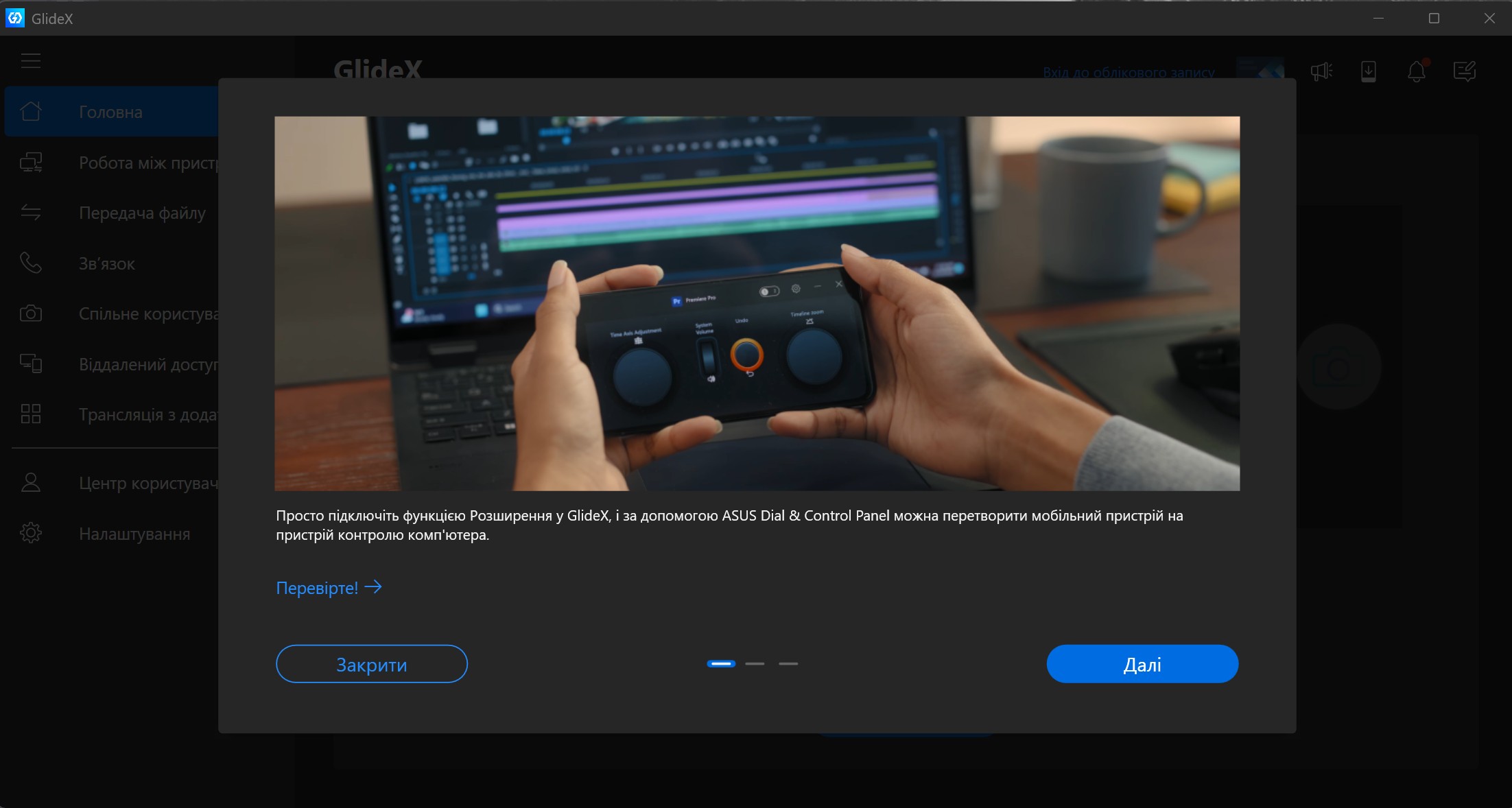
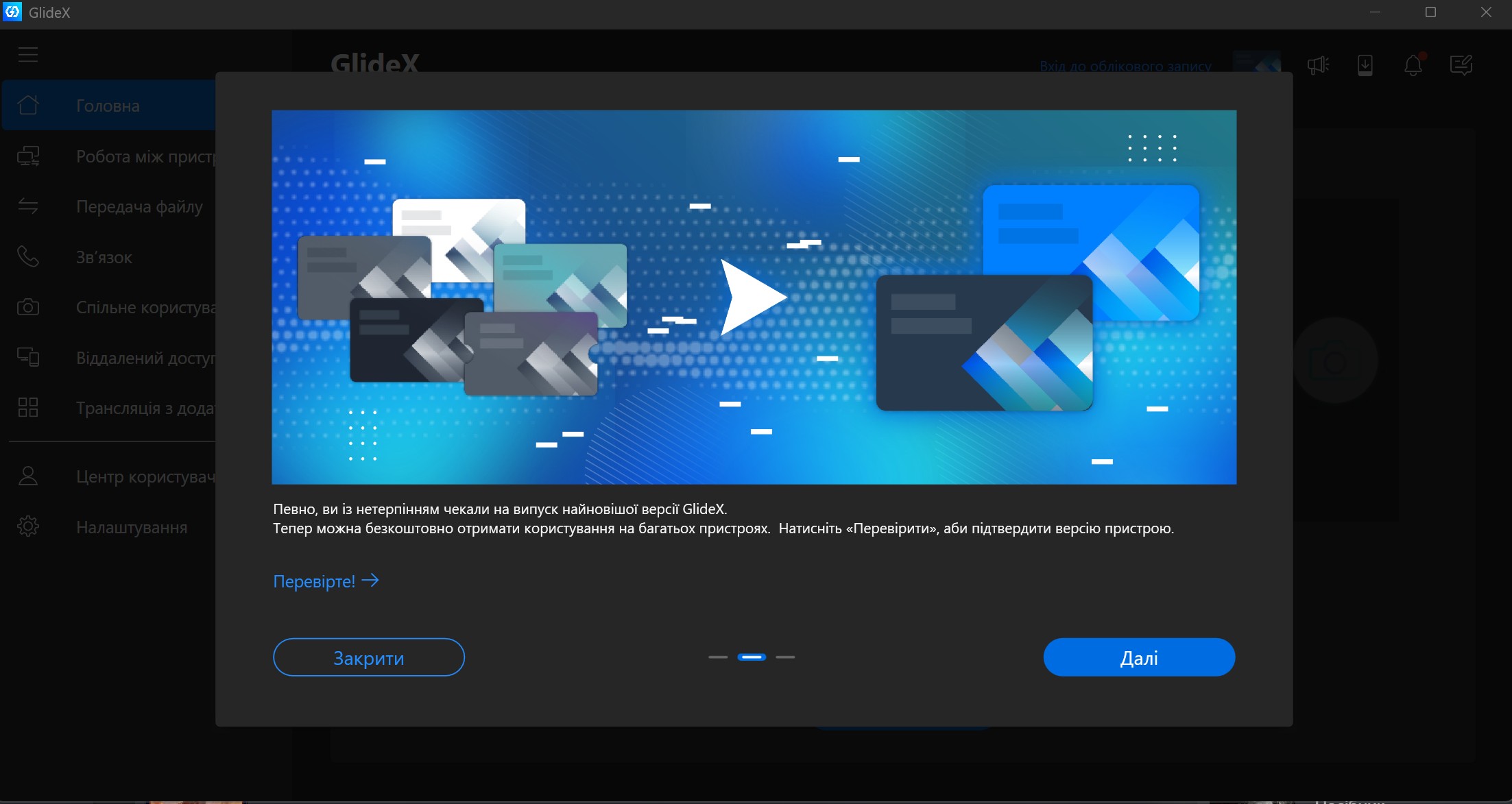







- Excellent battery life
- Bright OLED-display with a refresh rate of 120 Hz
- Stable performance under maximum loads
- Comfortable operation and a full set of necessary connectors
- Stylish metal case with certification MIL-STD-810H
In the dry. Four things to know about ASUS Vivobook S 15 (S5507).
- ASUS Vivobook S 15 is one of the first ARM-based Qualcomm Snapdragon X Elite processor notebooks available.
- Capable of more than 10 hours of battery life.
- Features a gorgeous 15.6-inch OLED display with 120Hz refresh rate.
- Features a full-size RGB backlit keyboard.
| Specifications ASUS Vivobook S 15 (S5507) | |
|---|---|
| Display | 15.6-inch, 3K 2880 x 1620 (16:9), OLED, 120Hz, 0.2ms pixel response time, glossy finish |
| Dimensions | 352.6x226.9x15.9mm |
| Weight | 1.42 kg |
| Operating System | Windows 11 |
| Processor | Qualcomm Snapdragon X Elite X1E 78 100, 3.4GHz (42MB cache, up to 3.4GHz, 12 cores, 12 threads); Qualcomm AI Engine up to 75 TOP |
| RAM | 32GB LPDDR5X |
| Graphics | Qualcomm Adreno 3.8 TFLOPS |
| Storage | SSD 1TB M.2 PCIe Gen4 x4 NVMe |
| Communications | Wi-Fi 7 (802.11a/b/g/n/ac/ax/be), Bluetooth 5.4 |
| Connectors | HDMI 2.1 TMDS, 2xUSB 4.0 Gen 3 Type-C (DisplayPort, Power Delivery), 2x USB 3.2 Gen 1 Type-A, MicroSD, 3.5mm audio jack. |
| Webcam | FullHD 1080p webcam, IR camera |
| Battery | 70Wh |

For those who want to know more:
- ASUS ROG Strix SCAR 18 (2024) review
- Acer Predator Helios 16 review
- ASUS Zenbook Pro 14 OLED (UX6404) review: compact laptop with Intel Core i9 and GeForce RTX 4060
- The last one to leave the office: ASUS ExpertBook B9 OLED review with 9-hour battery life
- Lenovo Legion Pro 7 review: a powerful gaming laptop with Intel Core i9 and RTX 4090
